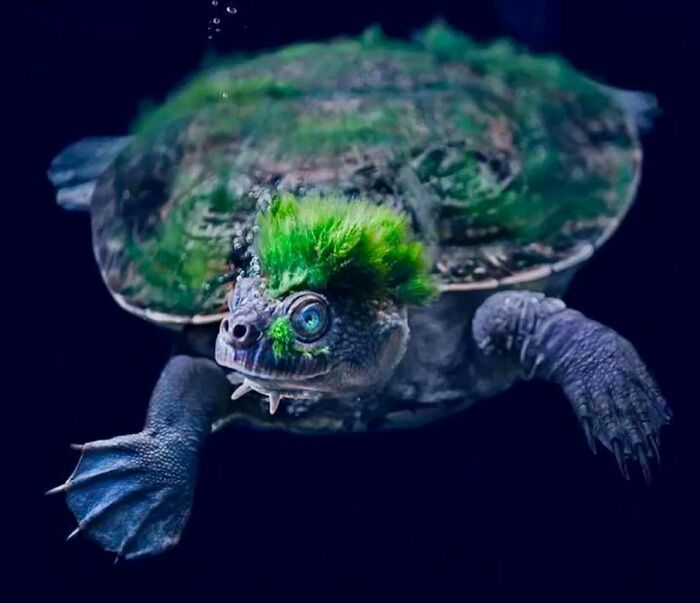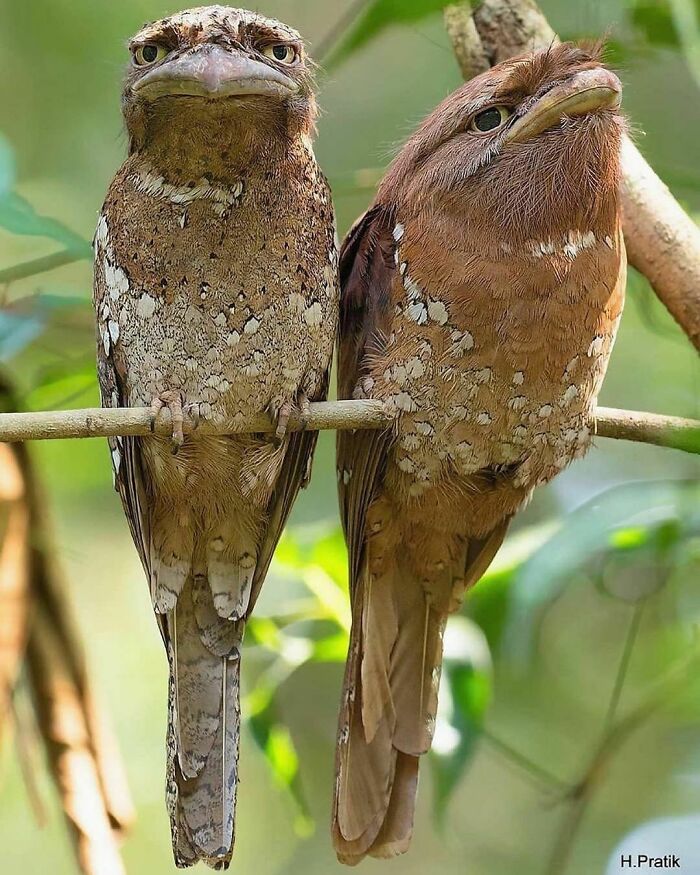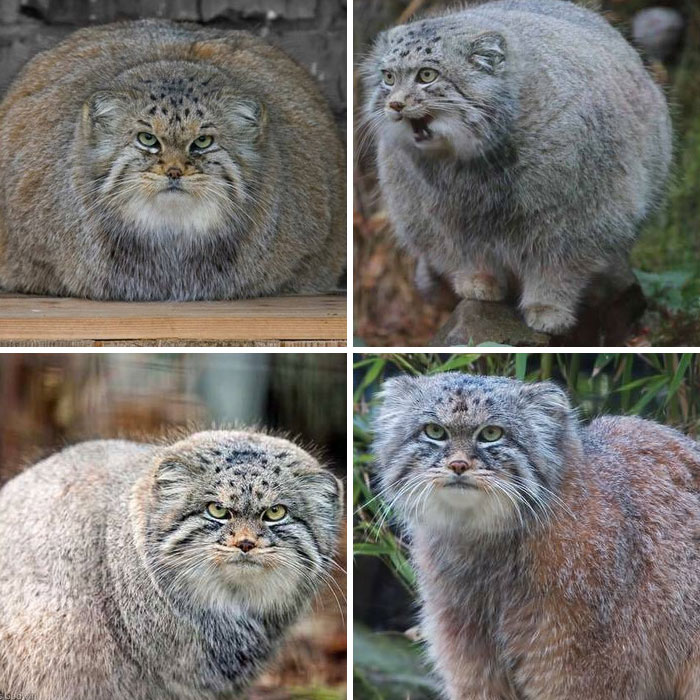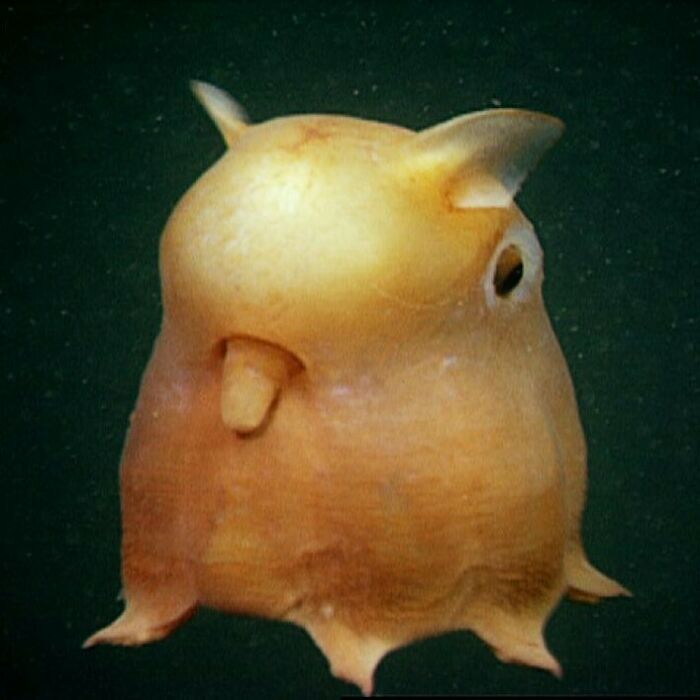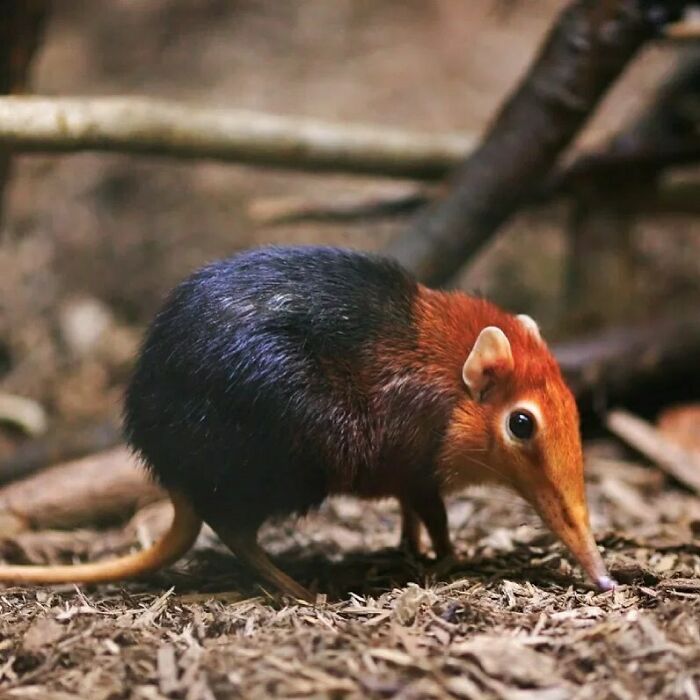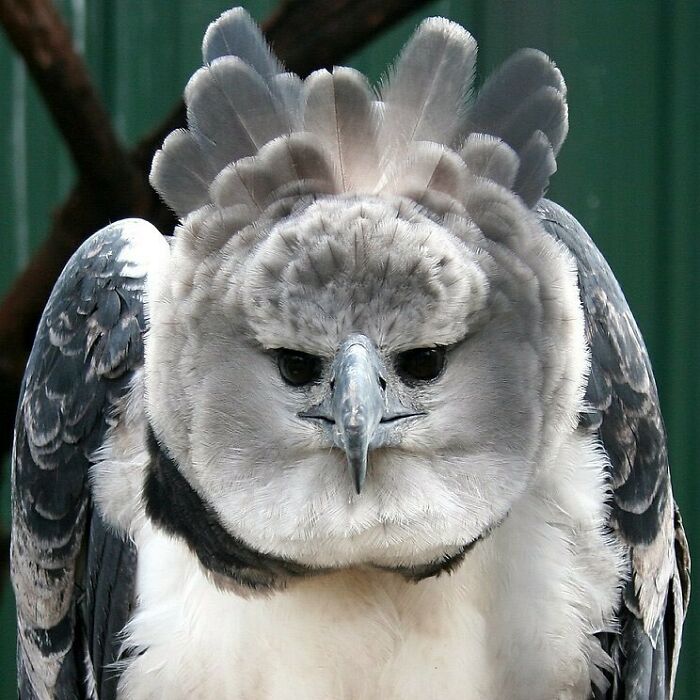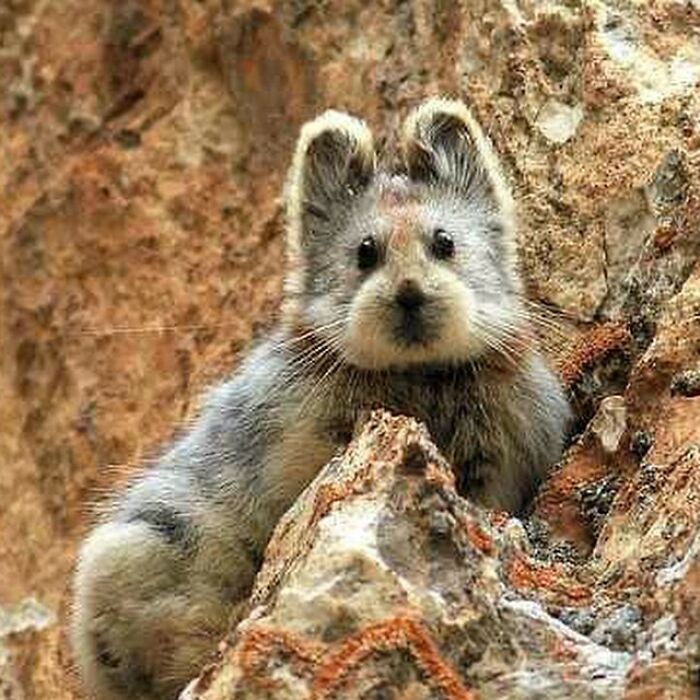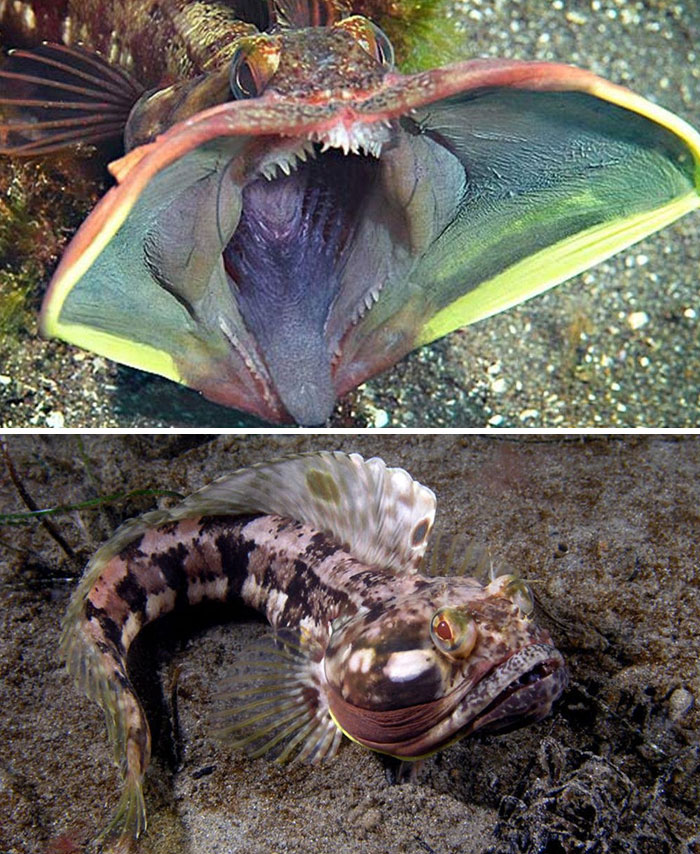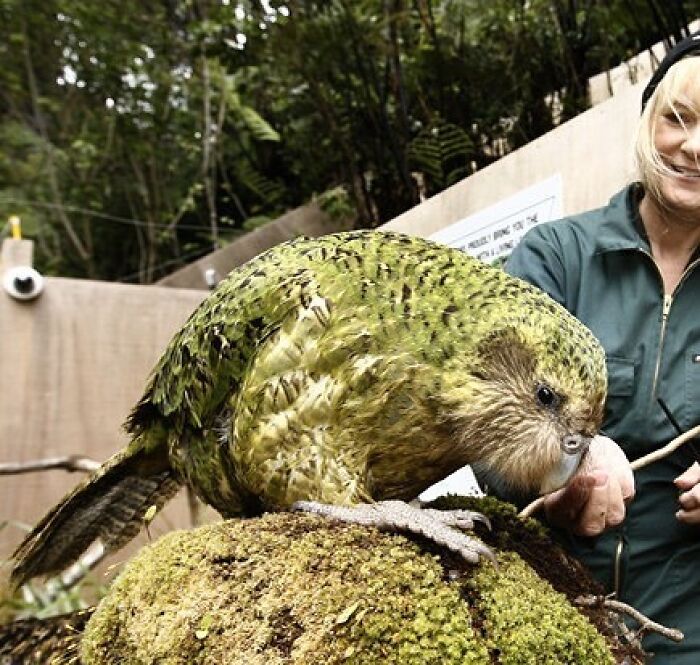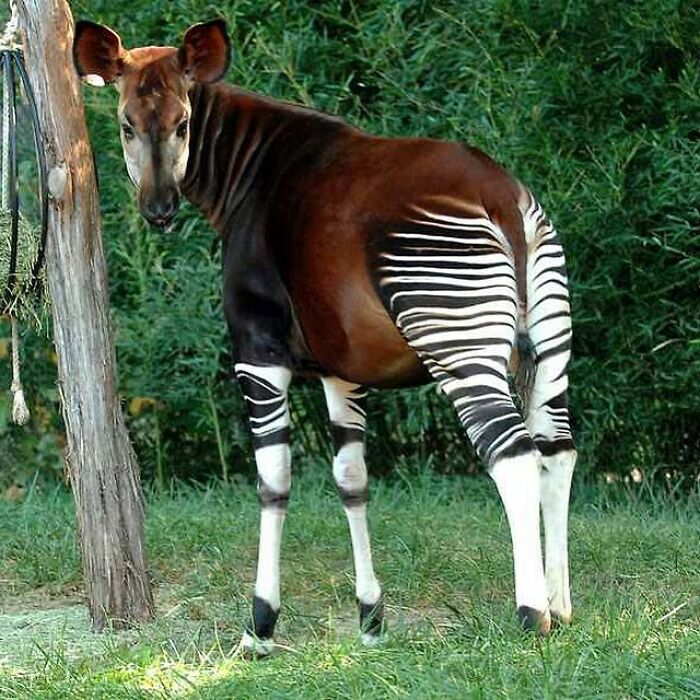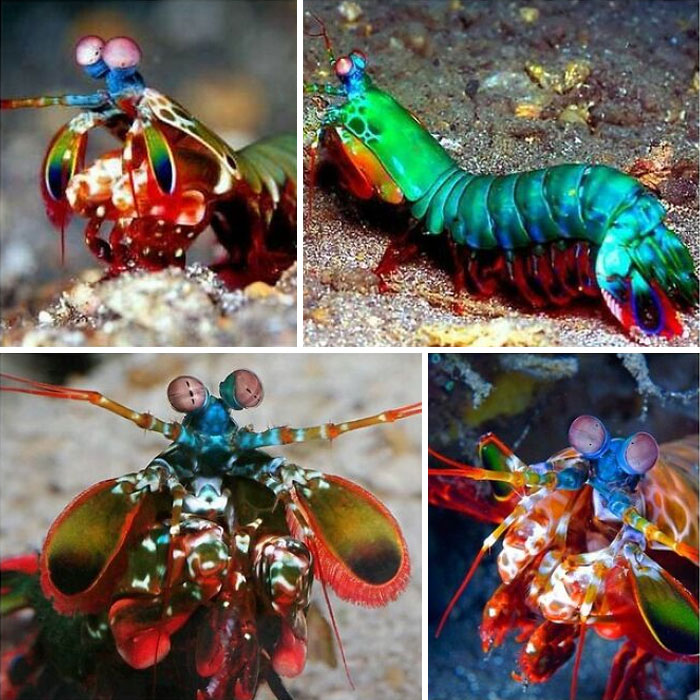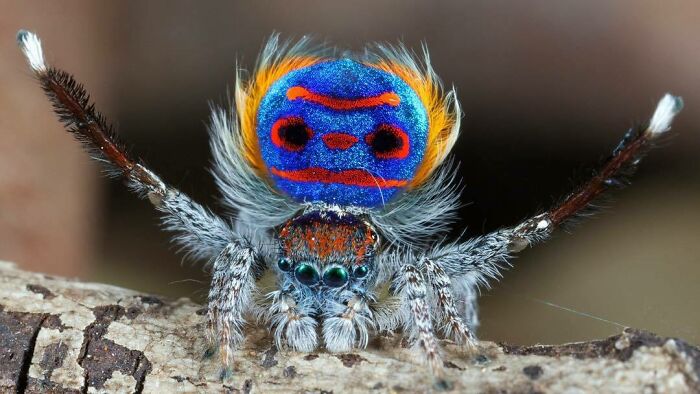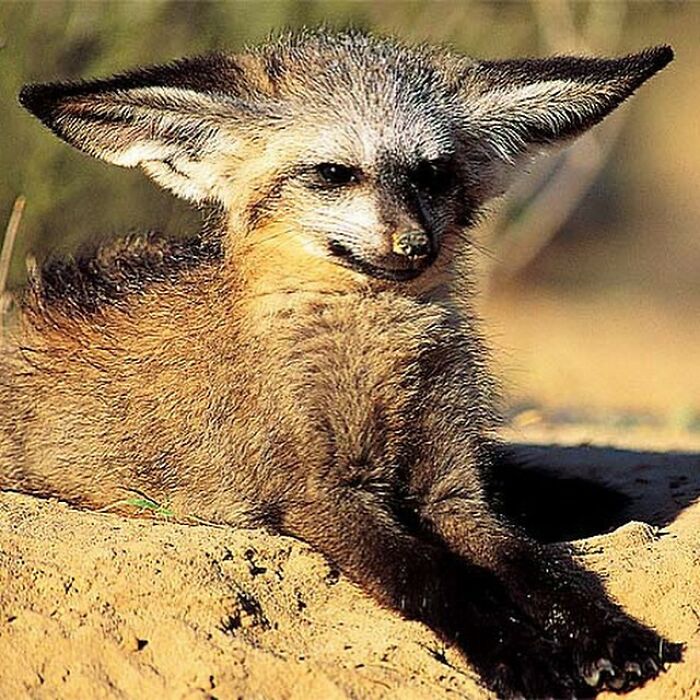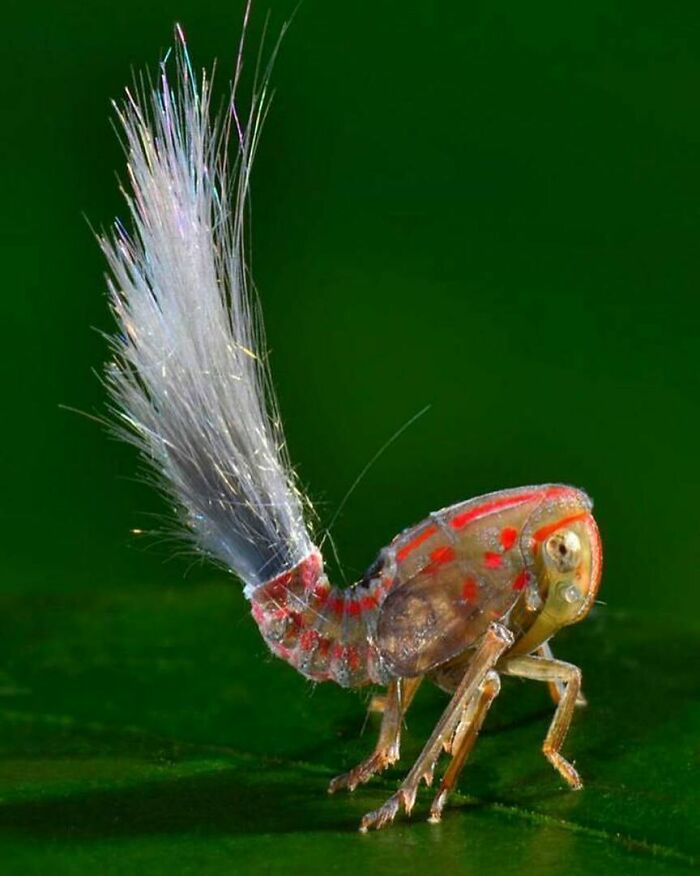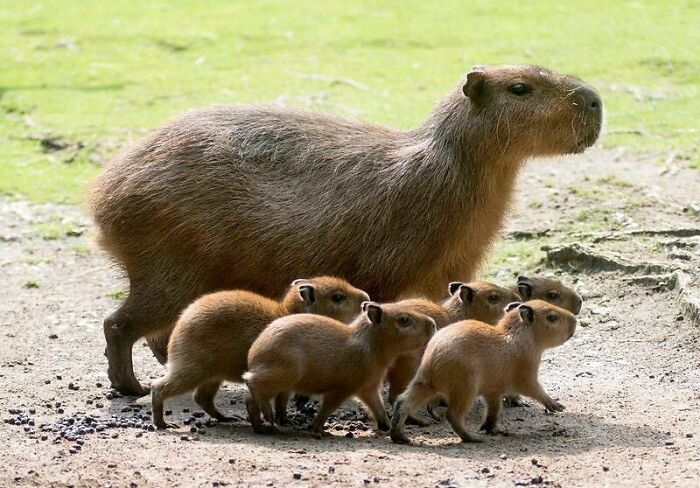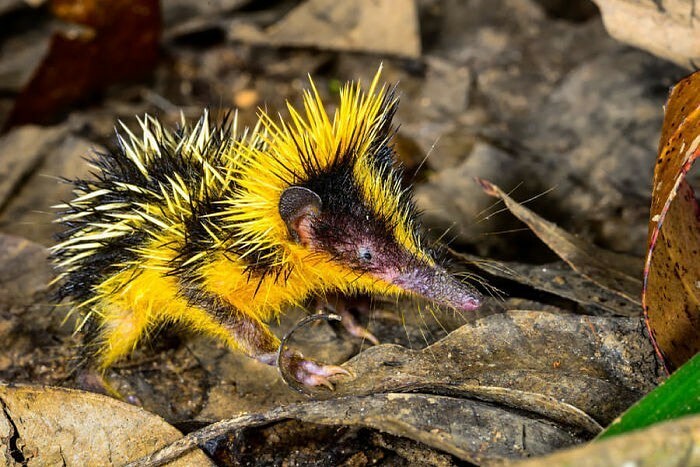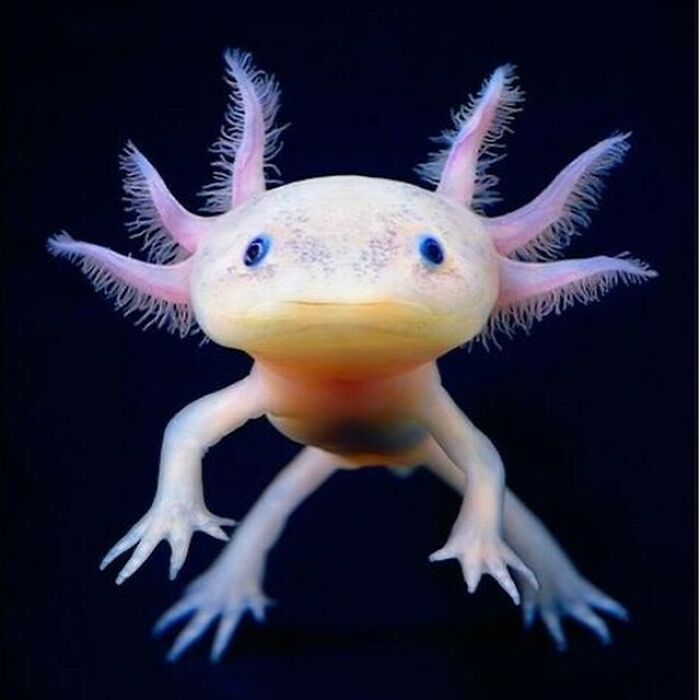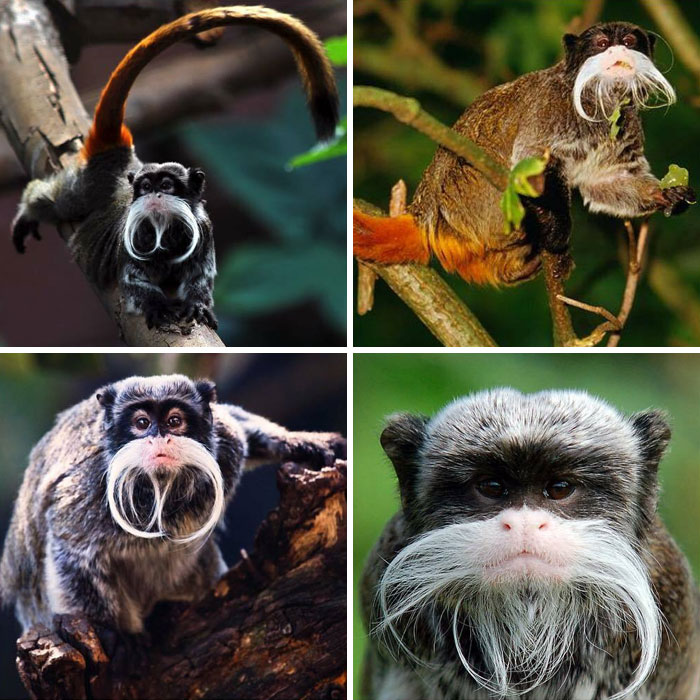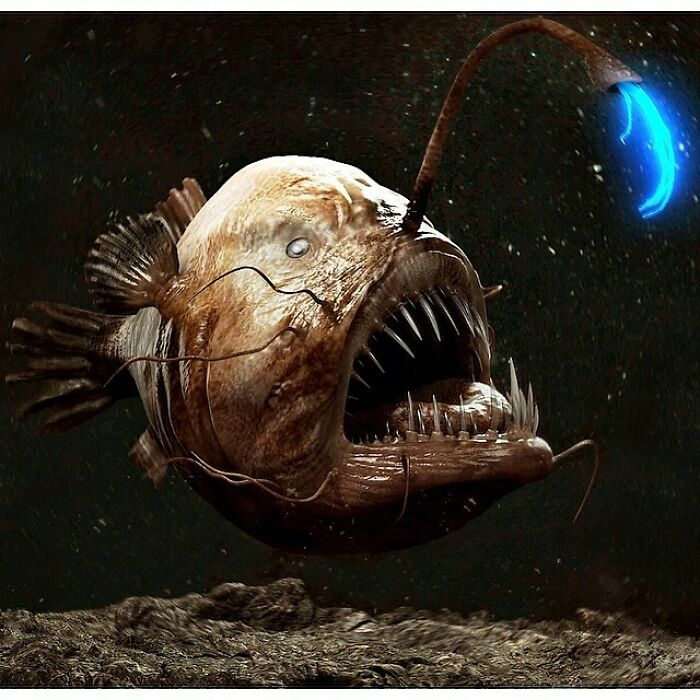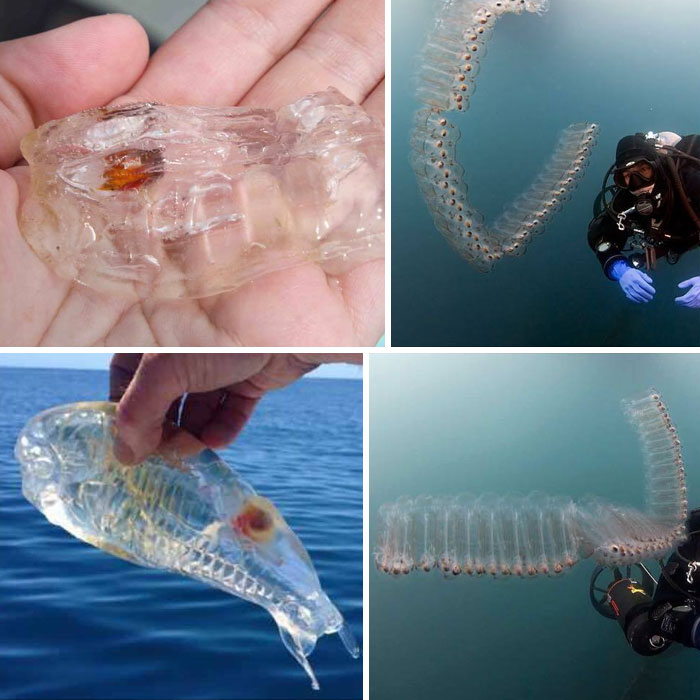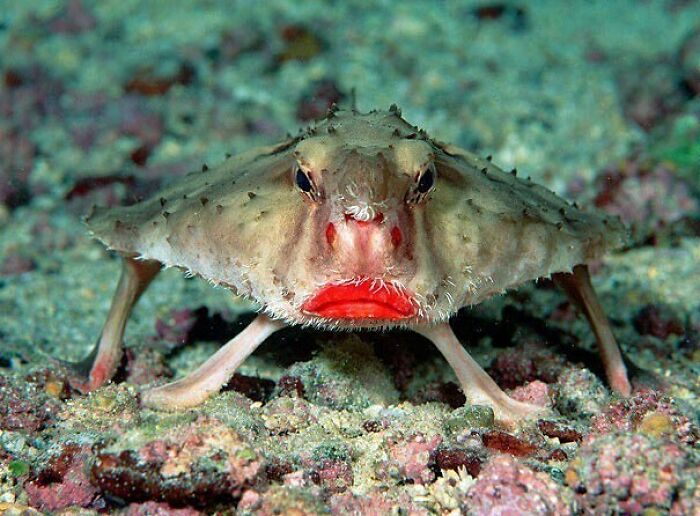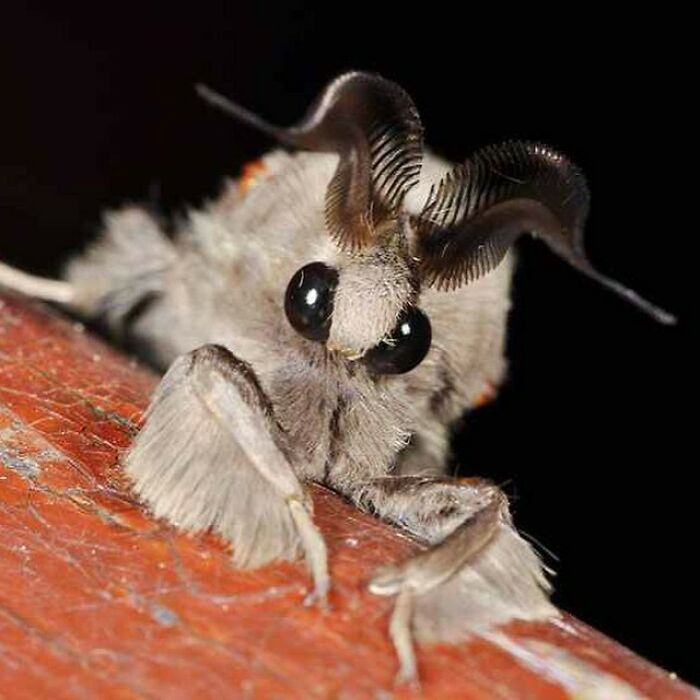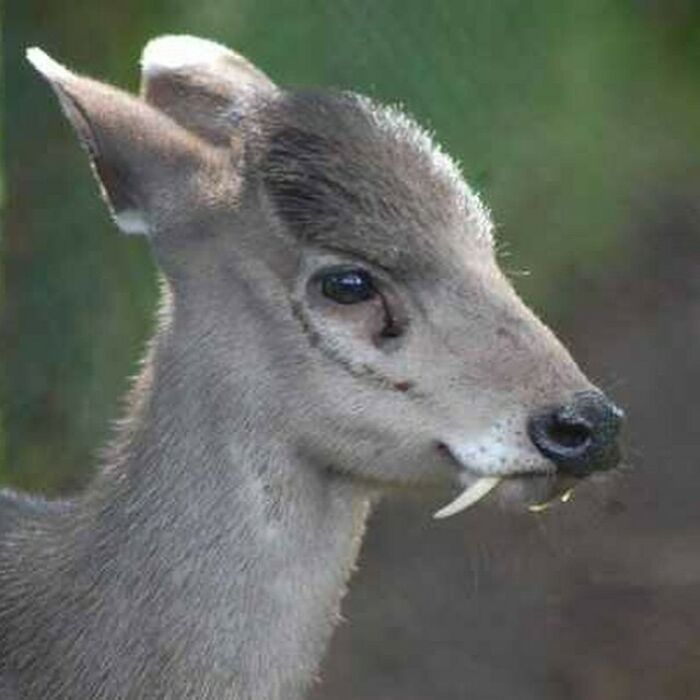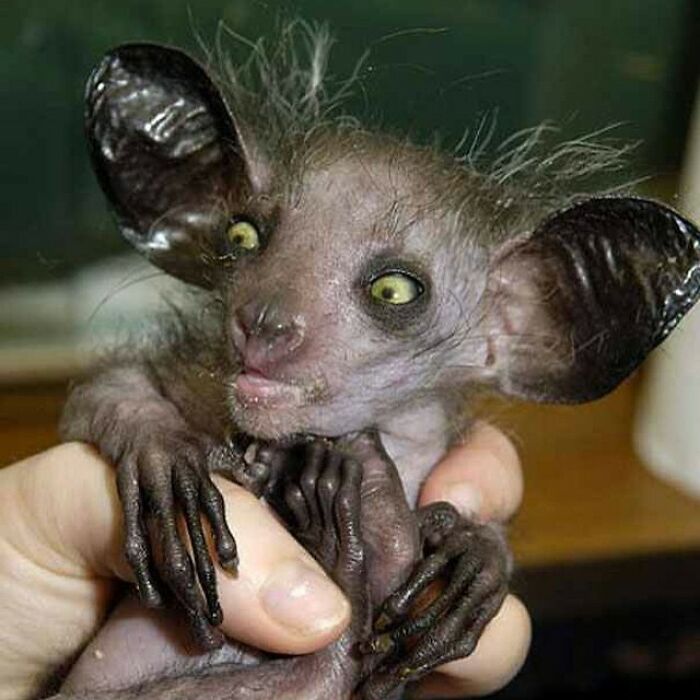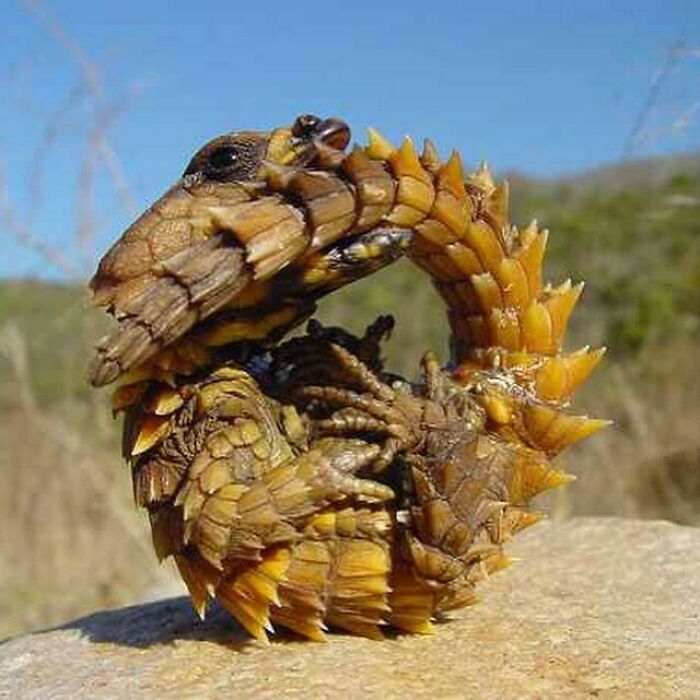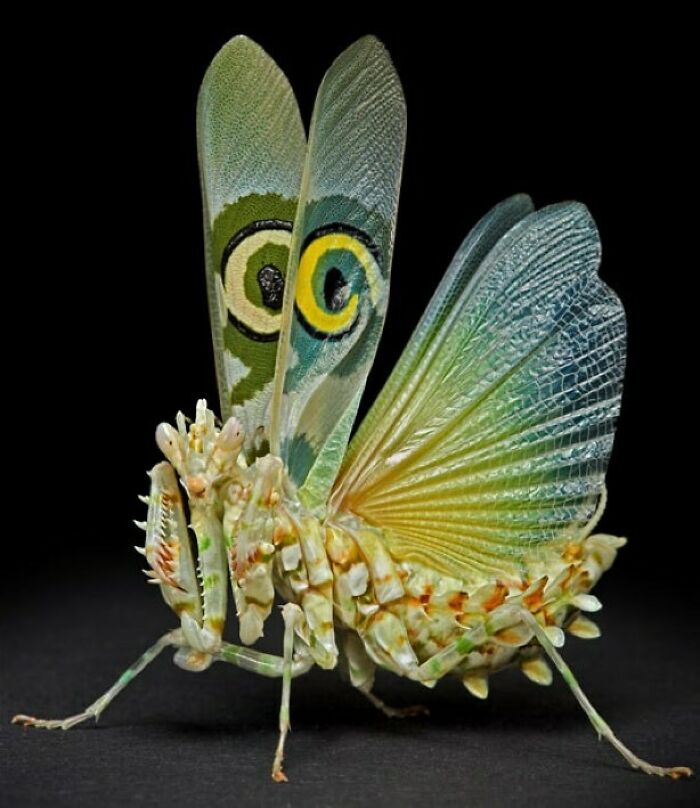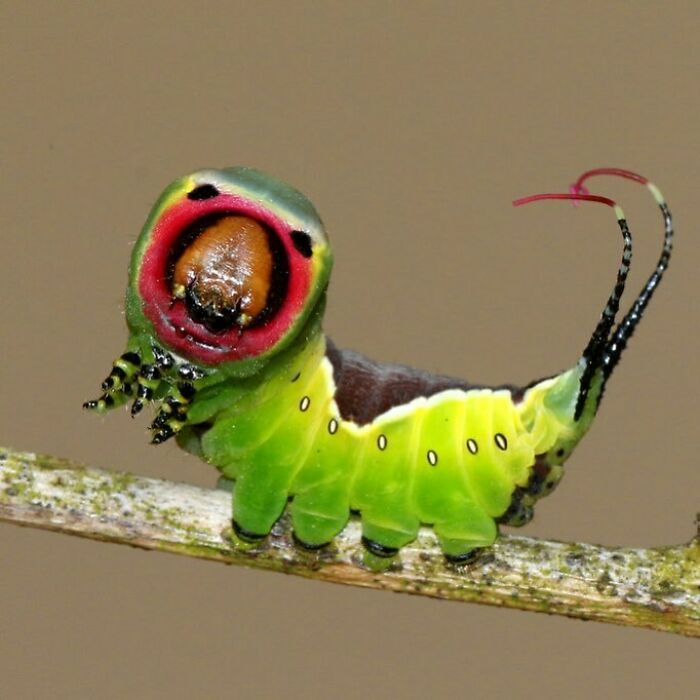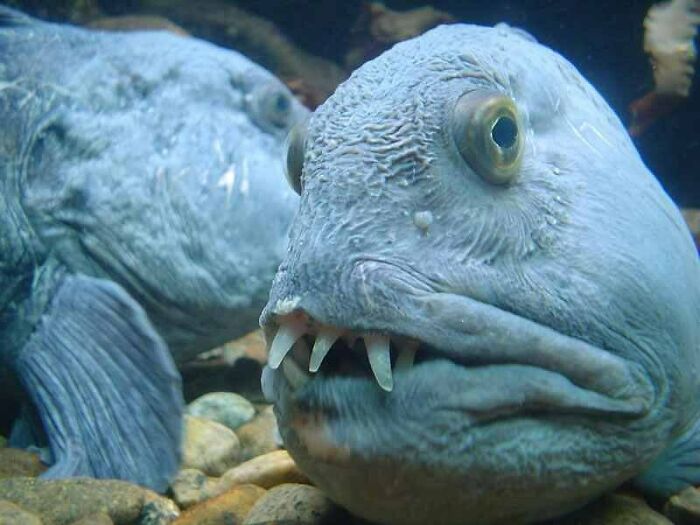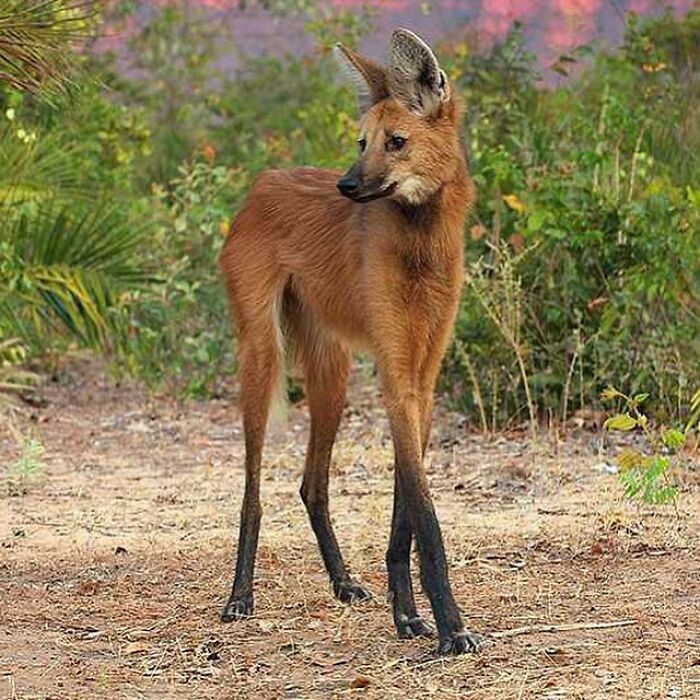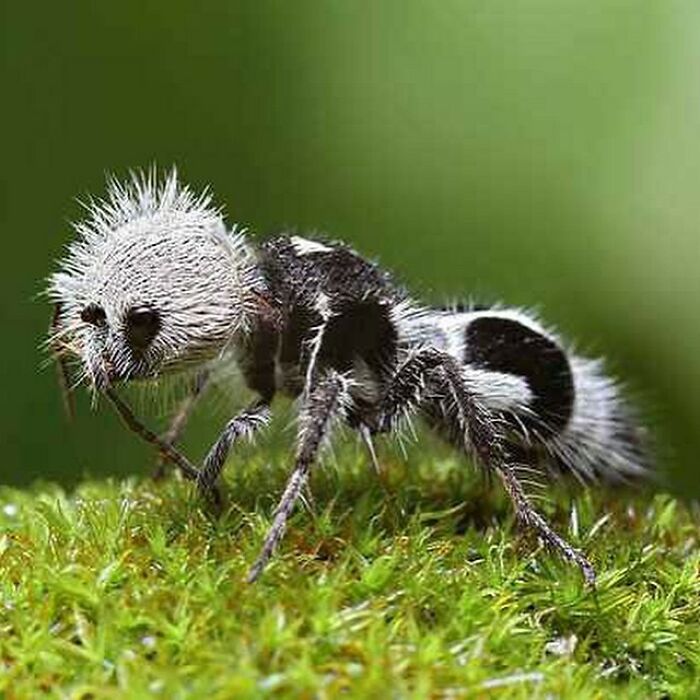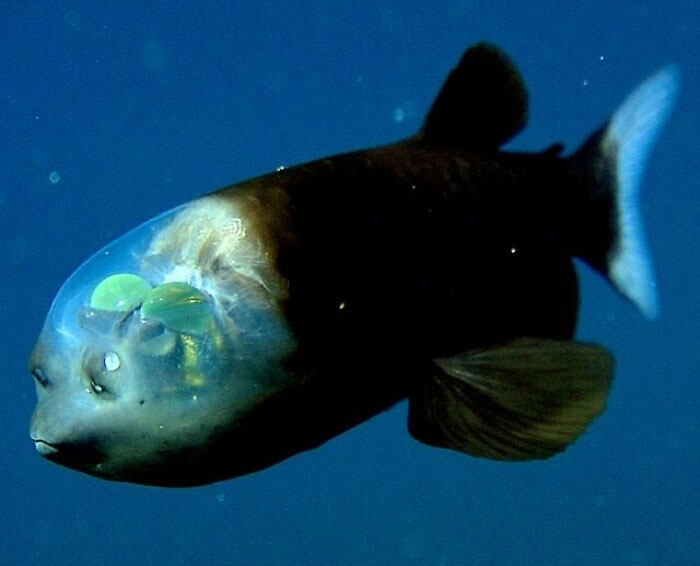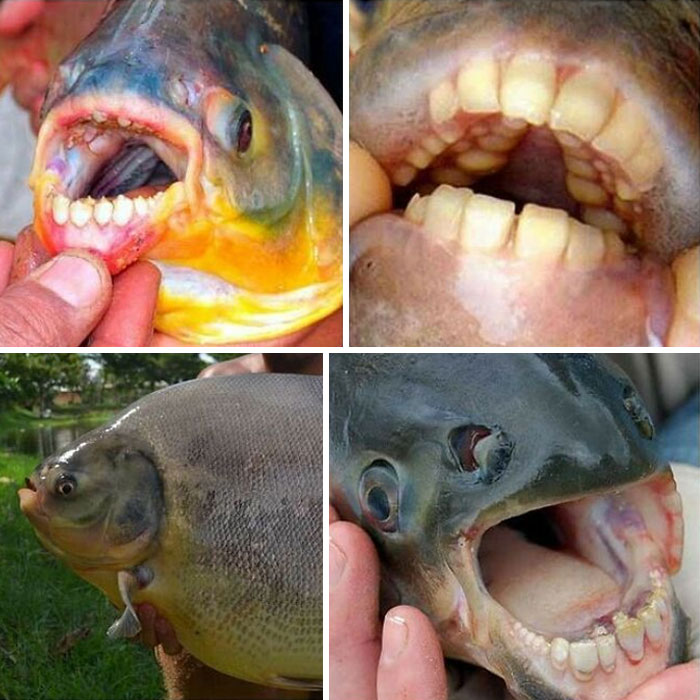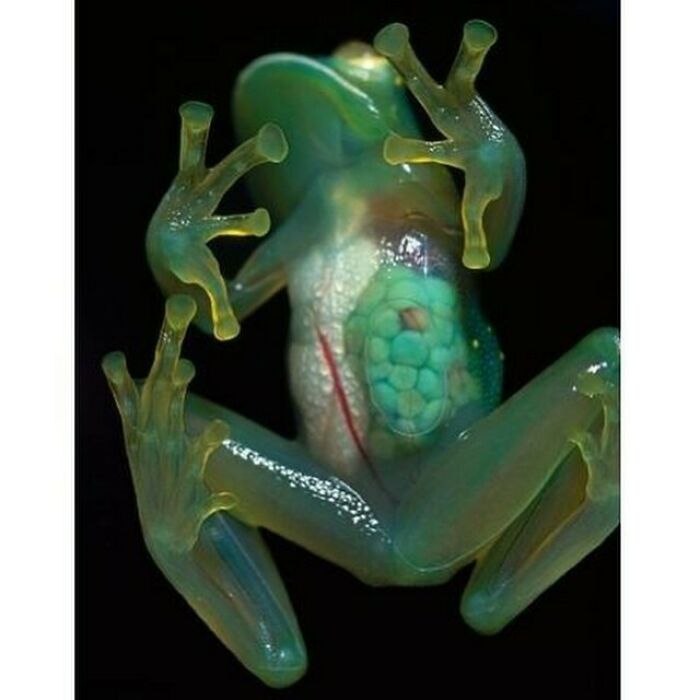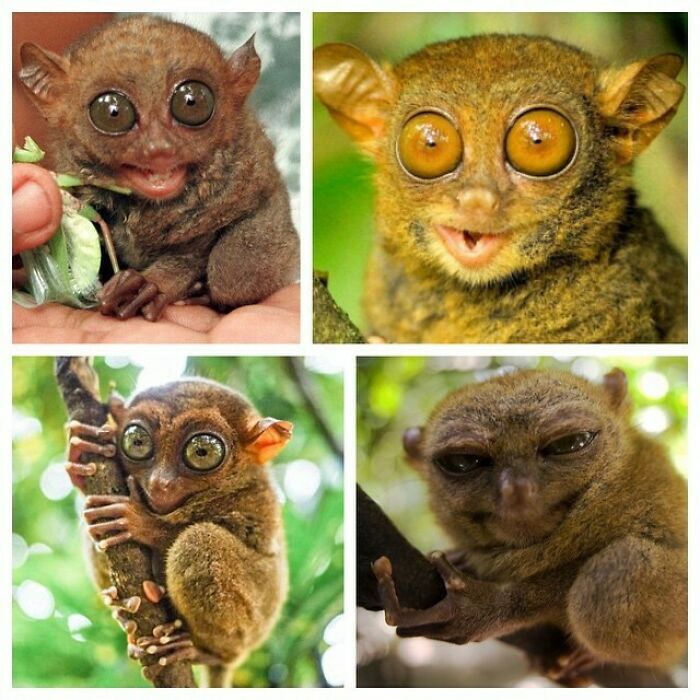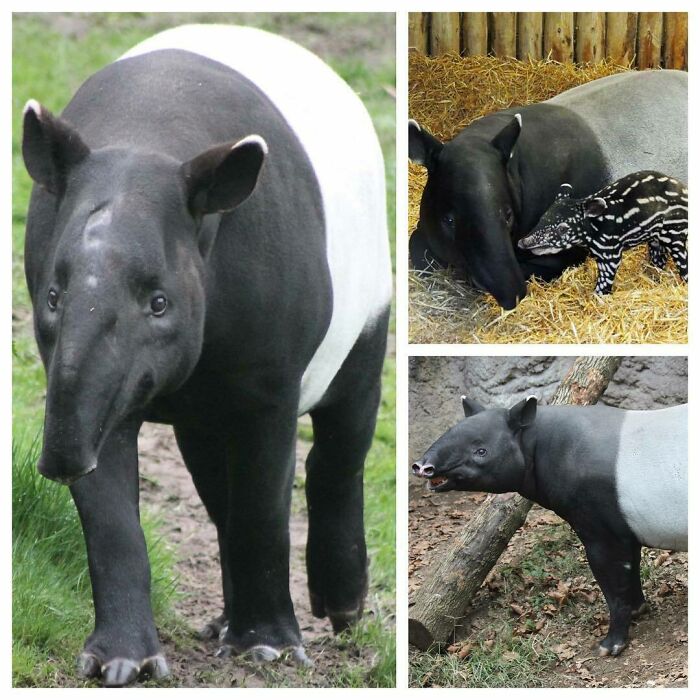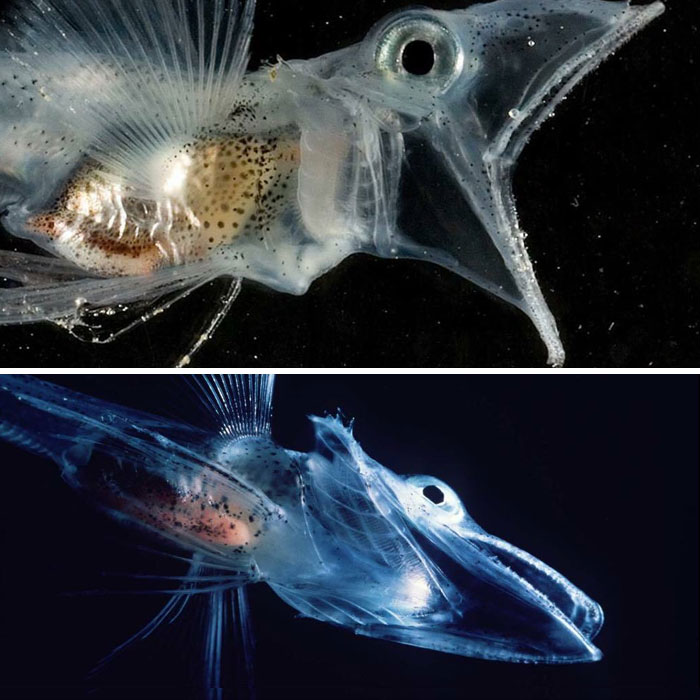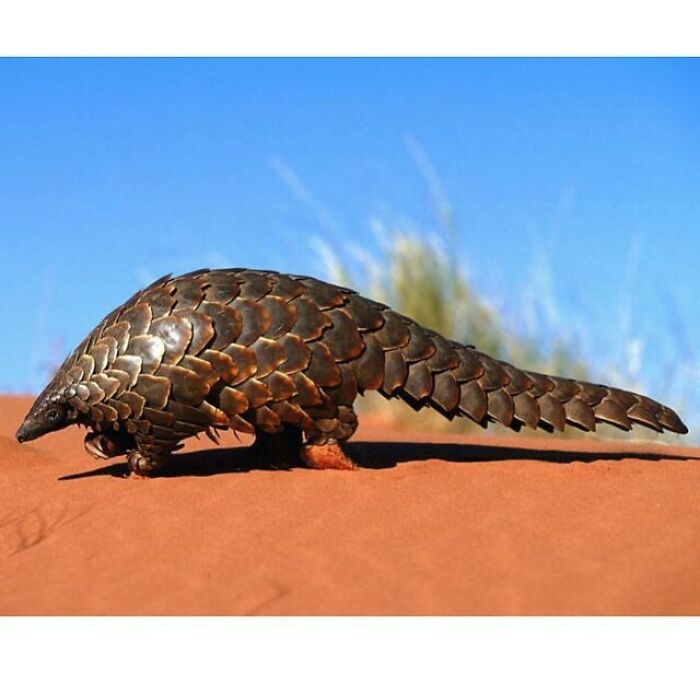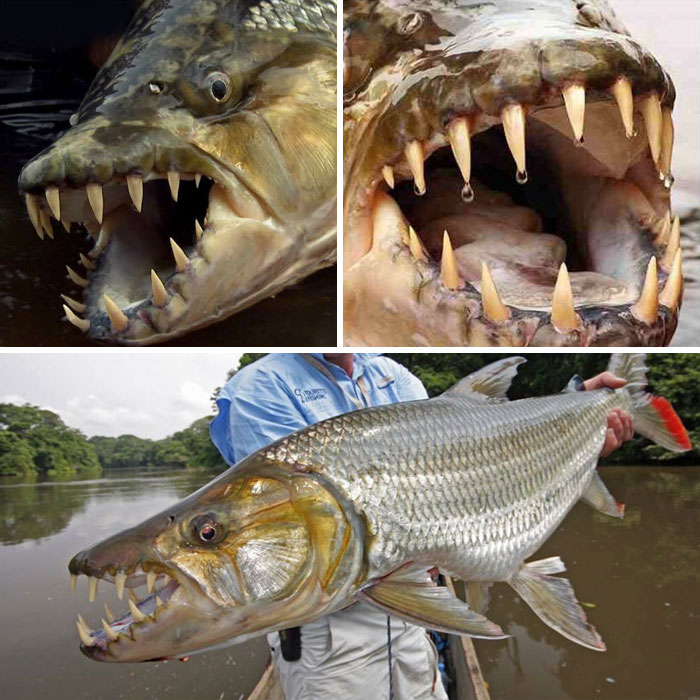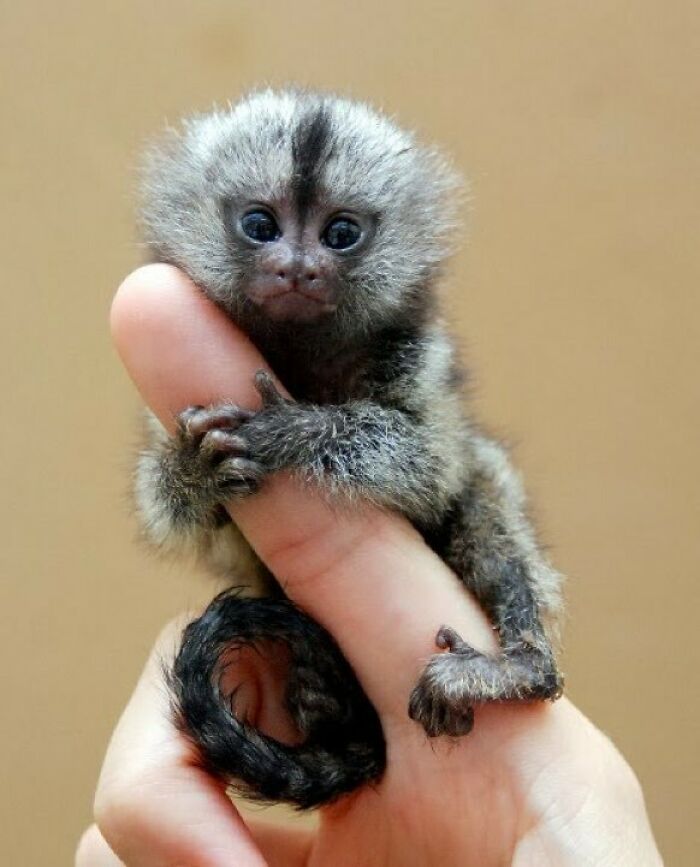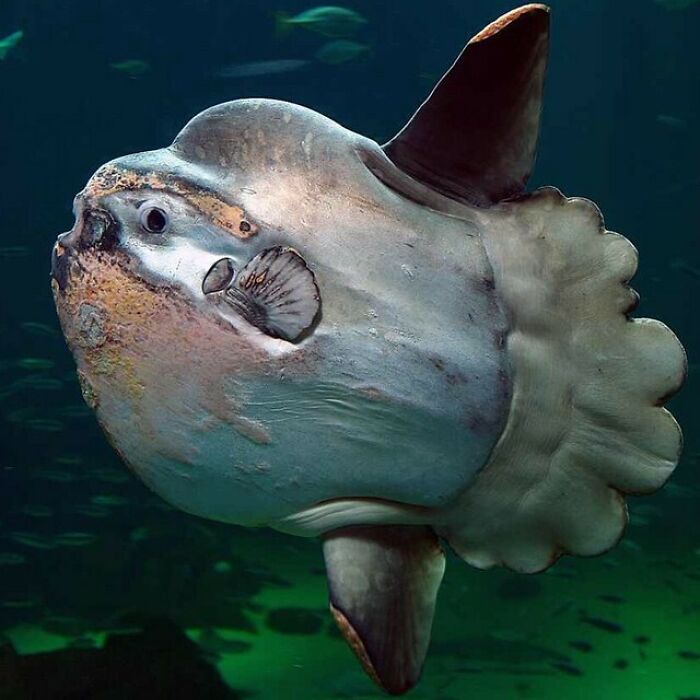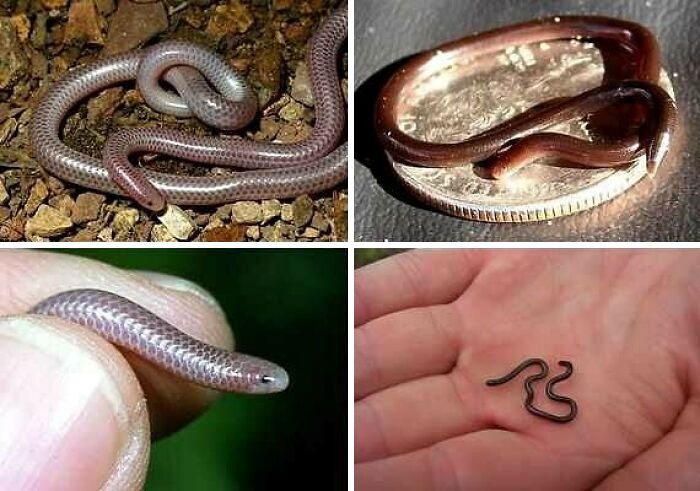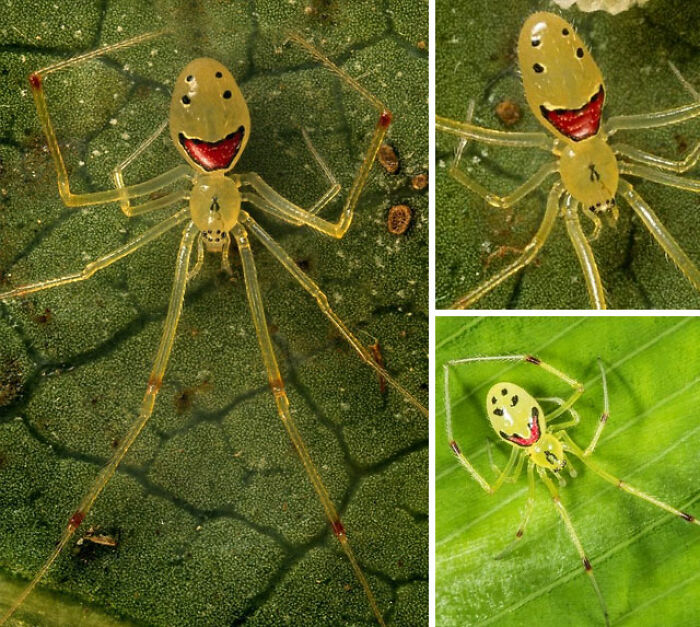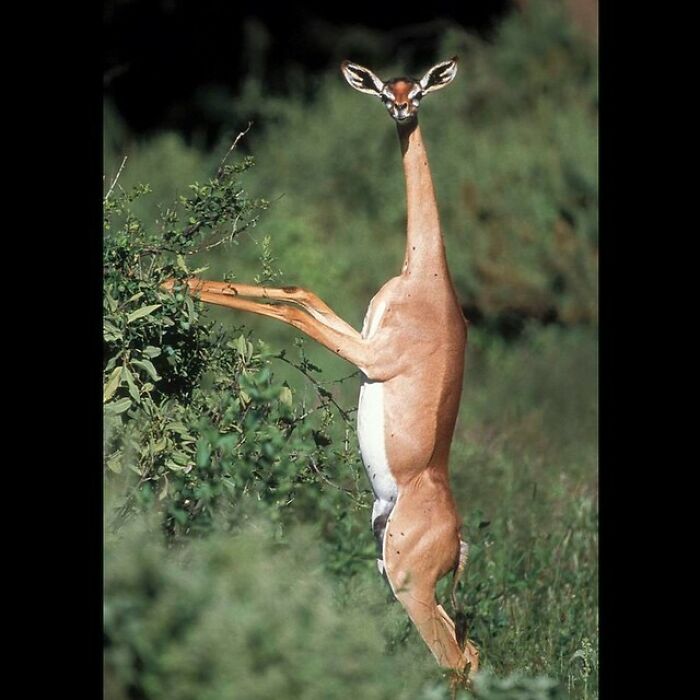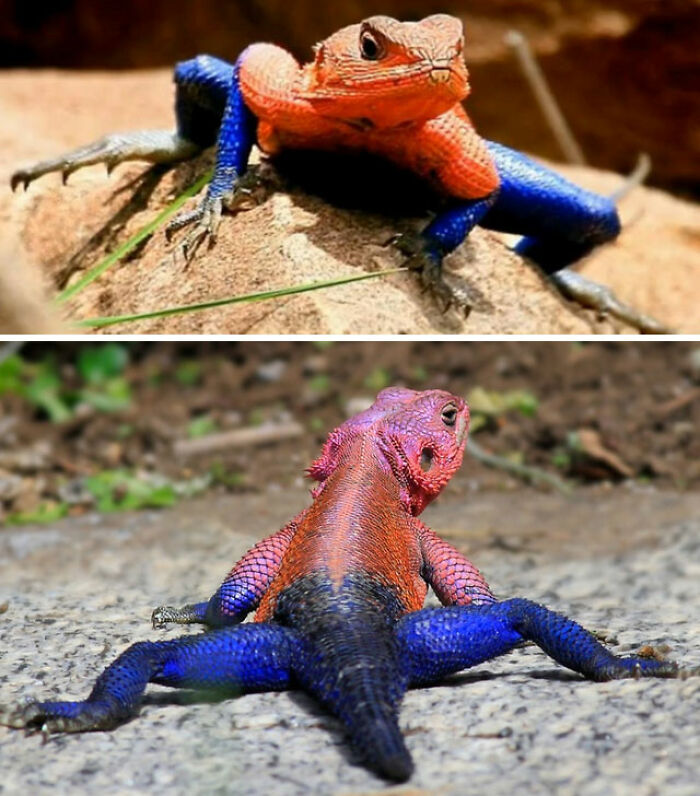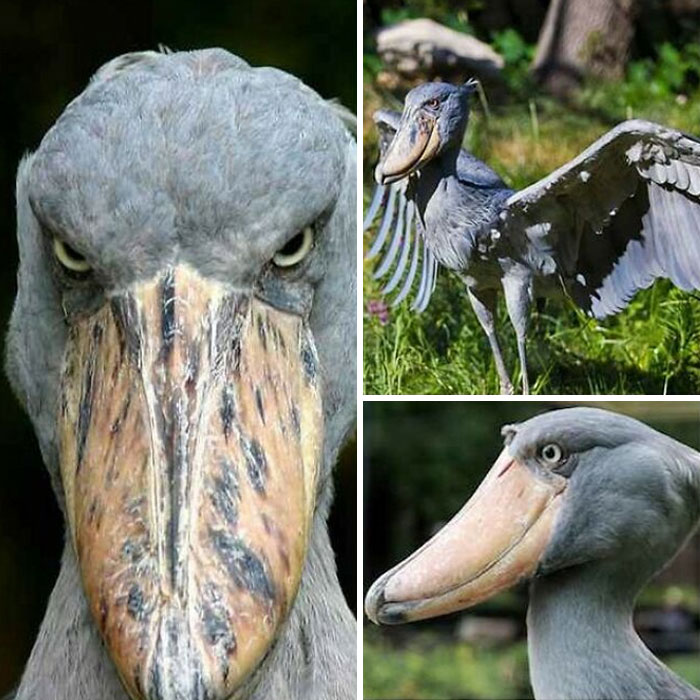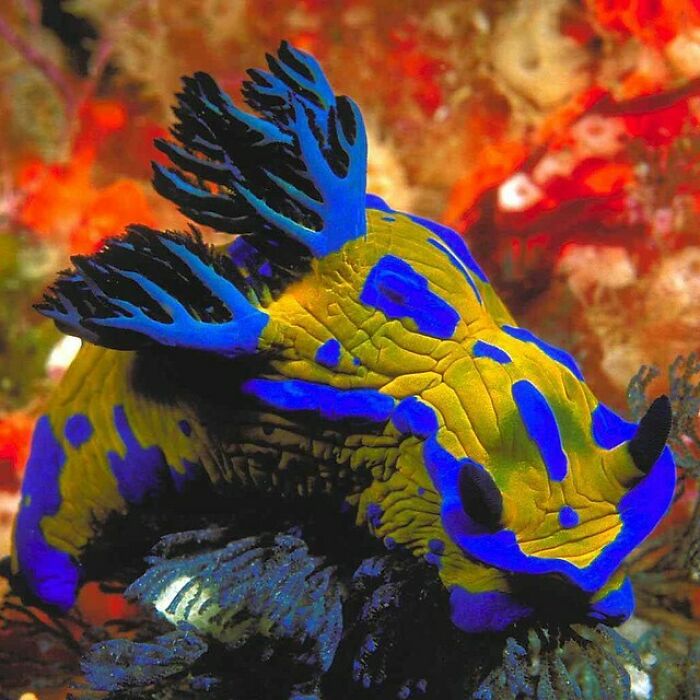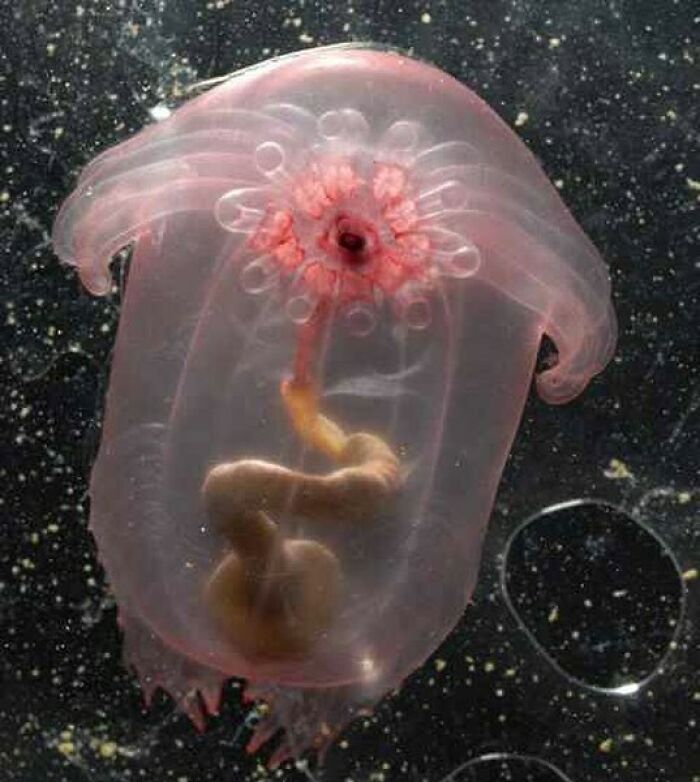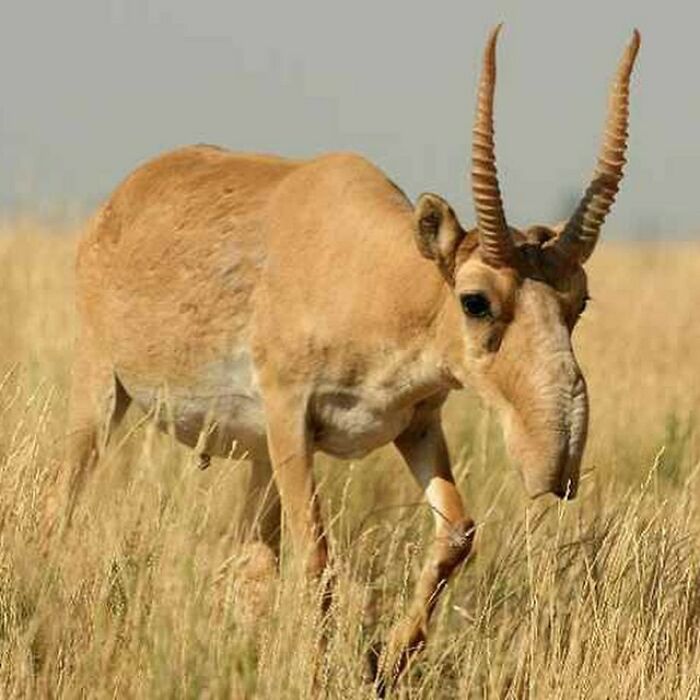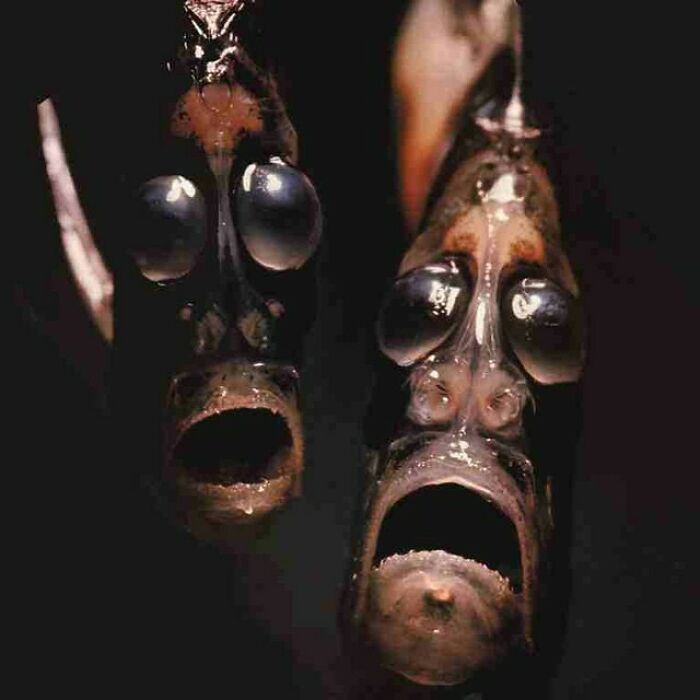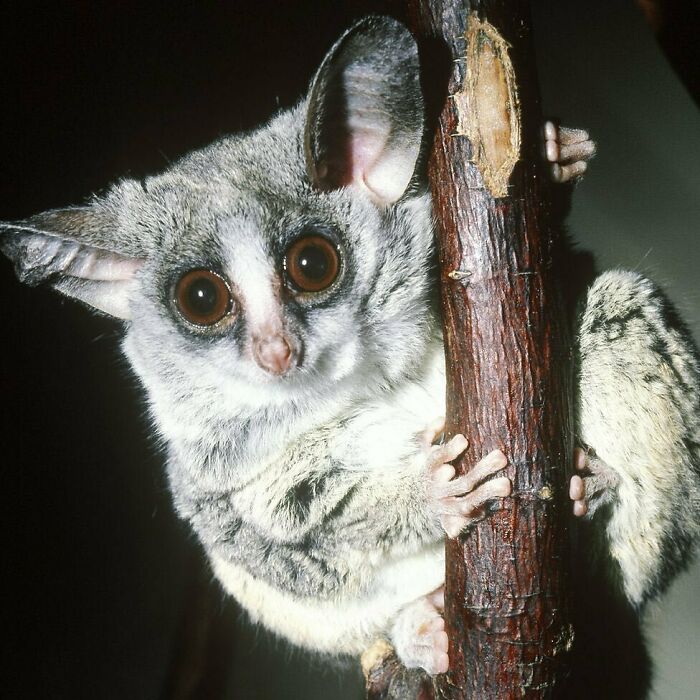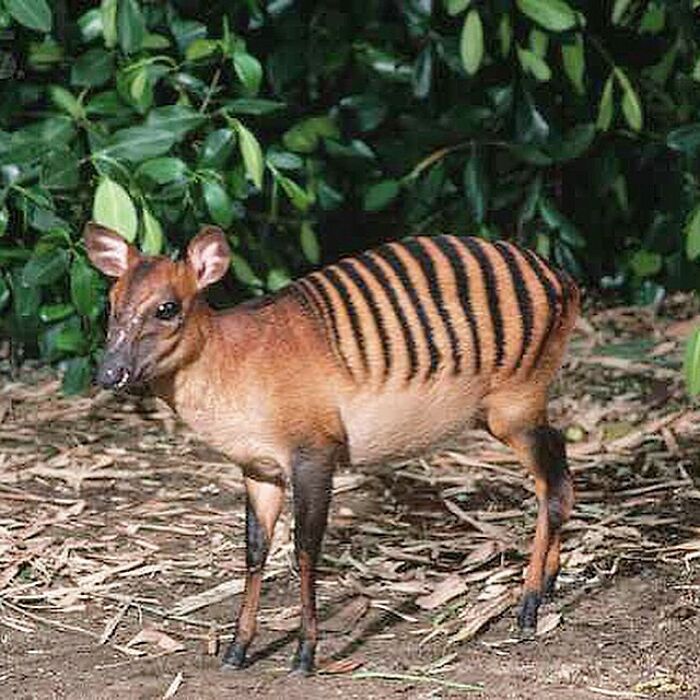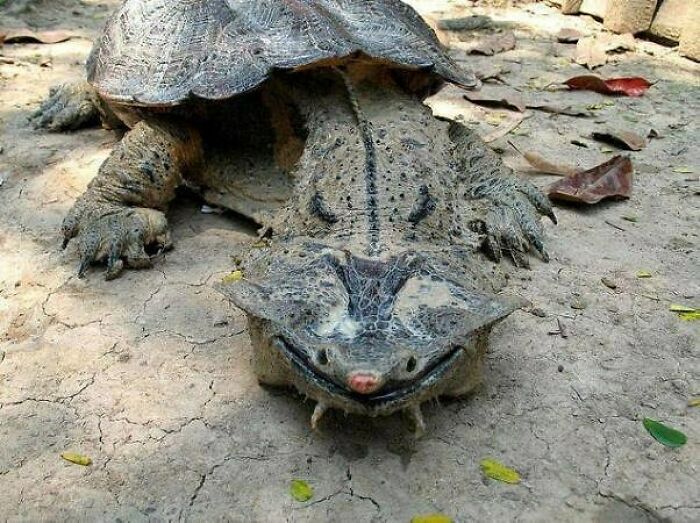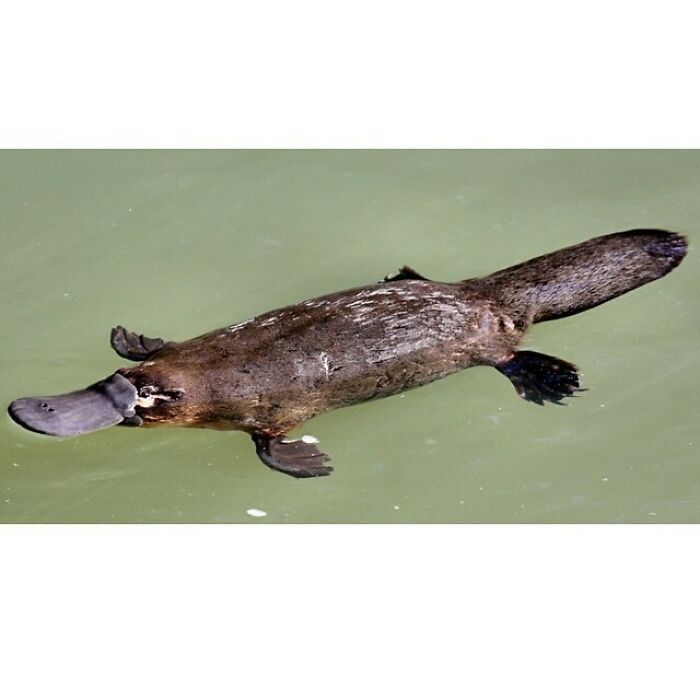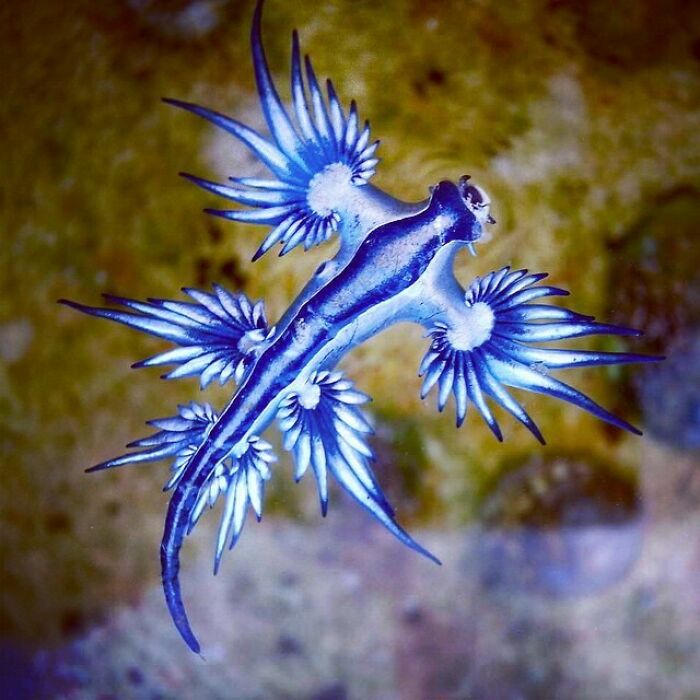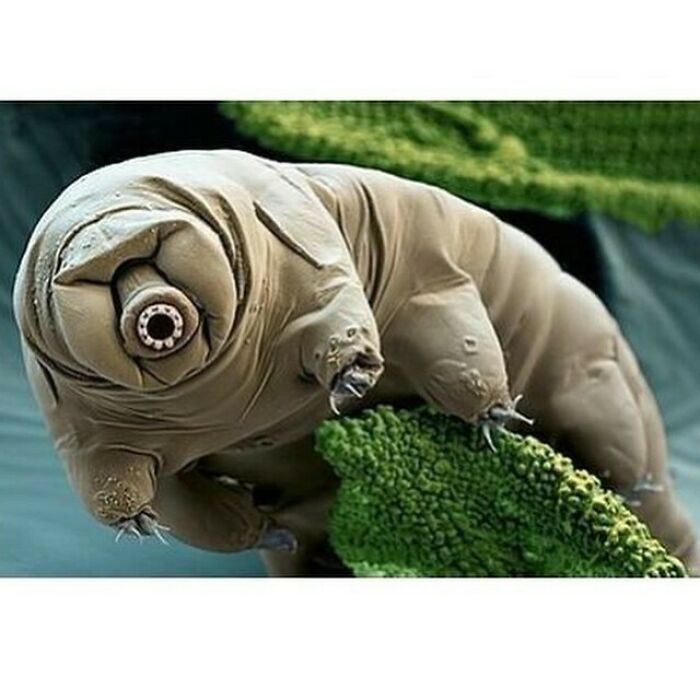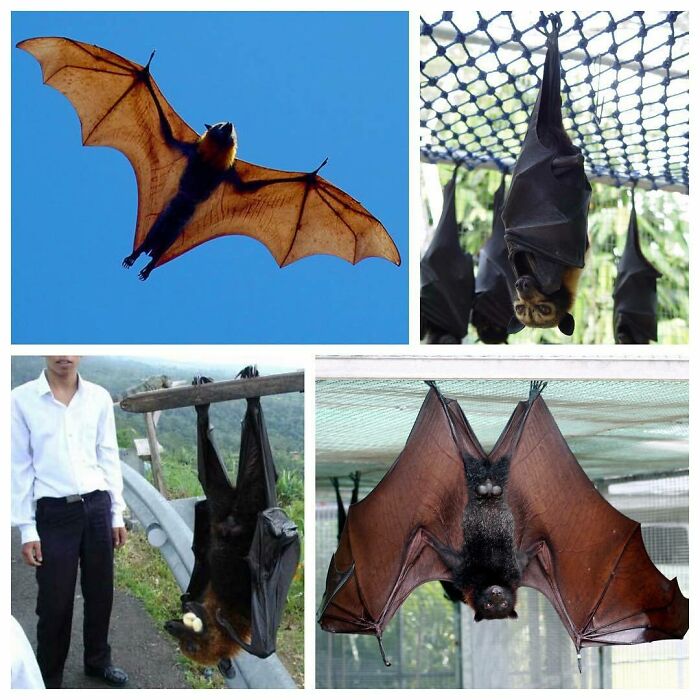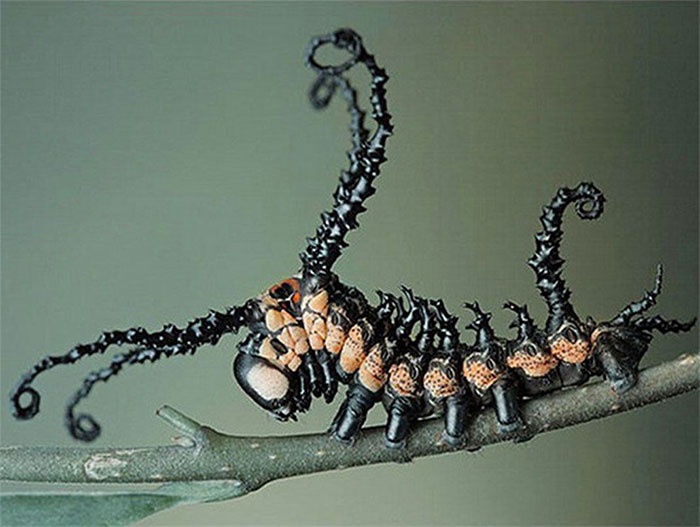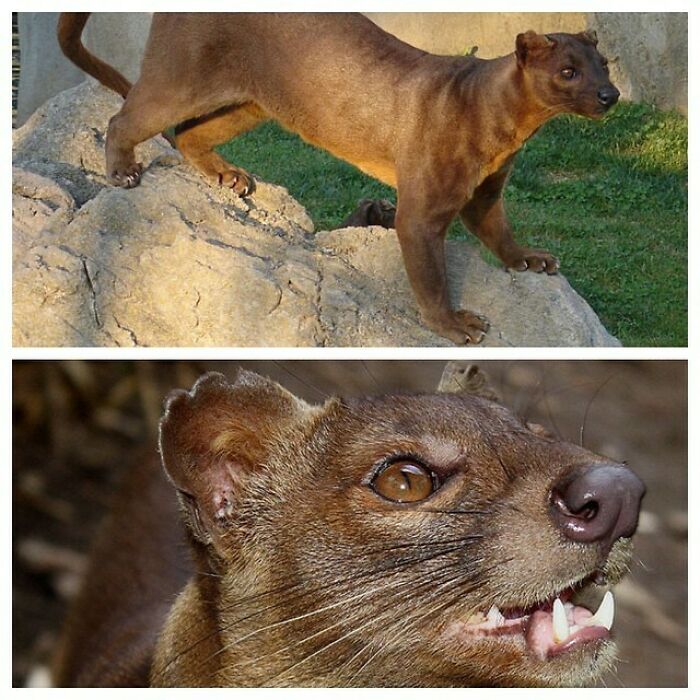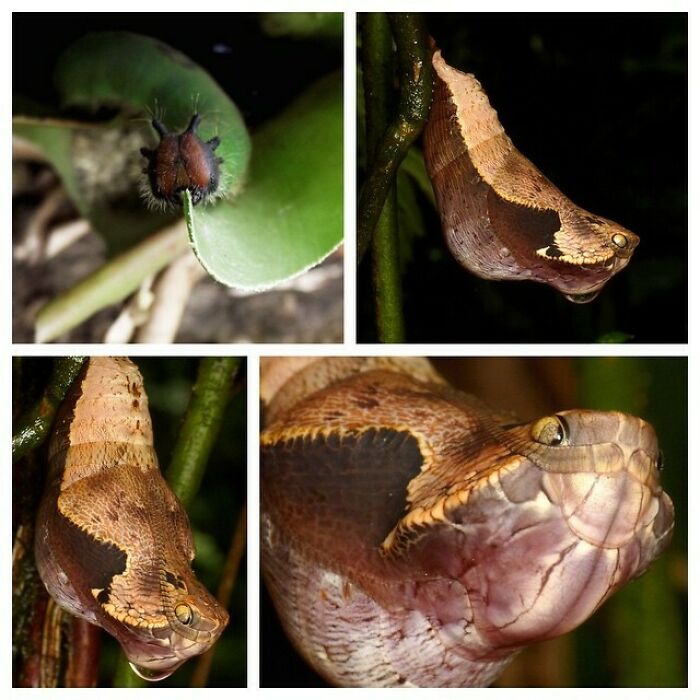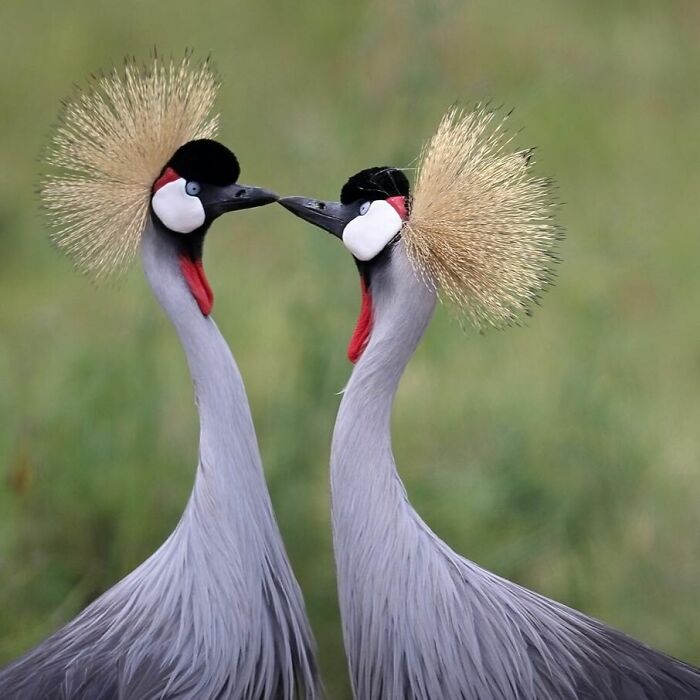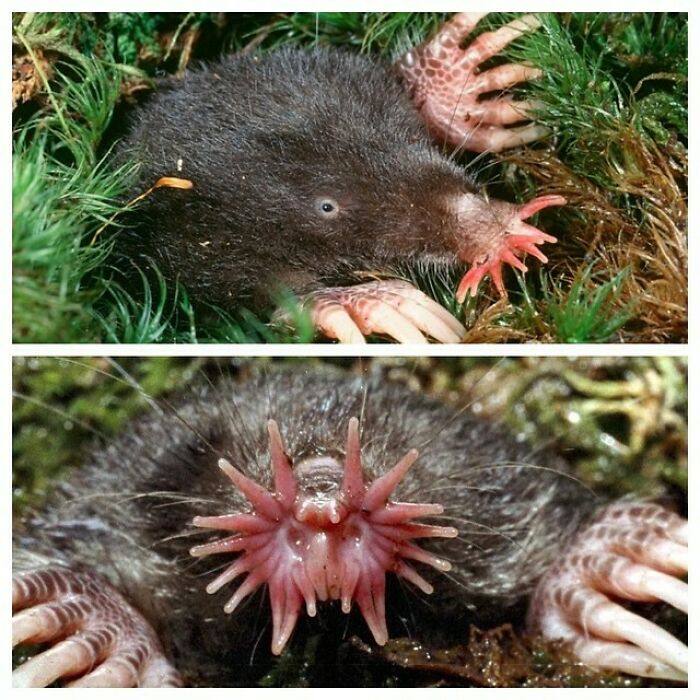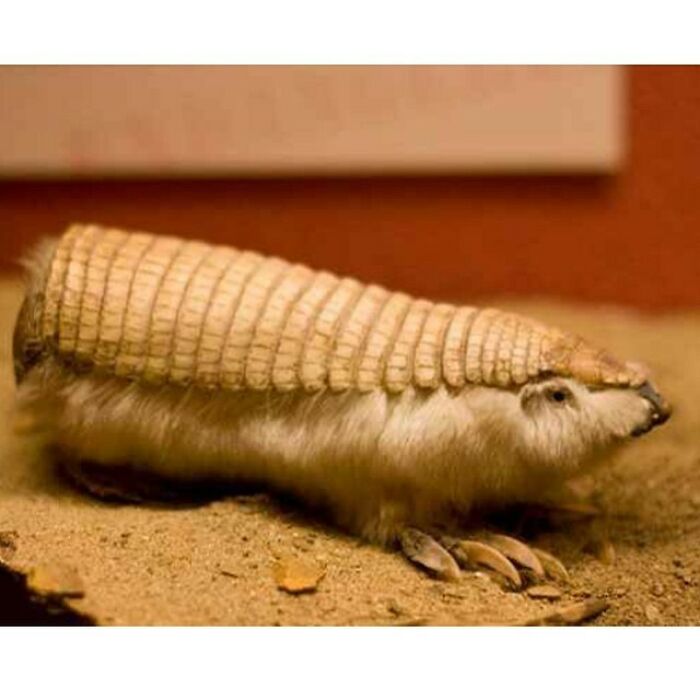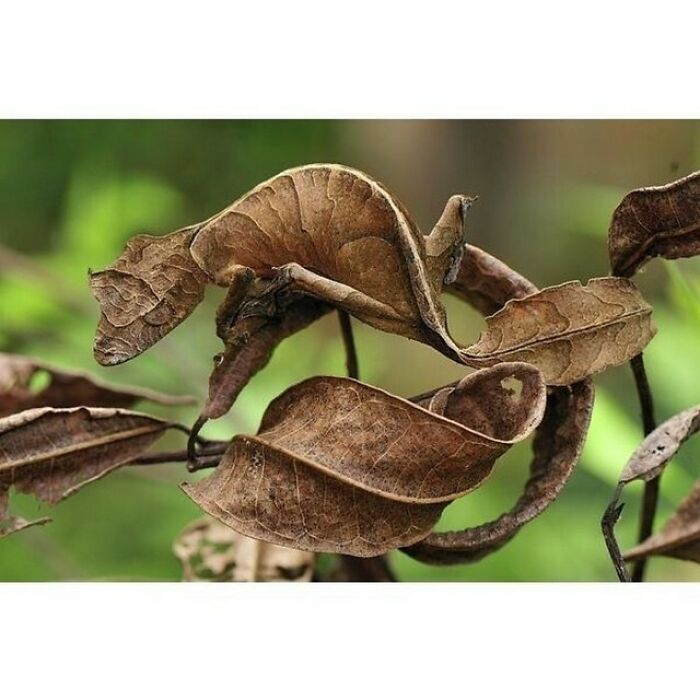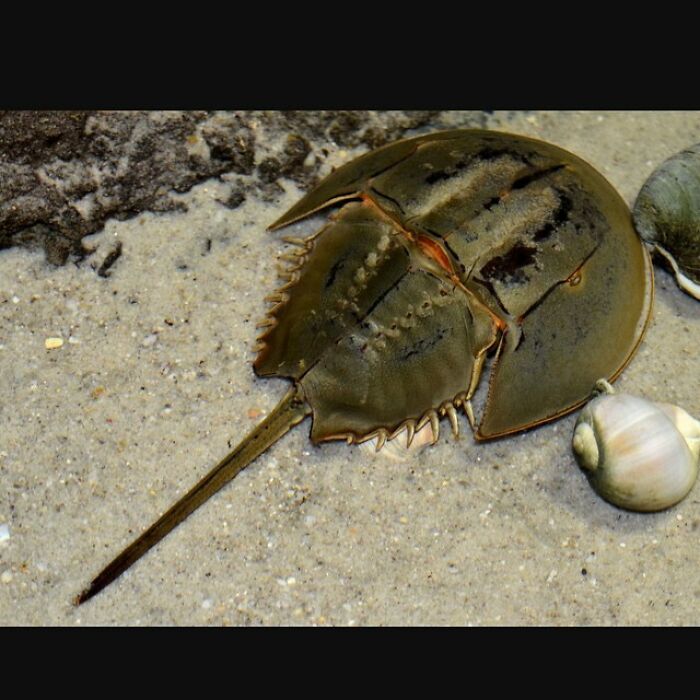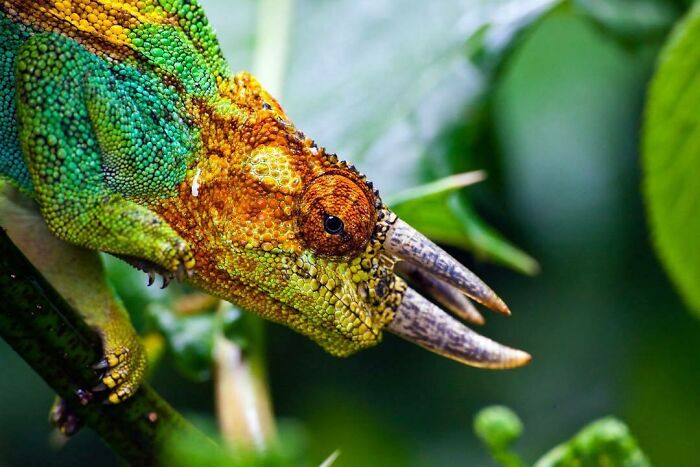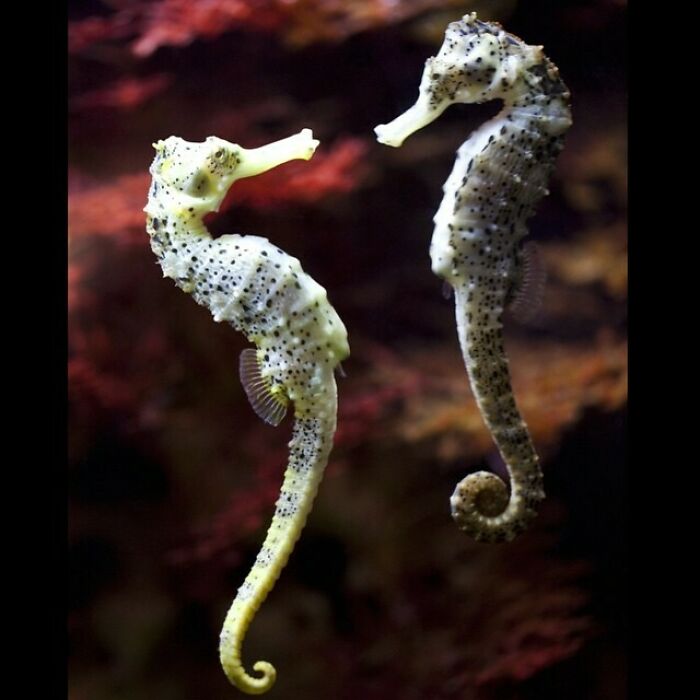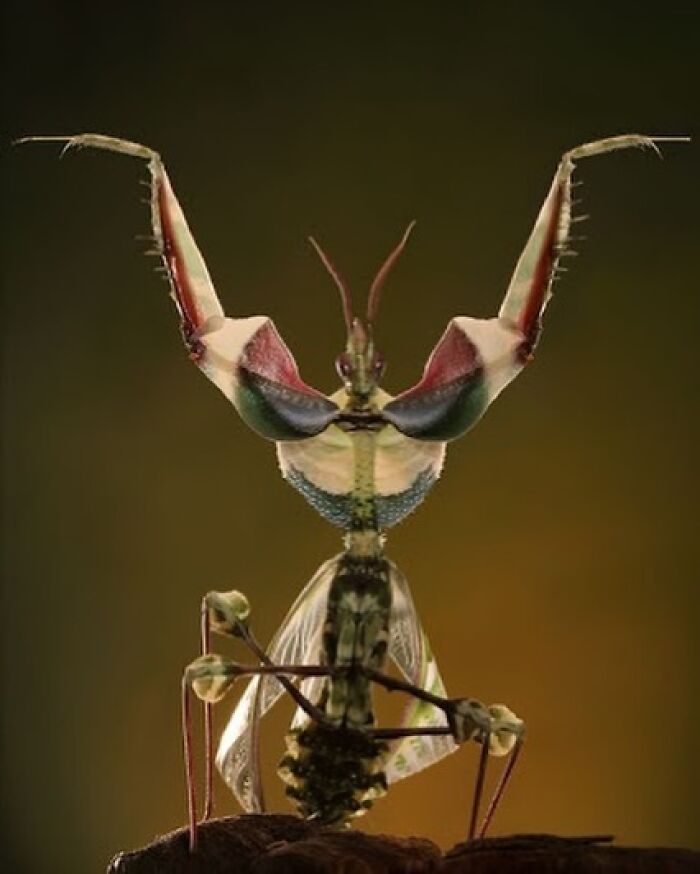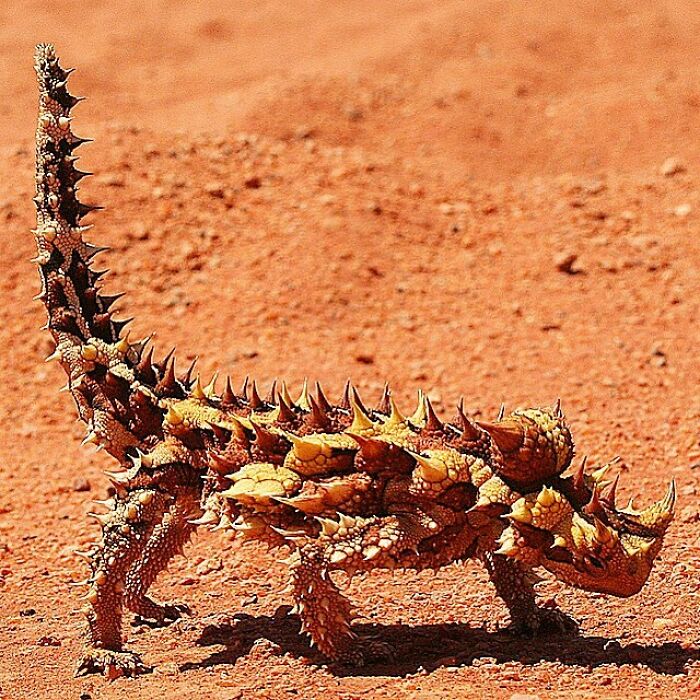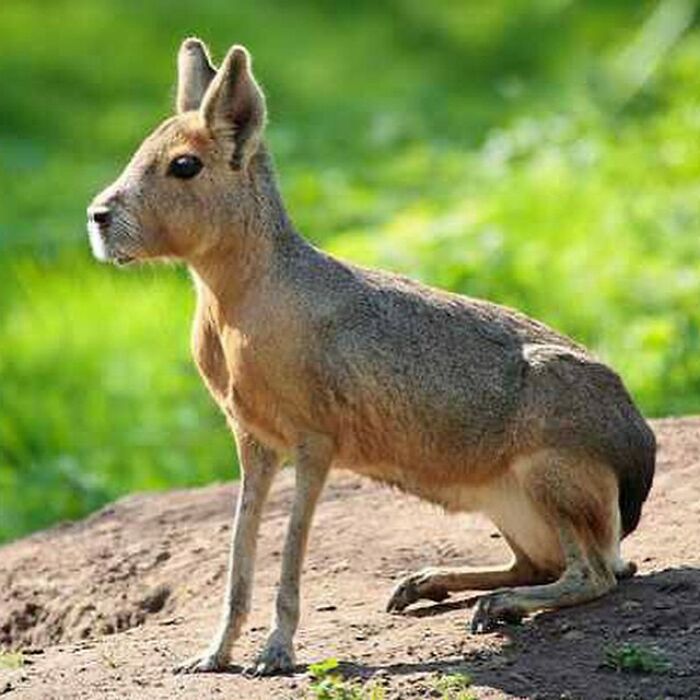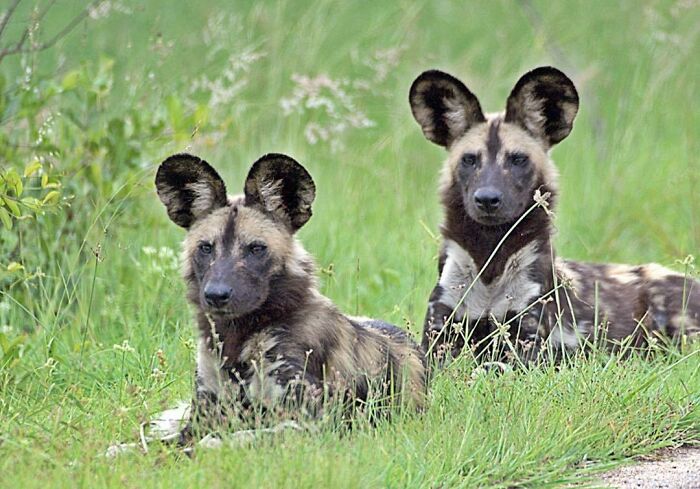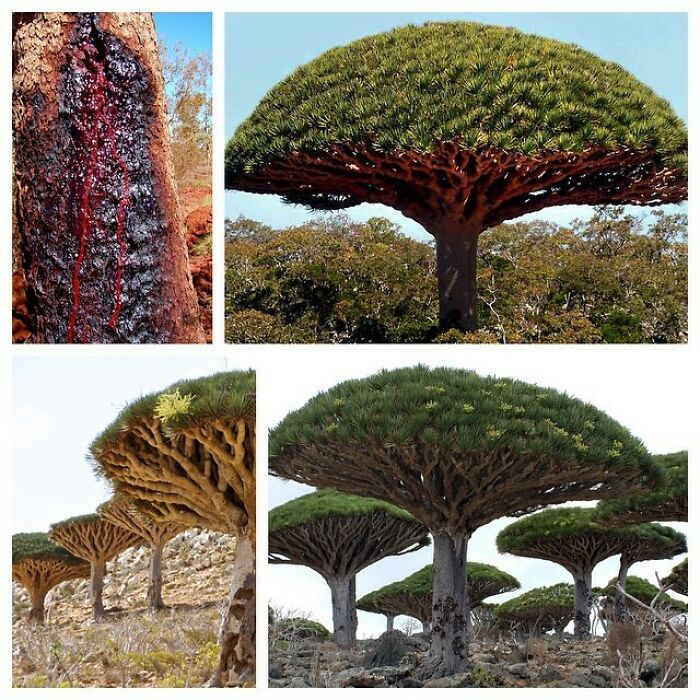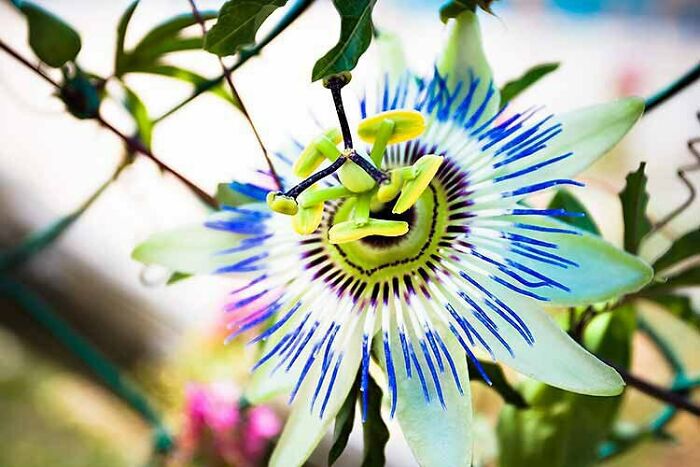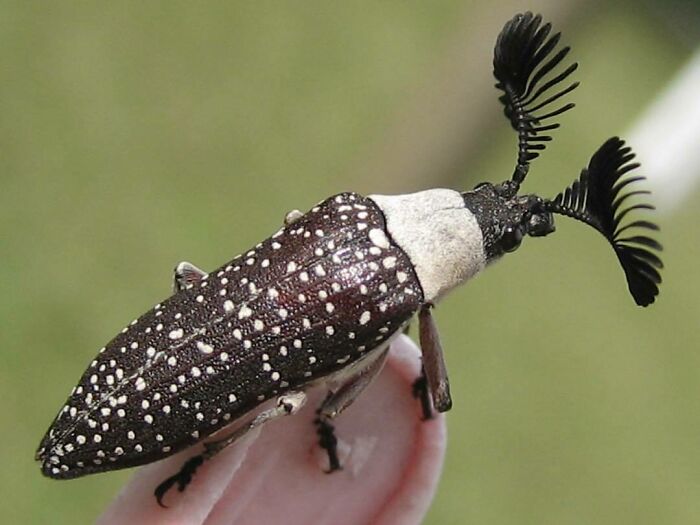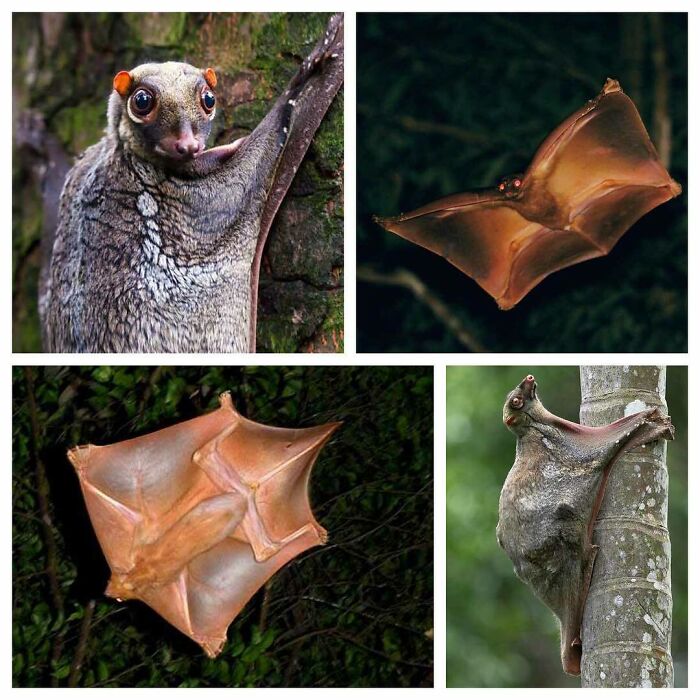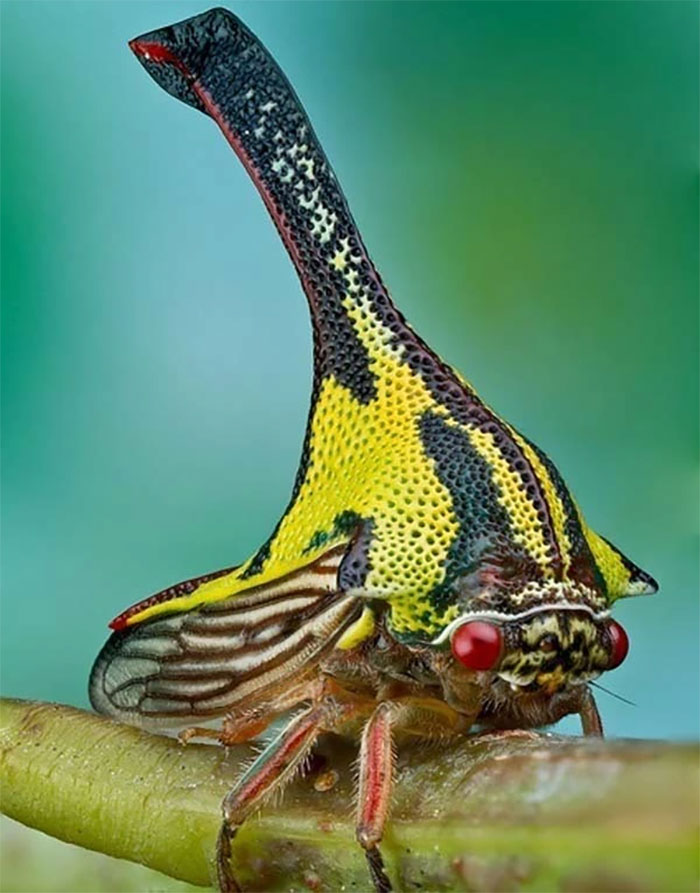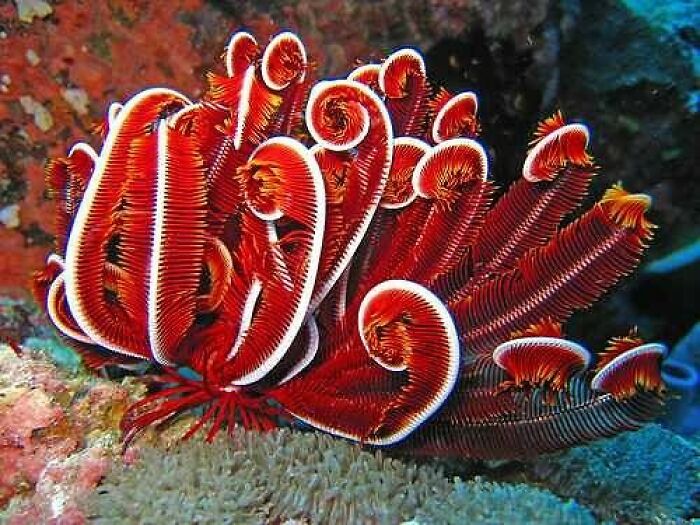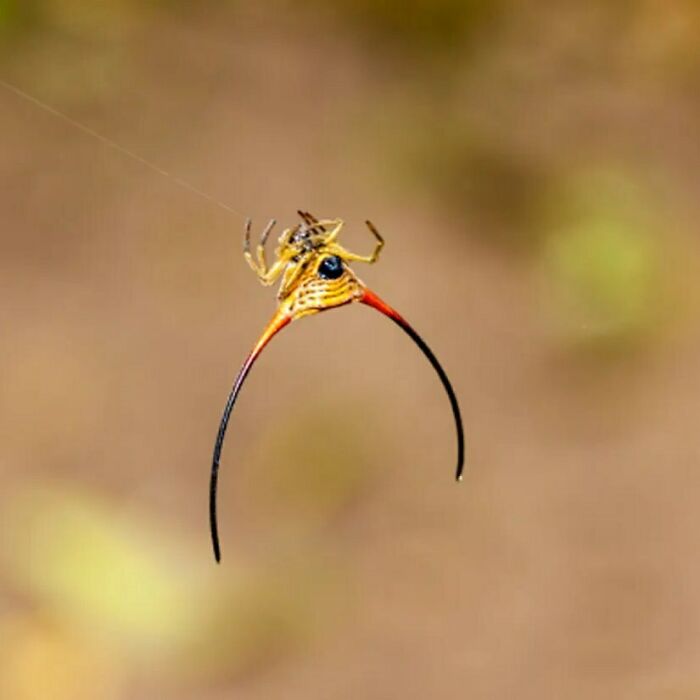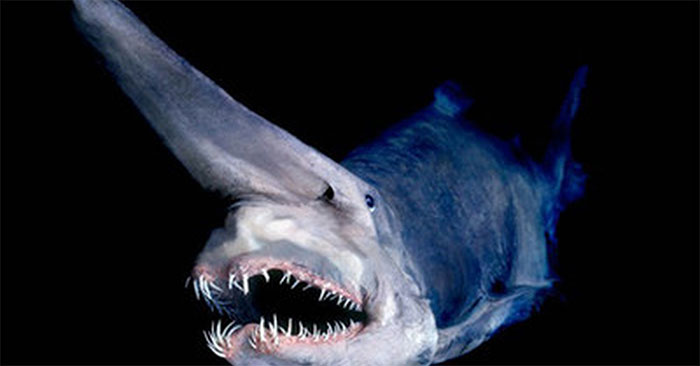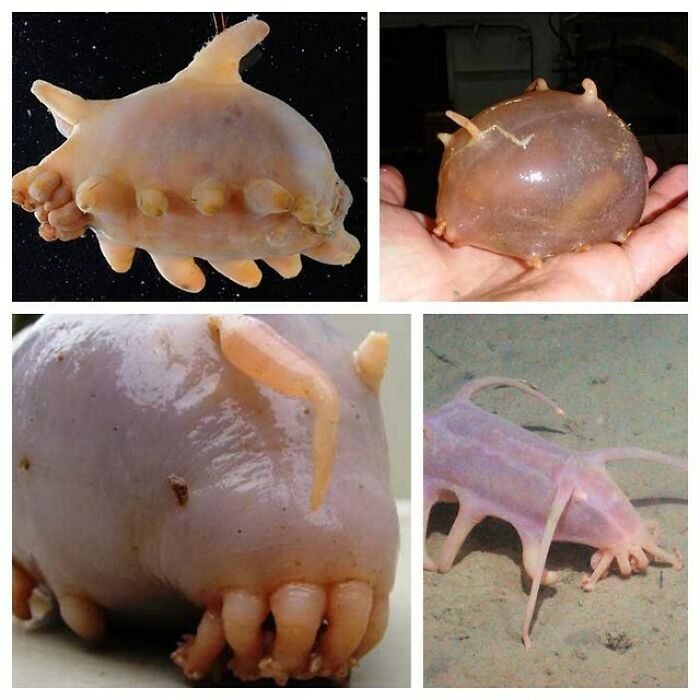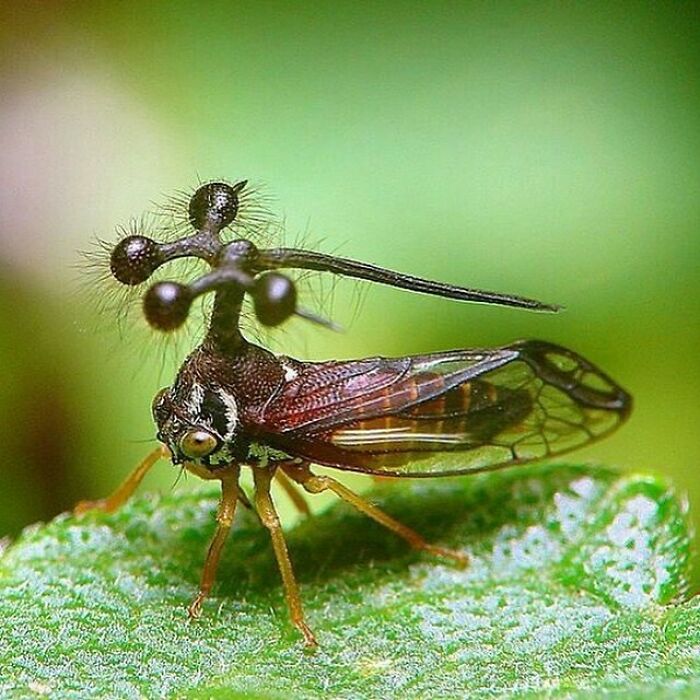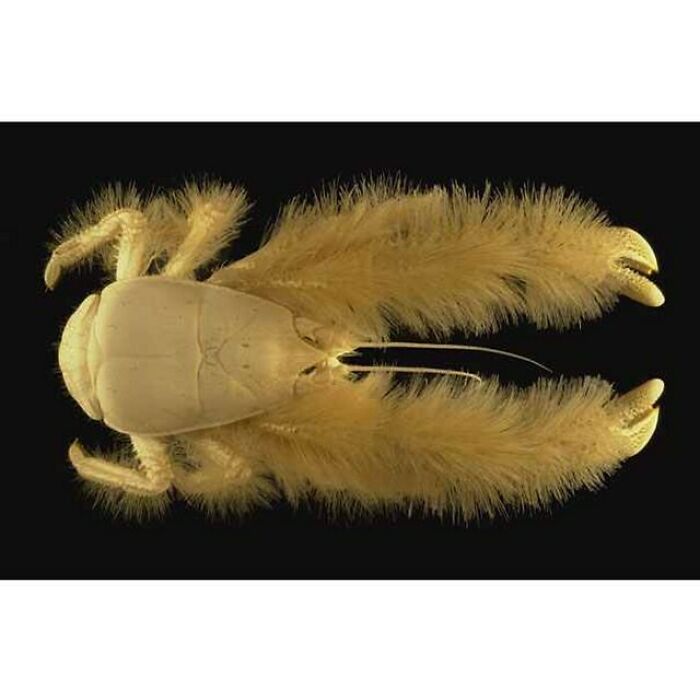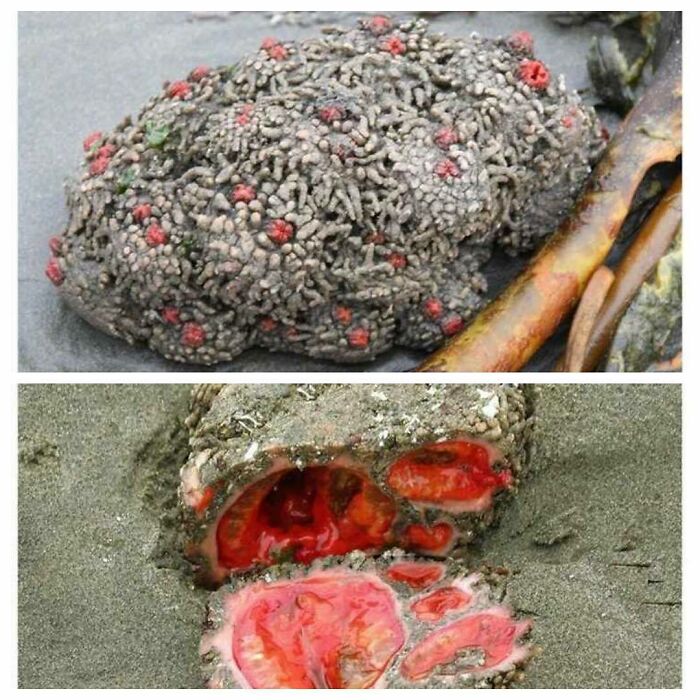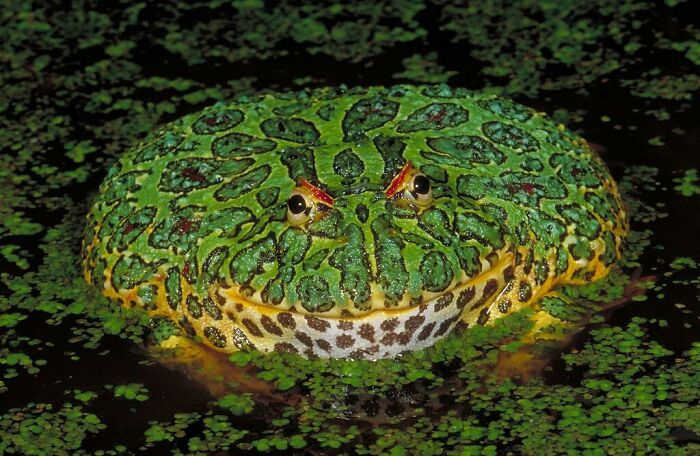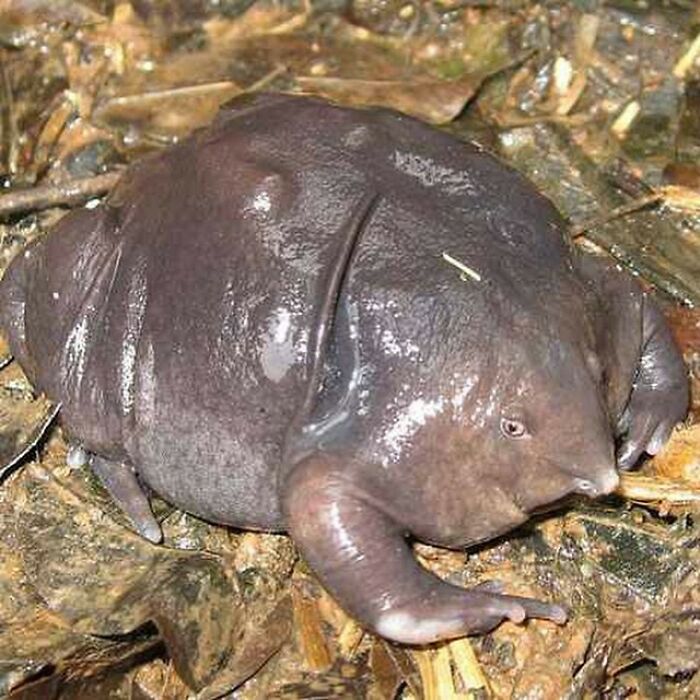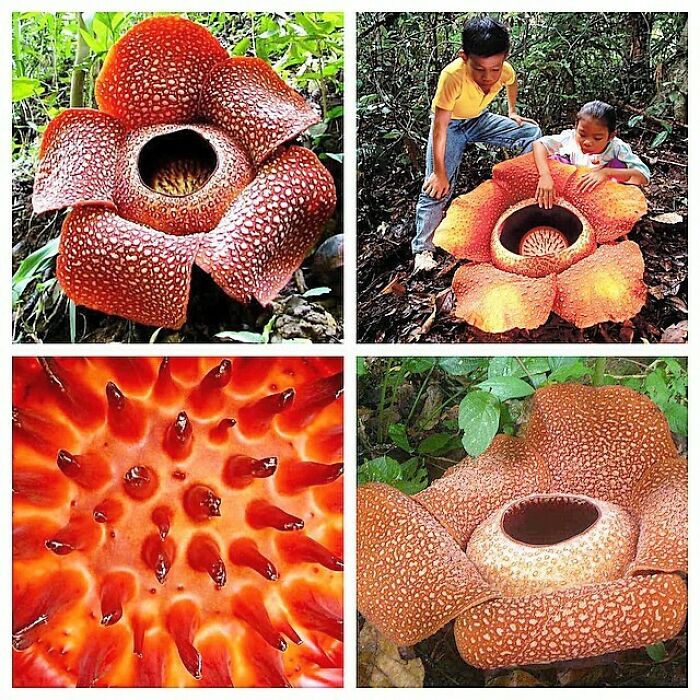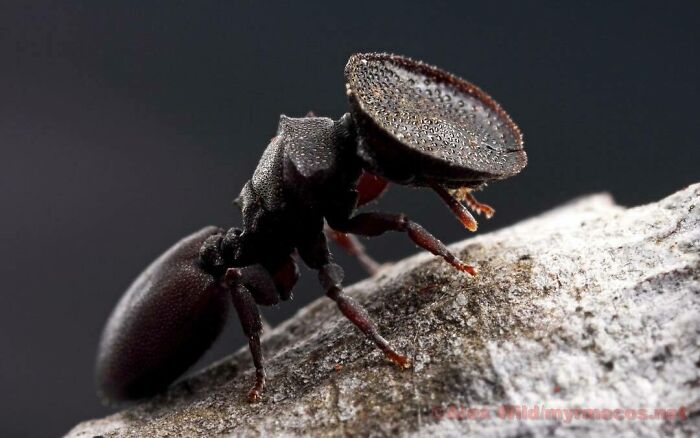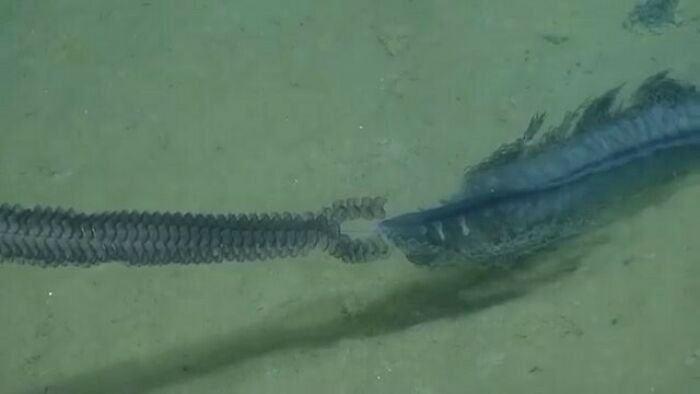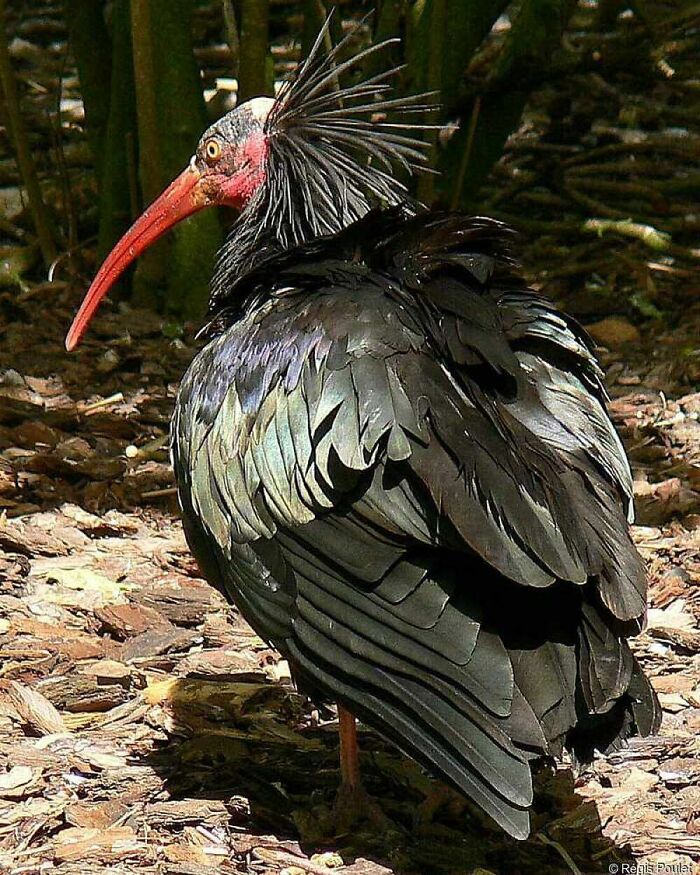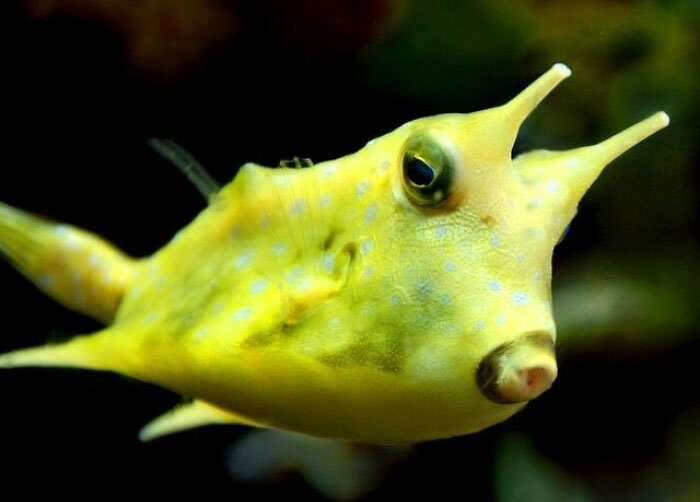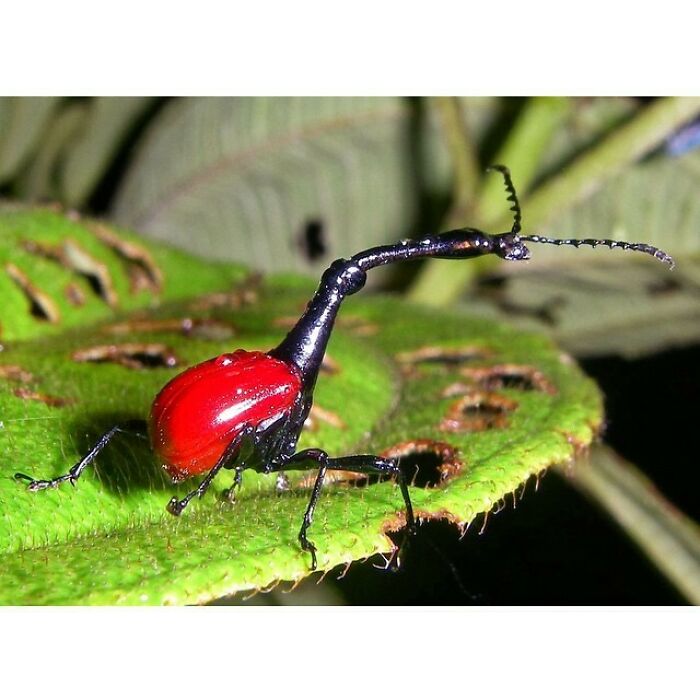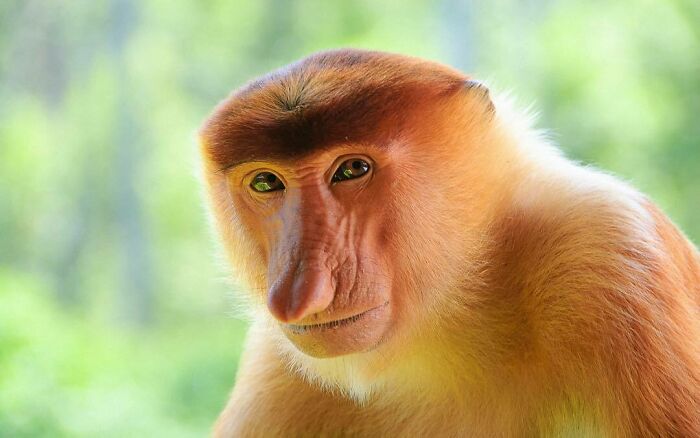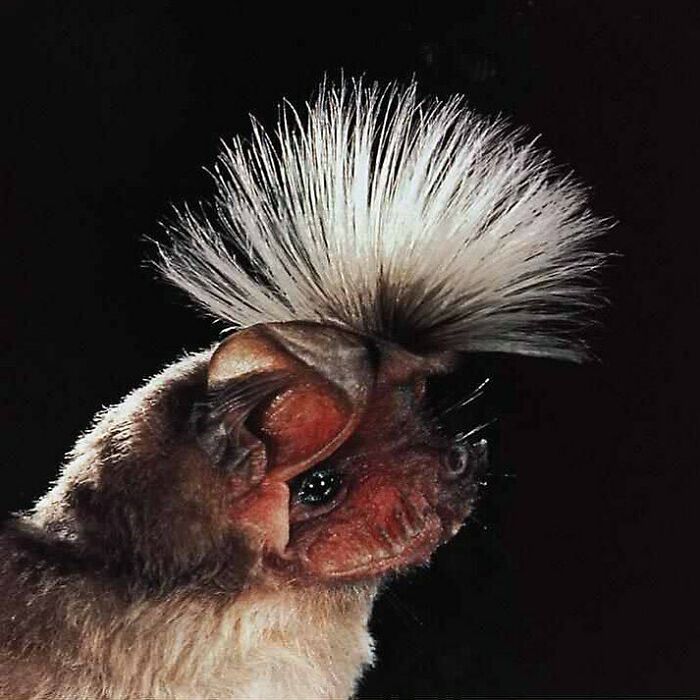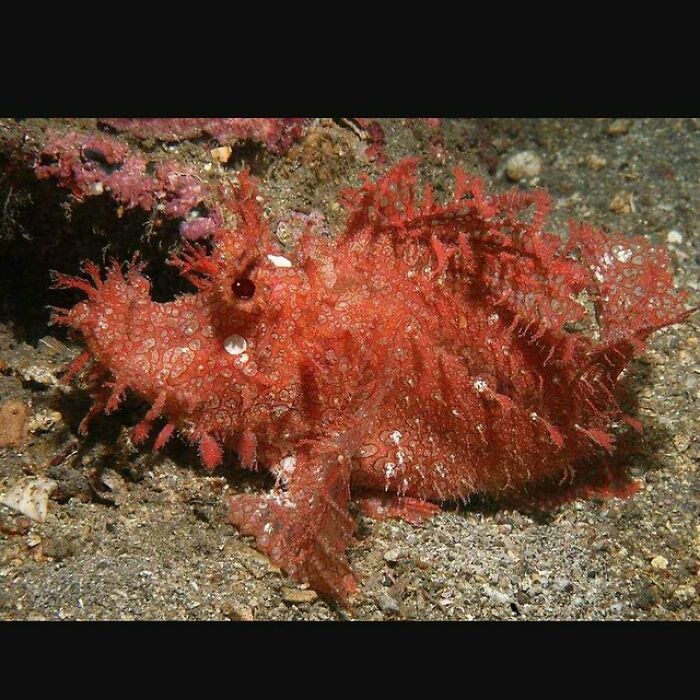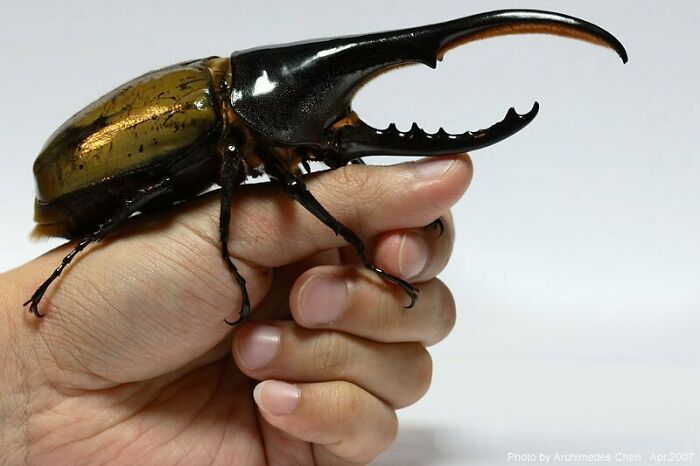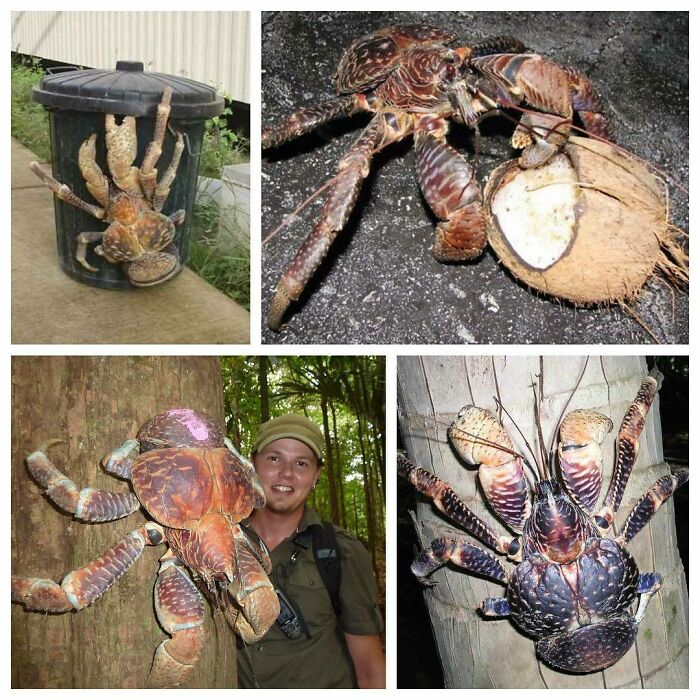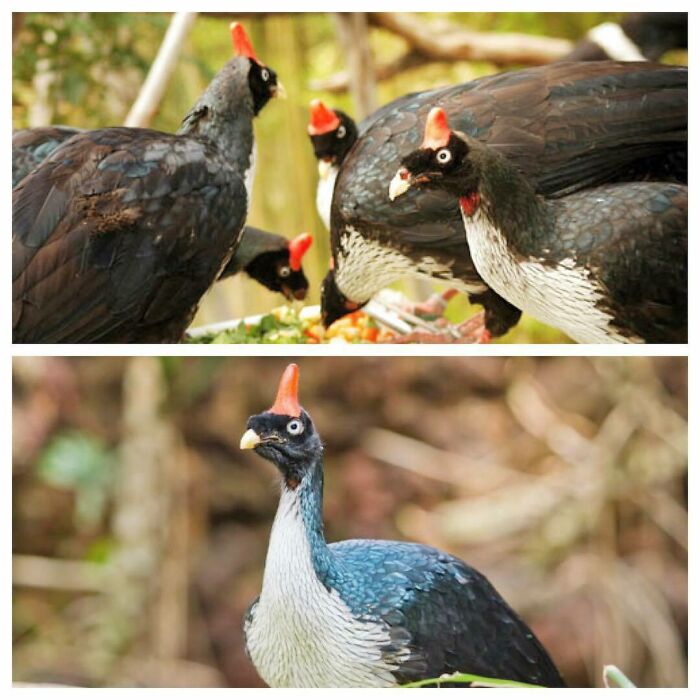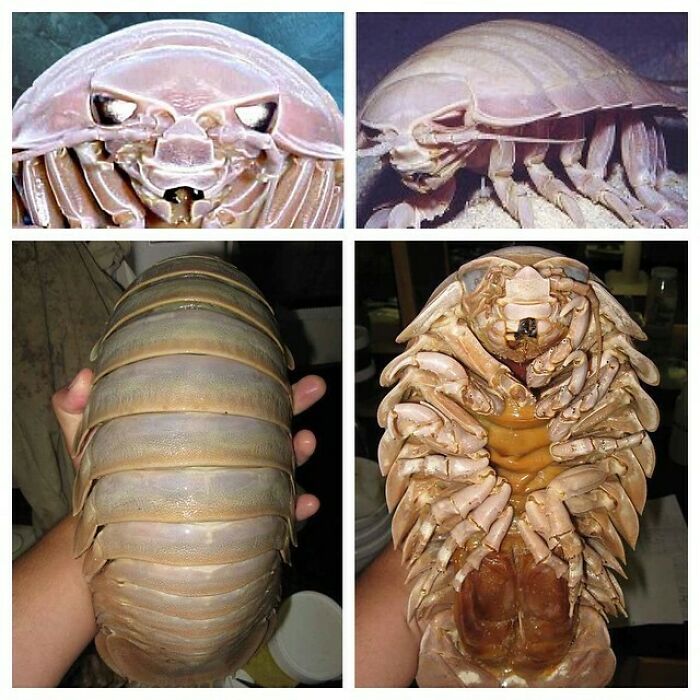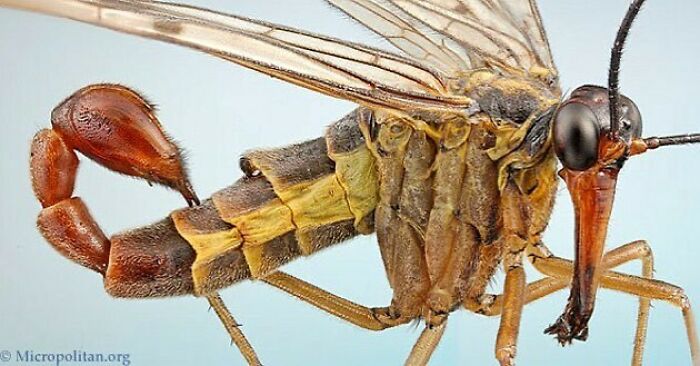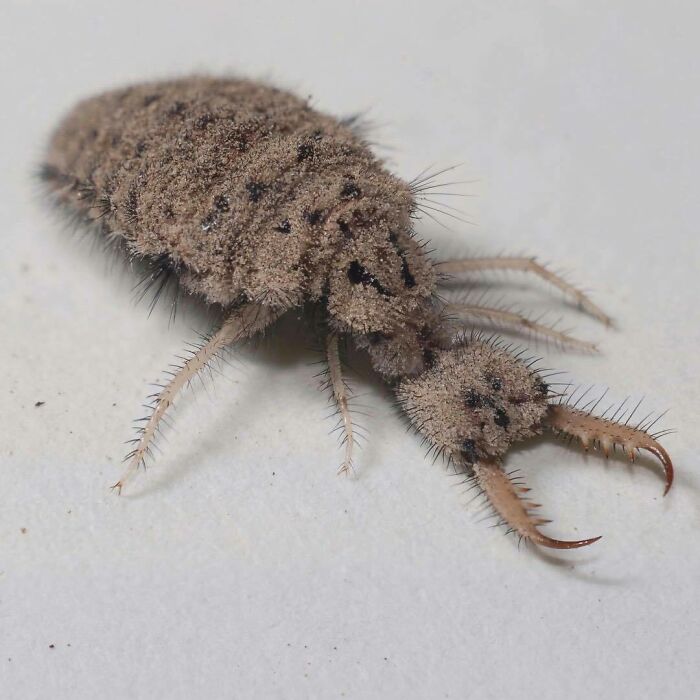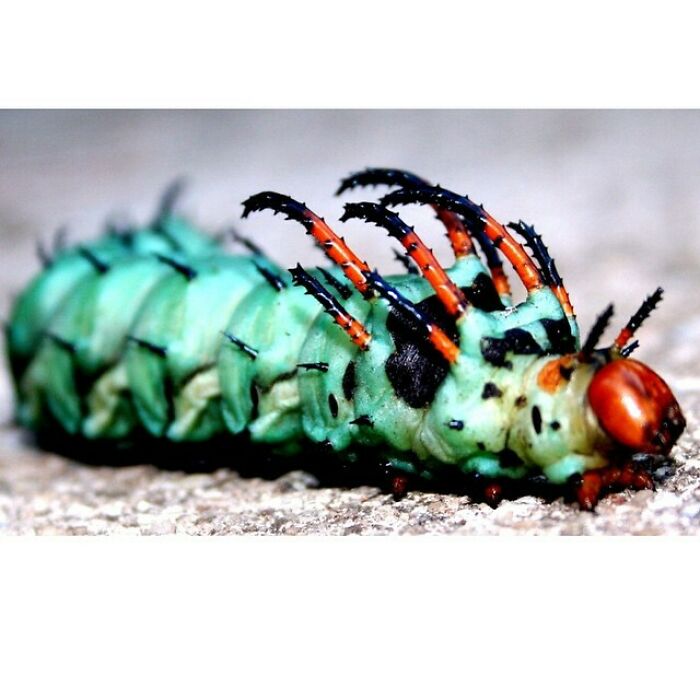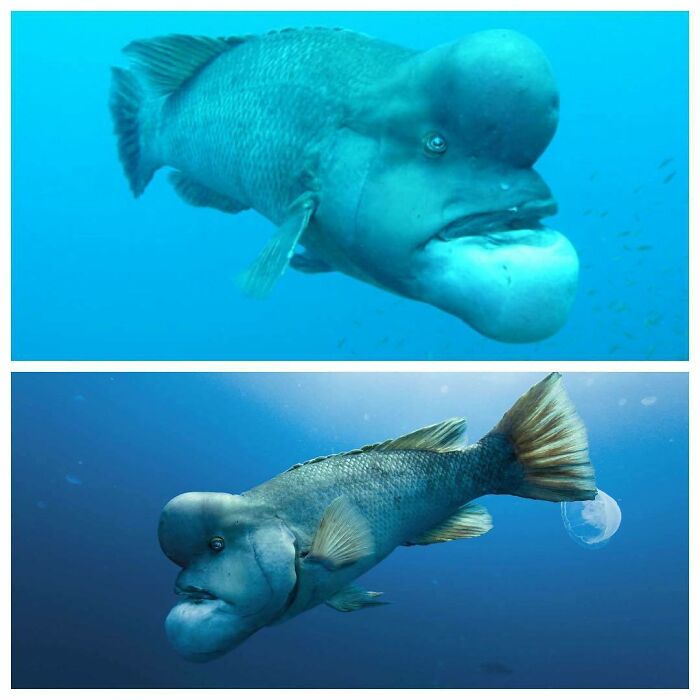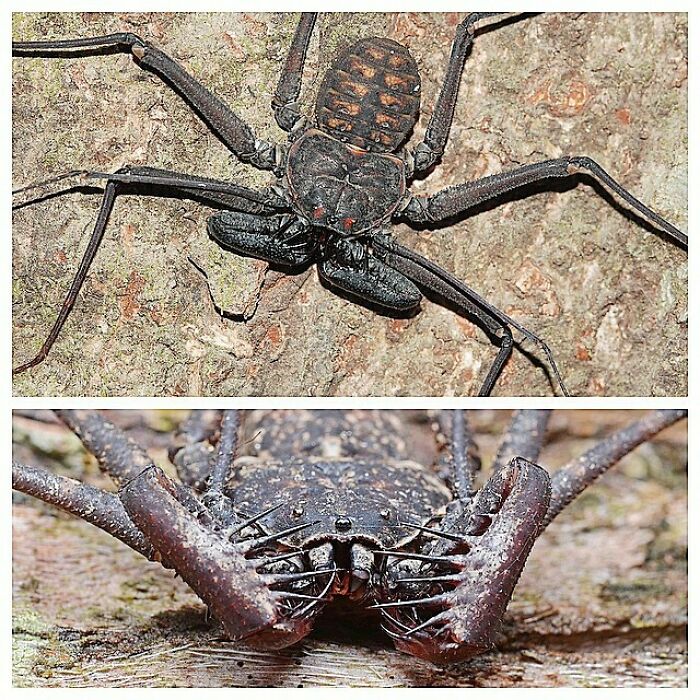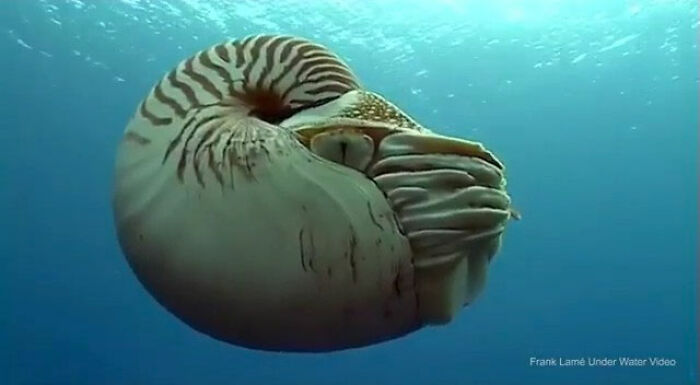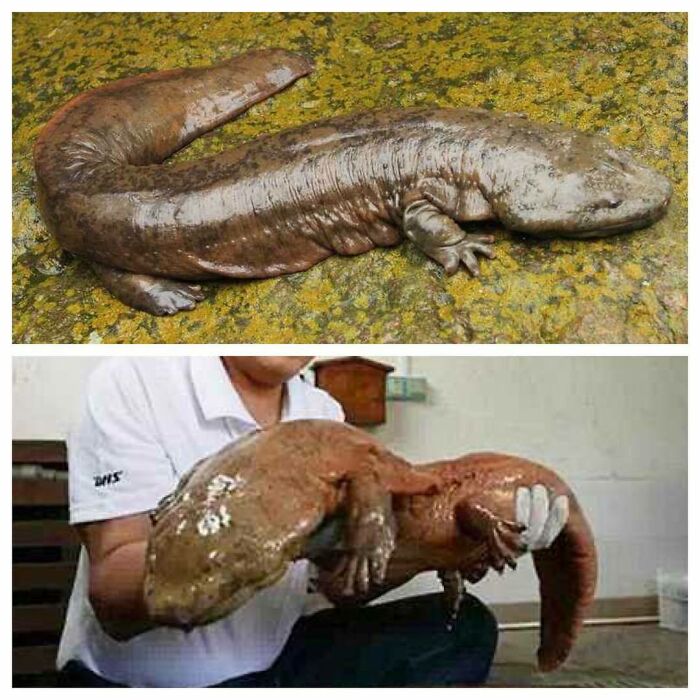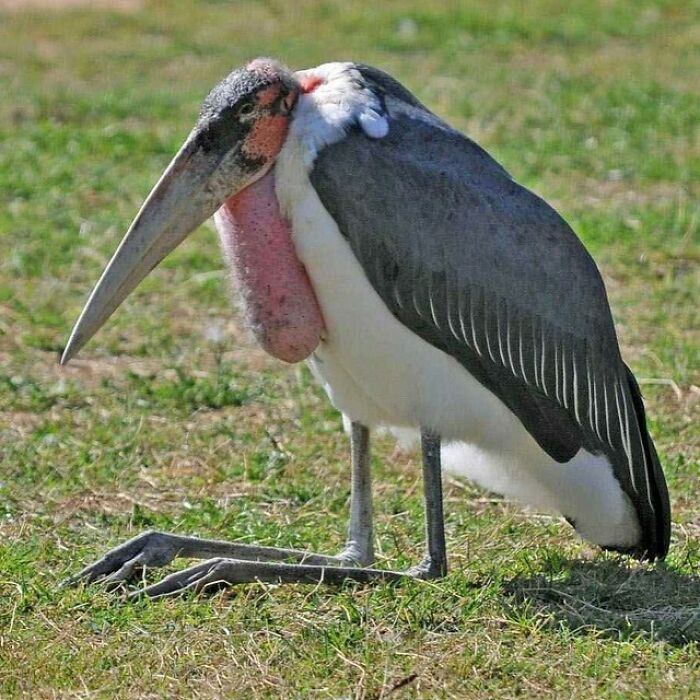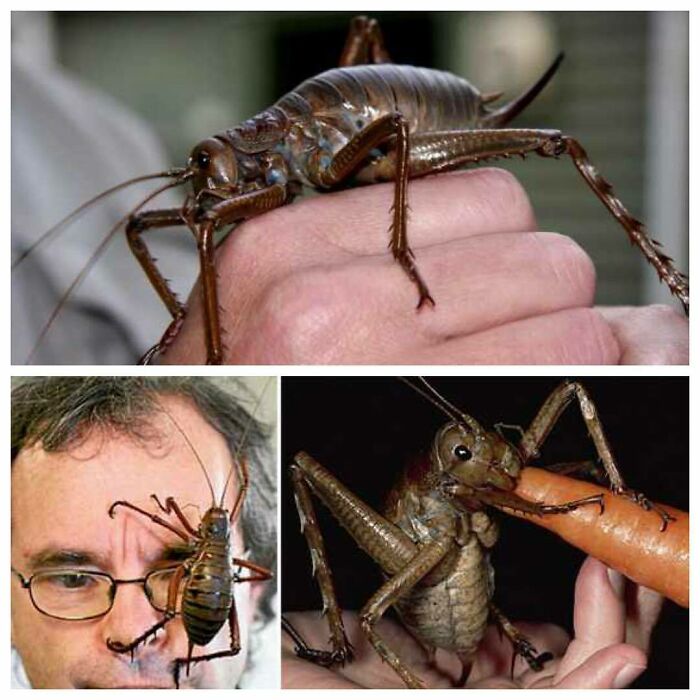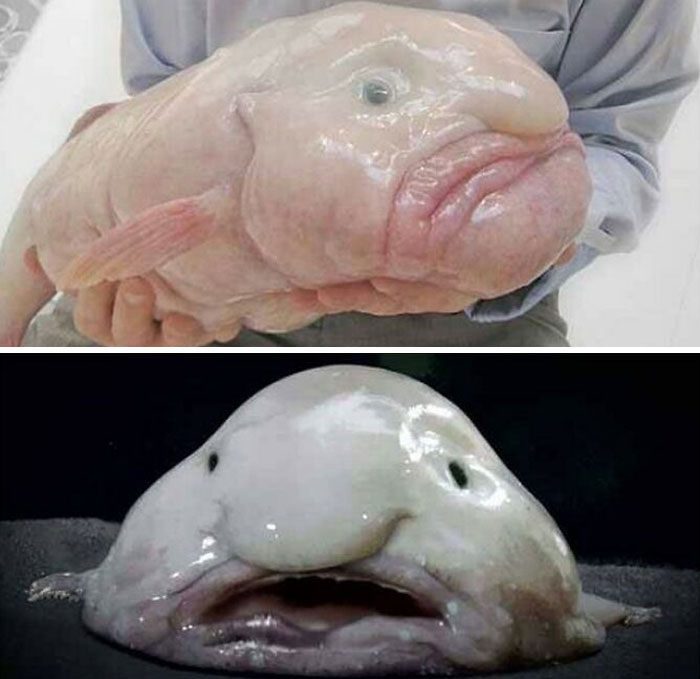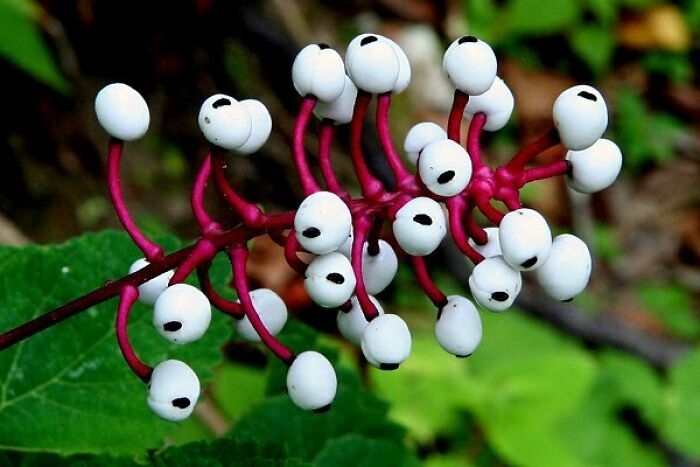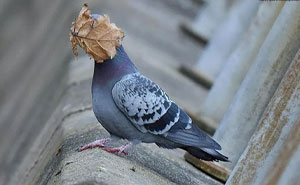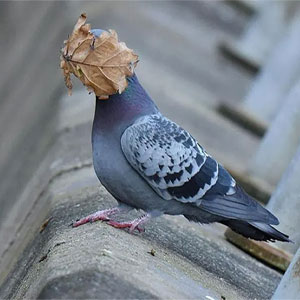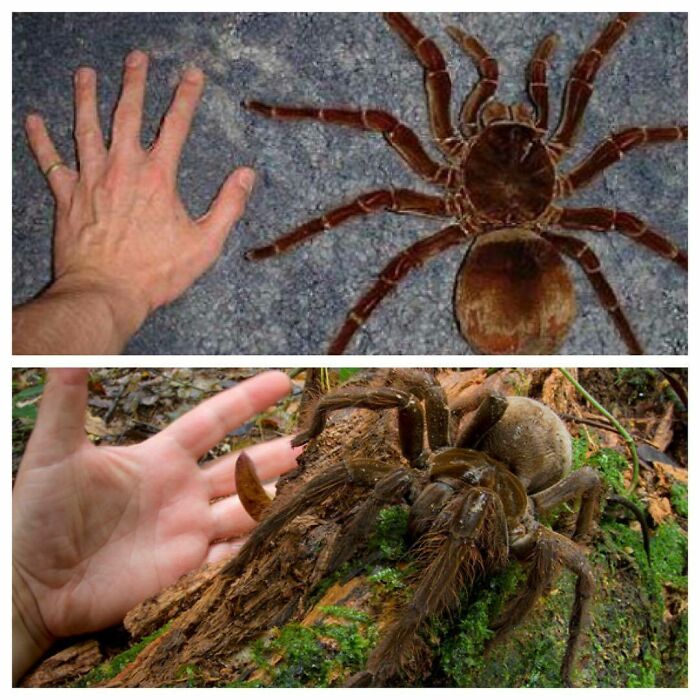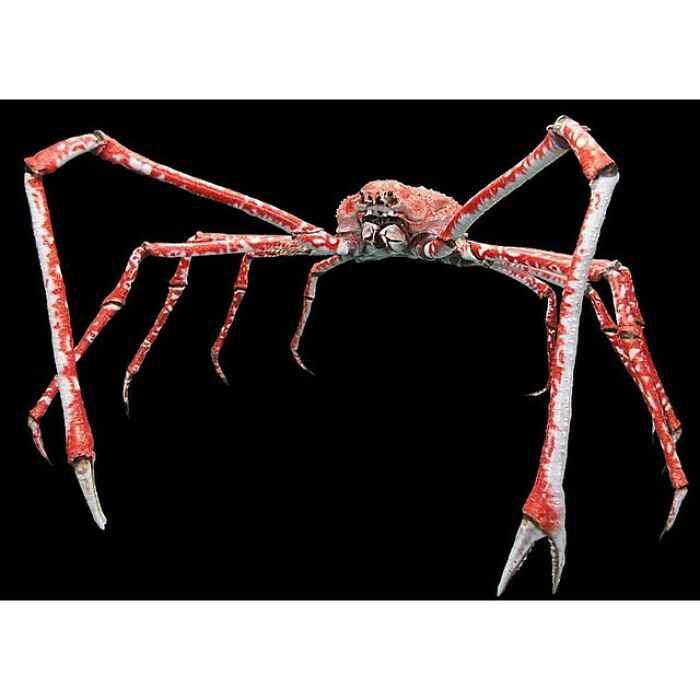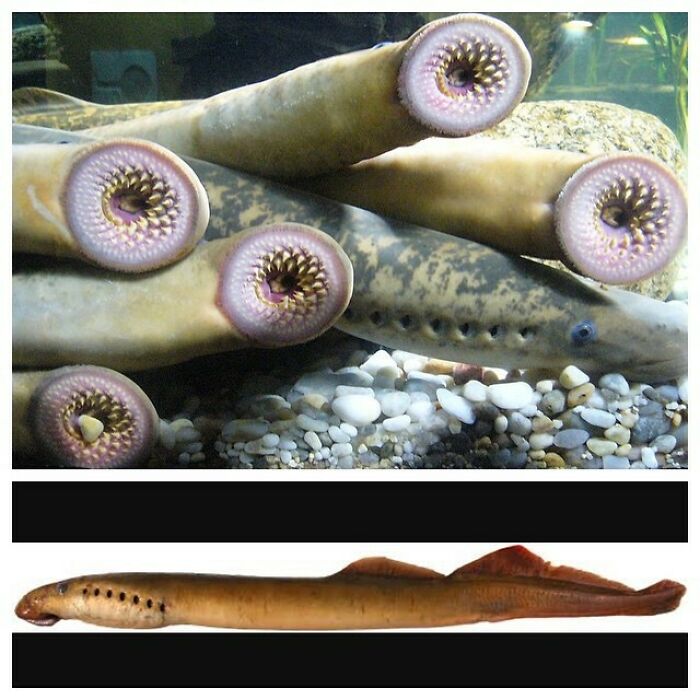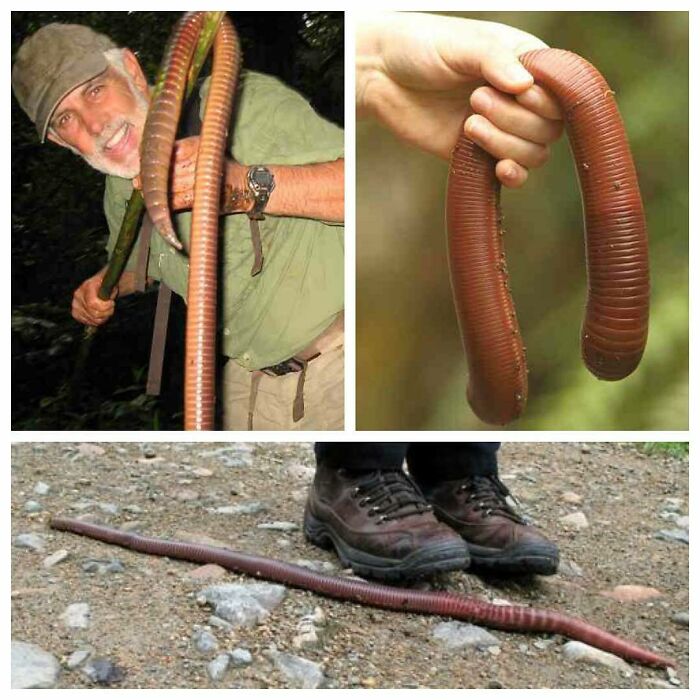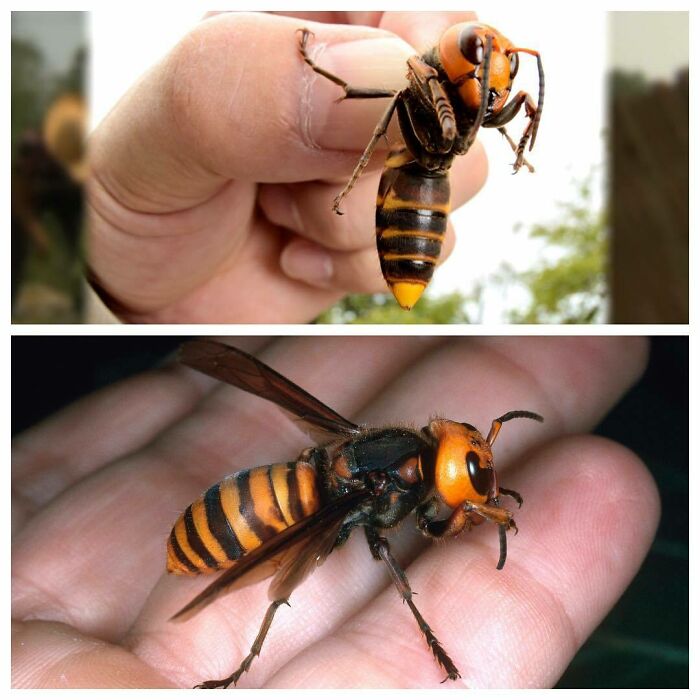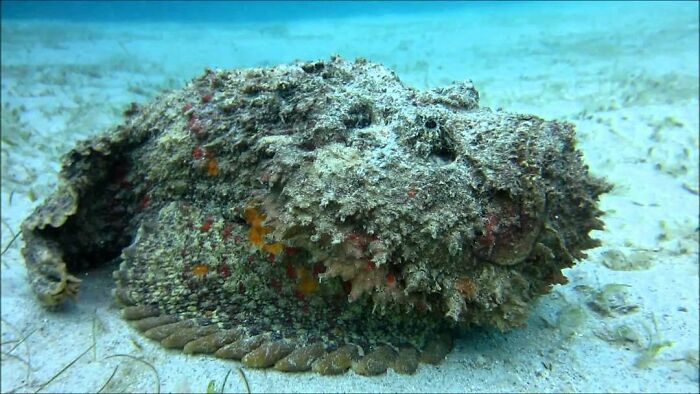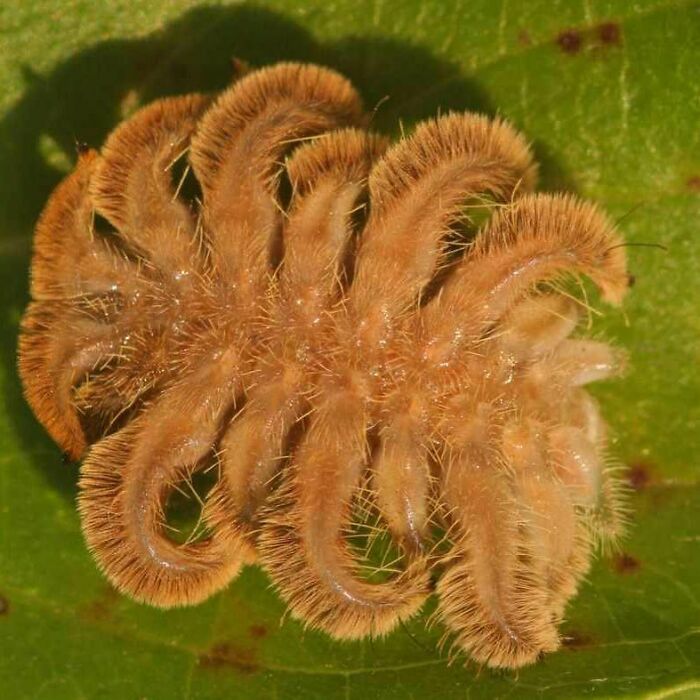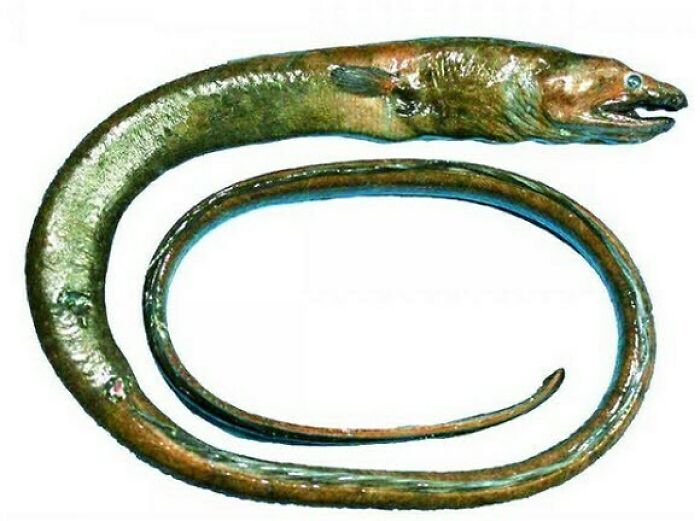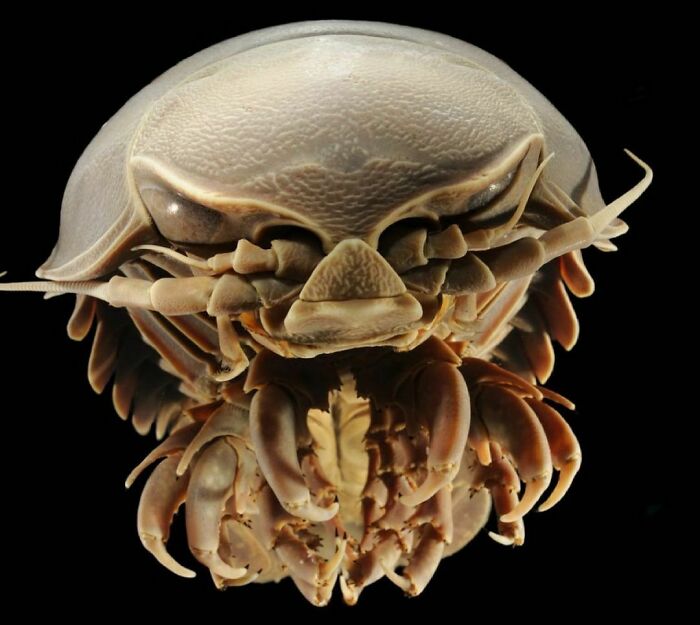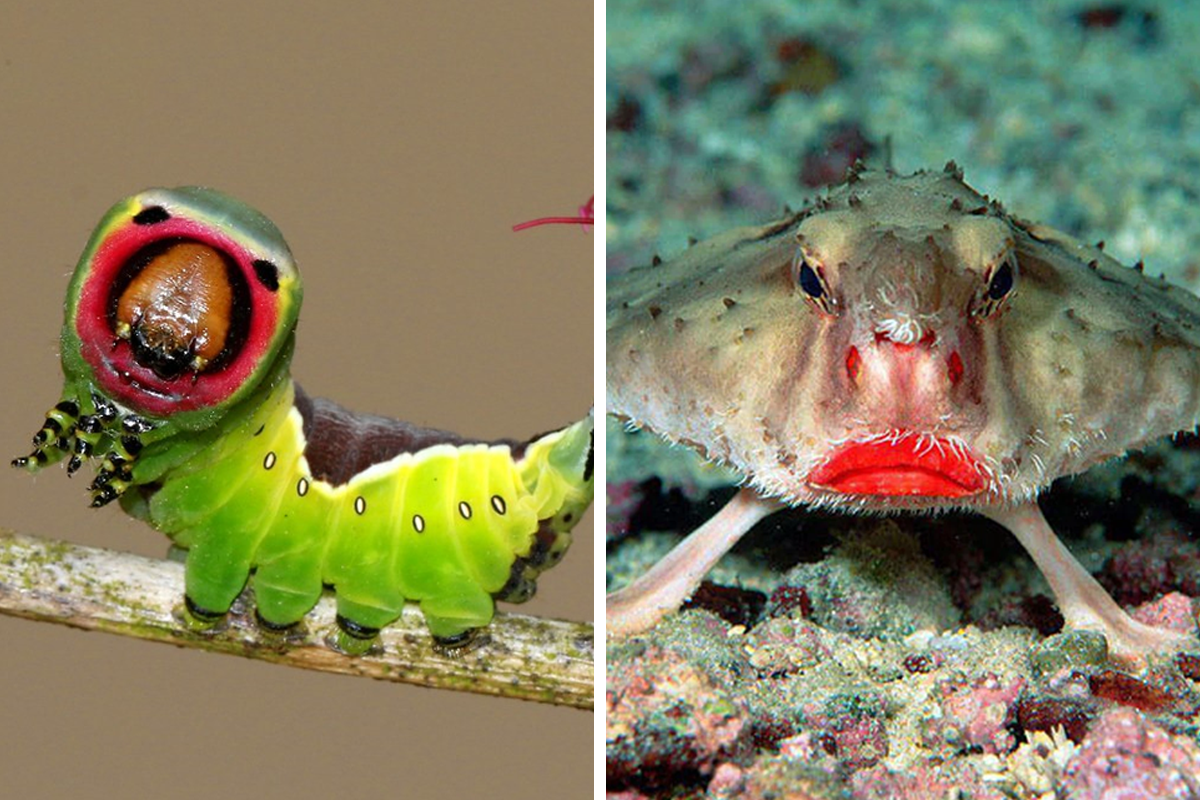
Weird, Funny, Or Bizarre Creatures Of The Earth Shared By This Instagram Account (30 Pics)
You’re walking on a forest path, admiring the walls of trees alongside you. The fresh air, the chirping birds, the crunch of moss and fallen leaves underneath your feet, the distant gurgling of a stream. It’s paradise on earth. A moment of stillness. A time for…what in the heck is that?!
Strange is an understatement, but calling it weird is mayhaps rude. Fact is—Mother Nature has created a plethora of different living beings, and you’ve now come across not one, not two, but dozens of them! The Instagram page @strangest_wildlife has been sharing, well, the strangest bits of wildlife.
From fluffy to spiky to utterly adorable, and to those that look like your sleep paralysis demon, this page has ‘em all, and we at Bored Panda are privileged to be sharing them with you, our dearest little Pandas. Make sure to vote on your favorites and leave your comments below! Let’s enter this forest of feverish daydreams!
This post may include affiliate links.
Quokka: Deemed The World’s Happiest Animal, The Quokka Is Also Known As The Short-Tailed Scrub Wallaby
It is a small macropod about the size of a domestic cat. It is the only member of the genus Setonix. Like other marsupials in the macropod family (such as kangaroos and wallabies), the quokka is herbivorous and mainly nocturnal
Some call them mistakes, Bob Ross calls them happy accidents, but this Instagram page just went the direct route—World’s Strangest Wildlife. It leaves no room for debate as to what you’ll be getting, but the actual critters may leave you more than thoroughly intrigued.
From land to sea, the page is dedicated to sharing “the most rare, beautiful, and strangest creatures and plants of the world,” as said in the bio. So far, they’ve accumulated 5,690 followers eager to get their dose of Mother Nature’s experimental laboratory of secretive creations.
Although these creations may seem intriguing, albeit a little unusual, one must not forget that nature is never black and white; there are a lot of secretive behaviors that wildlife partake in whilst we’re sitting at our desks at work, unaware of the magic.
Mary River Turtle: The One With The Green “Mohawk” Hair (Actually Algae) Is An Australian Species That Split From Other Living Species About 40 Million Years Ago
It has special organs in its cloaca that allow it to draw oxygen from the water. It can stay underwater for up to three days
Frogmouth Bird: They Are Named For Their Large Flattened Hooked Bill And Huge Frog-Like Gape, Which They Use To Capture Insects
Their flight is weak. They rest horizontally on branches during the day, camouflaged by their cryptic plumage. Up to three white eggs are laid in the fork of a branch, and are incubated by the female at night and the male in the day
“I've been called ugly, pug ugly, fugly, pug fugly, but never ugly ugly."
Load More Replies...They remind me of the the two judges up on the balcony on the Muppets show lol. That is some serious stink eye
I very much regret seeing that. Little spooky critters
Load More Replies...The one on the left just marked forty years at the Department of Motor Vehicles, and thinking back on her childhood dreams. Where did it all go wrong?
It looks like the Seattle Seahawks logo from the front! 2017-seatt...67b451.png 
Why is the bird in the right looking at me like it's judging and somehow taunting me regarding my life choices? Reminds me of my grandmother, she look and judges me the same way
They remind me of Martin Brothers' pottery birds. They do look better in real life. I had a couple who used to sit on my clothesline and eat the moths that came to the light.
Wait, their frog-like mouth is why they are called “frogmouth”. Damn, I lost a bet on that one.
Fact Animal, authored by Dan Sharp, a UK-based animal expert, enthusiast and researcher, has made a list of 101 of the greatest animal facts, so I think these will pair very nicely with all of the strange and wondrous pictures you’re already enjoying.
Can you believe that the loudest animal in the world is a mere 2 cm long (0.78 inch) prawn? The pistol shrimp is capable of snapping its claw shut so rapidly that it creates a bubble which collapses to produce a sonic blast, louder than a Concorde’s sonic boom. The shock wave can reach 230 decibels, which is louder than the sound of a gunshot.
The Pallas's Cat (Otocolobus Manul), Also Called Manul, Is A Small Wild Cat With A Broad But Fragmented Distribution In The Grasslands And Montane Steppes Of Central Asia
It is negatively affected by habitat degradation, prey base decline, and hunting, and has therefore been classified as Near Threatened by IUCN since 2002. The Pallas's cat is about the size of a domestic cat. The combination of its stocky posture and long, dense fur makes it appear stout and plush
Dumbo Octopus
The name "dumbo" originates from their resemblance to the title character of Disney's 1941 film Dumbo, having a prominent ear-like fin which extends from the mantle above each eye. There are 15 species recognized in the genus. Prey include crustaceans, bivalves, worms and copepods. The average life span of various Grimpoteuthis species is 3 to 5 years
Black And Rufous Elephant Shrew: One Of The 17 Species Of Elephant Shrew Found Only In Africa
The Black And Rufous Elephant Shrew,(Rhynchocyon Petersi) The Black And Rufous Sengi, Or The Zanj Elephant Shrew, is native to the lowland montane and dense forests of Kenya and Tanzania. Like other members of the genus Rhynchocyon, it is a relatively large species, with adults averaging about 28 cm (11 in) in length and 450-700 g (1.0-1.5 lb) in weight
What if I told you that the world’s deadliest animal isn’t a shark, bear, or tiger, but a mere mosquito? According to the World Health Organization, 725,000 people are killed each year by mosquito-borne diseases such as malaria, dengue fever, and yellow fever.
To prevent yourself from falling prey to these annoying buzzing critters, Mass.gov recommends using insect repellents any time you are outdoors, wearing long-sleeved clothing, repairing damaged window and door screens so those pesky buggers can’t get in, and removing any standing water sources from around your home, so they can’t breed.
Harpy Eagle: The Harpy Eagle (Harpia Harpyja) Is A Neotropical Species Of Eagle
It is also called the American harpy eagle to distinguish it from the Papuan eagle, which is sometimes known as the New Guinea harpy eagle or Papuan harpy eagle. It is the largest and most powerful raptor found throughout its range, and among the largest extant species of eagles in the world. It usually inhabits tropical lowland rainforests in the upper (emergent) canopy layer
Native To A Remote Region Of China, This Tiny Mammal, Known As The Ili Pika, Doesn't Know It's A Member Of An Endangered Species, And Neither Do Most People
Rarer, and some would argue cuter, than the panda, there are less than 1,000 of these teddy bear-like creatures living in the Tianshan mountain range in the Xinjiang region of northwestern China, says conservationist Li Weidong. It was photographed for the first time in two decades last year (2014)
The Sarcastic Fringehead, Neoclinus Blanchardi, Is A Small But Ferocious Fish Which Has A Large Mouth And Aggressive Territorial Behavior, For Which It Has Been Given Its Common Name
When two fringeheads have a territorial battle, they wrestle by pressing their distended mouths against each other, as if they were kissing. This allows them to determine which is the larger fish, which establishes dominance
Getting back to interesting animal facts: Flamingos are not pink. They are born gray; however, their diet of brine shrimp and blue-green algae contains a natural pink dye called canthaxanthin that makes their feathers pink. Wish we as humans could just eat something and change color–oh wait, we can!
Eating too many carrots can turn your skin orange. “Carrots can, in fact, cause an orangish yellow skin pigmentation,” says Dr. Lady Dy, a dermatologist with the Advocate Lutheran General Hospital in Park Ridge, Illinois. “It’s called carotenemia and is often most noticeable on thick skin like the palms of your hands or the soles of your feet.”
The orangish-yellow discoloration is a result of excess beta-carotene in the blood. Other foods that can cause increased pigmentation include squash, sweet potatoes, cantaloupe, and even dried apricots. All these foods are high in beta-carotene. So if you’ve always wanted to be a Simpsons character, there is still hope for you!
The Kakapo Is A Critically Endangered Species With Only About 125 Left
It has finely blotched yellow-green plumage, a distinct facial disc of sensory, vibrissa-like feathers, a large grey beak, short legs, large feet, and wings and a tail of relatively short length. A combination of traits make it unique among its kind; it is the world's only flightless parrot, the heaviest parrot, nocturnal, herbivorous, has a low basal metabolic rate and no male parental care, and is the only parrot to have a polygynous lek breeding system. It is also possibly one of the world's longest-living birds
The Okapi Is A Giraffid Artiodactyl Mammal Native To The Northeast Of The Congo In Central Africa
Although the okapi bears striped markings reminiscent of zebras, it is most closely related to the giraffe. The okapi and the giraffe are the only living members of the family Giraffidae. It has a long neck, and large and flexible ears. Its coat is a chocolate to reddish brown, much in contrast with the white horizontal stripes and rings on the legs and white ankles
Mantis Shrimp Or Stomatopods Are Marine Crustaceans, The Members Of The Order Stomatopoda
Most species can grow to around 10 centimetres (3.9 in) in length, though a few species reach up to 38 cm (15 in). The largest ever caught has a length of 46 cm (18 in) in the Indian River near Fort Pierce, Florida of USA. They sport powerful claws that they use to attack and kill prey by spearing, stunning, or dismemberment. In captivity, some larger species are capable of breaking through aquarium glass with a single strike
If you think these look stunning to our eyes, imagine how colorful they must look to each other. We have only 3 different color receptors in our eyes, while these guys have up to 11(ish, I can't remember exactly).
The last interesting fact about the animal kingdom comes from McGill University. Back in 1996, it was found that koalas have a lot more in common with us humans than meets the eye. Their fingerprints very closely resemble those of humans, which is exceptionally interesting as koalas are evolutionarily distant from humans.
It turns out that fingerprints are an excellent example of convergent evolution, or different species developing similar traits independently from each other. They seem to serve two purposes: First, they aid in grip; Second, they increase the sensitivity of touch, allowing for a finer level of perception.
Police aren’t exactly worried about koala bank robbers, but it is possible that koala fingerprints could be found incidentally at a crime scene and be mistaken for a human’s, making it pretty difficult to find a match. Good thing koalas can’t read, otherwise this might lead to an increase in bank robberies. Tough times for us all, innit?
Maratus Volans: Commonly Known As The Peacock Spider, Due To The Brightly Colored, Circular Flap In The Male’s Abdomen
Just like an actual peacock, the male of this diminutive species raises this flap like a colorful fan and uses it to catch the female’s attention (they have extremely acute eyesight, as do most jumping spiders); it also vibrates its hind legs and abdomen for a more dramatic effect. Another common trait with the peacock is that the male Maratus will sometimes court several females at the same time. Until recently, it was thought that the male peacock spider was capable of gliding through the air; according to some, it would extend the flap when leaping, and therefore increase its jumping distance, hence its name (volans means “flying”). Today we know that the flap is for display purposes only. But that doesn’t make it any less awesome
Cute Or Strange?
The bat-eared fox is a species of fox found on the African savanna, named for its large ears, which are used for thermoregulation. Fossil records show this canid to first appear during the middle Pleistocene, about 800,000 years ago
This “Troll-Haired” Bug Is One Of The Coolest-Looking Insects We’ve Ever Seen
The tiny unidentified creature, which is only 5 millimeters long, was found in the Suriname rainforest by ecologists who discovered 60 new species on a research expedition in 2012. This photo of the planthopper was featured on National Geographic. The bug’s wild “hairdo” is actually waxy secretions from its abdomen that are thought to be a defense mechanism to distract predators from its more vulnerable parts, according to conservation biologist Trond Larsen. “It could be that they fool a predator into attacking the wrong part of the insect, and the wax breaks off while the insect jumps to safety,” The rainforest in southern Suriname is “among the most remote and unexplored tracts of rainforest left on the earth."
Regardless of it all, the strange facts and the strange-looking creatures, there’s charm in that strangeness. Isn’t it wonderful that there are so many different species, different colors, different shapes and sizes? It definitely makes for a more interesting world for aliens to visit!
Dear Pandas, please enjoy the rest of the list, and don’t forget to vote for your favorites! Are there any other creatures that you know of that didn’t make the list? Leave them in the comments below and I shall see you in the next one!
The Capybara Is The Largest Rodent In The World
Close relatives are guinea pigs and rock cavies, and it is more distantly related to the agouti, chinchillas, and the coypu. Native to South America, the capybara inhabits savannas and dense forests and lives near bodies of water. It is a highly social species and can be found in groups as large as 100 individuals, but usually lives in groups of 10–20 individuals. The capybara is not a threatened species and is hunted for its meat, hide and also for a grease from its thick fatty skin which is used in the pharmaceutical trade.
Lowland Streaked Tenrec: They Are Endemic To Madagascar
These unusual insectivores form a rather diverse. Tenrecinae resemble a cross between a shrew and a hedgehog: their snouts are long and pointed, while the coat exhibits spines. The Lowland streaked tenrecs are distinguished by two main features: the first is a rather long, black colored nose, which is longer than that of other small sized insectivores, including hedgehogs, mice and shrews; the other feature is black colored coat, displaying yellow stripes and bright yellow spine crests, located over the top of their head and acting as a mean of self-defense against predators
I feel like this little disgruntled creature represents how I feel (and look like) when I wake up in the morning.
Mexican Salamander(Axolotls) Or A Mexican Walking Fish, Is A Neotenic Salamander, Closely Related To The Tiger Salamander
Although the axolotl is colloquially known as a "walking fish", it is not a fish, but an amphibian. Axolotls are unusual among amphibians in that they reach adulthood without undergoing metamorphosis. Instead of developing lungs and taking to land, the adults remain aquatic and gilled. As of 2010, wild axolotls were near extinction due to urbanization in Mexico City and consequent water pollution. They are currently listed by CITES as an endangered species and by IUCN as critically endangered in the wild, with a decreasing population. Axolotls are used extensively in scientific research due to their ability to regenerate limbs. Axolotls were also sold as food in Mexican markets and were a staple in the Aztec diet.
The Emperor Tamarin, Also Known As The Brockway Monkey, (Saguinus Imperator)
Species of tamarin allegedly named for its resemblance to the German emperor Wilhelm II. It lives in the southwest Amazon Basin, in east Peru, north Bolivia and in the west Brazilian states of Acre and Amazonas. The fur of the emperor tamarin is predominantly grey colored, with yellowish speckles on its chest. The hands and feet are black and the tail is brown. Outstanding is its long, white mustache, which extends to both sides beyond the shoulders
The Angler Fish Is Perhaps One Of The Most Fascinating And Bizarre Sea Creatures Known To Man
Not only known for its wily predation techniques (re: possessing a spine that grows its own glowing fleshy mass, which the fish wiggles about to lure in other predatory sea creatures that it will ultimately devour), the angler fish’s mating habits are rather unique. When scientists first discovered the angler, for instance, they noticed that almost all of those observed were female…and that these specimens had what appeared to be some sort of parasitic growth attached to their lower parts. Turns out that those “parasites” were actually just greatly reduced male angler fish, whose puny size means that the male angler fish’s sole objective in life is to find and mate with a female. Once they do find a female partner, male anglers quickly bite into the female’s skin and thus fuse them together–so much so that all that is discernible of the male angler fish are two globular growths on the female’s skin: its gonads. From this point on, the male’s life literally depends on its female host, as they share a circulatory system. And, well, just about everything else. When the female is ready to mate, the male pays his dues by providing her with sperm on the spot so that she might impregnate herself
A Salp (Plural Salps) Or Salpa (Plural Salpae Or Salpas) Is A Barrel-Shaped, Planktonic Tunicate
It moves by contracting, thus pumping water through its gelatinous body. Salp jet propulsion is one of the most efficient in the animal kingdom. The salp strains the pumped water through its internal feeding filters, feeding on phytoplankton
Although in some way they seem similar to jellyfish, they are actually the most primitive and most abundant animals in the group that includes humans, fish, birds and beasts.
The Red-Lipped Batfish Or Galapagos Batfish Is A Fish Of Unusual Morphology Found Around The Galapagos Islands And Off Peru At Depths Of 3 To 76 M (10 To 249 Ft)
Red-lipped batfish are closely related to rosy-lipped batfish, which are found near Cocos Island off the Pacific coast of Costa Rica. This fish is mainly known for its bright red lips. Batfish are not good swimmers; they use their highly adapted pectoral fins to "walk" on the ocean floor. When the batfish reaches maturity, its dorsal fin becomes a single spine-like projection (thought to function primarily as a lure for prey). Like other anglerfish, the red-lipped batfish has a structure on its head known as illicium. This structure is employed for attracting prey
The Venezuelan Poodle Moth
Very little is known about this moth but it is a possible new species of moth discovered in 2009 by Dr. Arthur Anker of Bishkek, Kyrgyzstan, in the Gran Sabana region of Venezuela. It bears similarities to the Muslin Moth, but most likely belongs to the lepidopteran genus Artace
The Tufted Deer Is A Small Species Of Deer Characterized By A Prominent Tuft Of Black Hair On Its Forehead And Fang-Like Canines For The Males
It is a close relative of the muntjac, living somewhat further north over a wide area of central China northeastern Myanmar and have been recently seen in Afghanistan after it last appearance 60 years ago. Although suffering from overhunting and habitat loss, this deer is not considered to be endangered. It is restricted to forested mountain habitat up to 4500 m above sea level, making study difficult
The Aye-Aye Is A Lemur, A Strepsirrhine Primate Native To Madagascar That Combines Rodent-Like Teeth And A Special Thin Middle Finger To Fill The Same Ecological Niche As A Woodpecker
It is the world's largest nocturnal primate, and is characterized by its unusual method of finding food; it taps on trees to find grubs, then gnaws holes in the wood using its forward slanting incisors to create a small hole in which it inserts its narrow middle finger to pull the grubs out. This foraging method is called percussive foraging. The only other animal species known to find food in this way is the striped possum. From an ecological point of view the aye-aye fills the niche of a woodpecker, as it is capable of penetrating wood to extract the invertebrates within
The Thorny Dragon Or Thorny Devil Is An Australian Lizard, Also Known As The Mountain Devil, The Thorny Lizard, Or The Moloch
This is the sole species of genus Moloch. The thorny devil grows up to 20 cm (8.0 in) in length, and it can live for up to 20 years. Most of these lizards are coloured in camouflaging shades of desert browns and tans. These colours change from pale colours during warm weather and to darker colours during cold weather. These animals are covered entirely with conical spines that are mostly uncalcified
Flower Mantises Are Those Species Of Praying Mantis That Mimic Flowers
Their coloration is an example of aggressive mimicry, a form of camouflage in which a predator's colours and patterns lure prey. Most species of flower mantis are in the family Hymenopodidae. Their behaviour varies, but typically involves climbing a plant until they reach a suitable flower, and then staying still until a prey insect comes within range. Many of these mantises have deimatic displays to startle or put off potential predators
Puss Mouth Catepillar: The Larvae Of The Puss Moth Caterpillar Is Said To Resemble A Persian Cat, Contributing The “Puss” To The Name Of This Intimidating Caterpillar
If the off-putting appearance of this insect were not enough, it also happens to be one of the most toxic caterpillars in North America
This is a picture of a European puss moth caterpillar, *Cerura vinula*. It is harmless to humans. The Southern Flannel moth caterpillar, aka. American puss moth, *Megalopyge opercularis*, looks like a walking toupee and has extremely painful stinging hairs.
The Atlantic Wolffish Is Also Known As The Seawolf, Atlantic Catfish, Ocean Catfish, Devil Fish, Wolf Eel
Numbers of the Atlantic wolffish are diminishing rapidly thought to be due to overfishing, they live in cold waters and have a natural antifreeze in their blood
The Maned Wolf Is The Largest Canid Of South America
Its markings resemble those of foxes, but it is not a fox, nor is it a wolf, as it is not closely related to other canids. It is the only species in the genus Chrysocyon (meaning "golden dog"). This mammal is found in open and semi-open habitats, especially grasslands with scattered bushes and trees
The Panda Ant
The Mutillidae are a family of more than 3,000 species of wasps (despite the names) whose wingless females resemble large, hairy ants. Found in Chile, they are known for their extremely painful stings, hence the common name cow killer or cow ant. Black and white specimens are sometimes known as panda ants due to their hair coloration resembling that of the Chinese giant panda
Barreleyes, Also Known As Spook Fish Are Small Deep-Sea Argentiniform Fish Found In Tropical-To-Temperate Waters Of The Atlantic, Pacific, And Indian Oceans
These fish are named for their barrel-shaped, tubular eyes, which are generally directed upwards to detect the silhouettes of available prey; however, according to Robison and Reisenbichler, these fish are capable of directing their eyes forward, as well. Their eyes are enclosed within a large transparent dome of soft tissue
Barreleyes: its-its just I ws busy yesterday so I could not come friend: there's no point lying to me I CAN SEE RIGHT THROUGH YOU ill see myself out
Pacu: A Common Species Of Omnivorous South American Freshwater Fish That Appear To Have Human Teeth
They are related to the piranha. Pacu and piranha do not have similar teeth, the main difference being jaw alignment; piranha have pointed, razor-sharp teeth in a pronounced underbite, whereas pacu have squarer, straighter teeth, like a human, and a less severe underbite, or a slight overbite. Additionally, full-grown pacu are much larger than piranha, reaching up to 0.9 m (3 feet) and 25 kg (55 pounds) in the wild
The Glass Frog
Yes, you can see its unborn offspring THROUGH ITS FLESH. While the general background coloration of most glass frogs is primarily lime green, the abdominal skin of some members of this family is translucent. The internal viscera, including the heart, liver, and gastrointestinal tract, are visible through this translucent skin, hence the common name
A Tarsier Is A Small Primate, Weighing Around 150g
It has remarkably large eyes, each one the same size and weight as its brain. A tarsier's hindlimb length is the result of elongation of the foot's tarsal bones, unique among mammals. This clever adaptation gives it the longest hindlimbs of any mammal relative to body length, without loss of dexterity. There are fewer than ten species of tarsier, all similarly adept at leaping and clinging. Once attached to tree they can be incredibly difficult to remove. Once widespread, tarsiers were once found in North America, Europe and Asia. Today their range is restricted to the forested archipelagos of southeast Asia
The Malayan Tapir, Also Called The Asian Tapir, Is The Largest Of The Five Species Of Tapir And The Only One Native To Asia
The animal is easily identified by its markings, most notably the light-colored patch that extends from its shoulders to its rear end. The rest of its hair is black, except for the tips of its ears, which, as with other tapirs, are rimmed with white. This pattern is for camouflage; the disrupted coloration makes it more difficult to recognize it as a tapir, and other animals may mistake it for a large rock rather than prey when it is lying down to sleep. When they are born, the babies are striped
Crocodile Icefish
It is unique in the animal world thanks to its astonishingly clear blood. The fish has no scales, and its blood contains no haemoglobin, the substance that makes blood red. The rare icefish can flourish in part because of the high oxygen content of the cold waters of the Southern Ocean. It has also developed the ability to use blood plasma to circulate oxygen through the body
The Pangolin Is A Mammal Of The Order Pholidota
They have large, protective keratin scales covering their skin. The pangolin is the only known mammal with this adaptation. They live in hollow trees or burrows, depending on the species. Pangolins are nocturnal, and their diet consists of mainly ants and termites which they capture using their long, specially adapted tongues. They tend to be solitary animals, meeting only to mate and produce a litter of one to three offspring which are raised for about two years. Pangolins are threatened by hunting (for their meat and armor) and heavy deforestation of their natural habitats. They are the most trafficked mammal in the world
Hydrocynus Goliath, Also Known As The Goliath Tigerfish, Giant Tigerfish, Or Mbenga, Is An African Predatory Freshwater Fish
This large-toothed, highly predatory fish grows to a length of 1.5 metres (4.9 ft) and a weight of 15.5 kilograms (34 lb). A number of incidents have been reported in The Congo of this fish attacking humans. This seems to be the result of disturbances and flashing objects in the water that makes the fish mistake a human for a large fish. This reputation, combined with its strength, has earned it an almost mythical status among anglers, and it has been called the "greatest freshwater gamefish in the world. According to locals living near the river, the evil spirit "mbenga" would enter the fish and make it attack people
How about we stop this nonsense of fishing for "fun"? Can you think of another animal where it would be considered okay to go out at the weekend with a bunch of baited hooks with the intention of catching them by the mouth, "playing" them for a while while they scream and struggle, handling them and causing them immense stress, taking a proud picture and then releasing them as though that's fine and normal behavior? Ever watched a tv fishing show? Hear the giggling and laughing as they torture some poor animal for their entertainment? How is this still acceptable?
The Pygmy Marmoset (Cebuella Pygmaea) Is A Small New World Monkey Native To Rainforests Of The Western Amazon Basin In South America
It is notable for being the smallest monkey and one of the smallest primates in the world at just over 100 grams (3.5 oz). It is generally found in evergreen and river edge forests and is a gum-feeding specialist. About 83% of the pygmy marmoset population lives in stable troops of two to nine individuals, including a dominant male, a breeding female, and up to four successive litters of offspring. The modal size of a standard stable troop would be 6 individuals.Although most groups consist of family members, some may also include 1-2 additional adult members. Members of the group communicate using a complex system including vocal, chemical, and visual signals. There are three main calling signals that depend on the distance the call needs to travel. These monkeys may also make visual displays when threatened or to show dominance
This Strange Fish (Yes, It Is A Fish!) That Looks More Like A Gigantic Rock Or Fossil Is Actually The Heaviest Known Bony Fish In The World
The Mola Mola, as the Ocean Sunfish is also known can grow up to 1.8 – 3.3m (5.9- 10.8 ft) and can weigh a staggering 1,000 kg (2,200 lbs)! Native to temperate and tropical waters around the World, this Pelagic fish can swim to depths of about 600 m (2,000 ft). This monster of a fish is seemingly docile towards humans and many divers have enjoyed the company of the Ocean Sunfish while Scuba diving. The fish however is not so loved by boaters as there have been instances of sunfish colliding with boats while surfacing causing significant damage to the boats. Ocean Sunfish can even jump out the water at the surface up to a height 10 feet (3 meters) in the air and land with a splash to shake off parasites that infest their skin
In German they are called 'Mondfisch' moonfish, so the opposite of sunfish. They are teenie tiny when they hatch and feed on mostly jellyfish. They are said to be some of the few winners of global warming.
The World's Smallest Species Of Snake, With Adults Averaging Just Less Than Four Inches In Length, Has Been Identified On The Caribbean Island Of Barbados
The species, which is as thin as a spaghetti noodle and small enough to rest comfortably on a U.S. quarter. L. carlae is thought to feed primarily on a diet of termites and ant larvae. Threadsnakes are oviparous, laying eggs to reproduce. The female of this snake species produces only one large egg at a time. The emerging offspring is about half the length of the mother
Theridion Grallator, Also Known As The Happy Face Spider, Is A Spider In The Family Theridiidae
Its Hawaiian name is nananana makakiʻi (face-patterned spider). Certain morphs have a pattern resembling a smiley face or a grinning clown face on their yellow body. Each spider has a unique pattern, and the patterns differ from island to island. Some lack markings altogether. The variation is possibly a kind of camouflage against birds, their only natural enemies of significance, to counteract pattern recognition by predators. As the pattern may change according to what food the spider has eaten. It is very small, hides during the day, and is thus not a significant prey item for any species of predator, it is more likely that the bizarre variety of patterns serves no significant adaptive purpose at all
The Gerenuk Is A Long-Necked Species Of Antelope Found In Dry Thorn Shrubland And Desert In The Horn Of Africa And The African Great Lakes Region
The Gerenuk, Litocranius Walleri, Also Known As The Waller's Gazelle. The word gerenuk comes from the word in the Somali language, Garanuug, meaning "giraffe-necked". Gerenuk are sometimes also called the giraffe-necked antelope
Mwanza Flat Headed Agama Lizard Or The Spider-Man Agama, Because Of Its Coloration, Is A Lizard In The Family Agamidae, Found In Tanzania, Rwanda, And Kenya
It lives in semideserts and can often be seen in the heat of the day basking on rocks or kopjes. The male's head, neck, and shoulders are bright red or violet, while the body is dark blue. The female is mostly brown and is difficult to distinguish from female agamas of other species. The species has become a fashionable pet due to its coloration, which resembles the comic-book superhero Spider-Man
Shoebill Bird: The Shoebill Also Known As Whalehead Or Shoe-Billed Stork, Is A Very Large Stork-Like Bird
It derives its name from its massive shoe-shaped bill. Although it has a somewhat stork-like overall form and has previously been classified in the order Ciconiiformes, its true affiliations with other living birds is ambiguous. The adult is mainly grey while the juveniles are browner. It lives in tropical east Africa in large swamps from Sudan to Zambia
A Nudibranch Is A Group Of Soft-Bodied, Marine Gastropod Mollusks Which Shed Their Shells After Their Larval Stage
They are noted for their often extraordinary colors and striking forms. Currently, about 2,300 valid species of nudibranchs are known. Nudibranchs are often casually called sea slugs, but many sea slugs belong to several taxonomic groups which are not closely related to nudibranchs
Pink Sea Through Fantasia Is An Incredible Creature That Was Only Recently Discovered
It is a previously unknown species of free swimming sea cucumber. The aptly named Pink Sea Through Cucumber was found in the Celebes Sea. This is a remote area of the western Pacific Ocean. The area is bordered by the Sulu Archipelago, Mindanao Island of the Philippines, the Sangihe Islands, Sulawesi, and by Indonesia. The Pink Sea Through Fantasia was discovered dwelling at a depth of approximately 8,200 ft. (2,500 m.). The amazing creature was discovered by a team of scientists and underwater photographers. They were from the National Oceanic And Atmospheric Administration. The experts were working in conjunction with others on a research expedition. Virtually no data is available on this creature to date
The Saiga Antelope Is A Critically Endangered Antelope That Originally Inhabited A Vast Area Of The Eurasian Steppe Zone
Today, the dominant subspecies is only found in one location in Russia and three areas in Kazakhstan. It is extinct in People's Republic of China and southwestern Mongolia. It was hunted extensively in Romania and Moldova until it became extinct in those regions in the end of the 18th century
Deep-Sea Hatchetfishes Are Small Deep-Sea Mesopelagic Ray-Finned Fish
There are about 45 species of hatchetfish that vary in size from one to six inches. They are most well known for their extremely thin bodies that resemble the blade of a hatchet and ability to create their own light through a process called bioluminescence. These special light-producing organs are known as photophores, which run along the length of the body. Scientists predict that they can adjust the intensity of their lights to make them nearly invisible from predators. Hatchetfish are found in most temperate waters around the world and at depths ranging from 180 to 1,370 metres
The Flemish Giant Is A Semi-Arch Type Rabbit With Its Back Arch Starting In Back Of The Shoulders Giving A "Mandolin" Shape
The body of a Flemish Giant Rabbit is long and powerful, with relatively broad hindquarters. The fur of the Flemish Giant is known to be glossy and dense. When stroked from the hindquarters to the head, the fur will roll back to its original position. Bucks have a broad, massive head in comparison to does, and can take 1.5 years to reach full maturity. Flemish Giant Rabbits weigh 15 pounds on average, though the biggest ones can weigh up to 22 lb, and the longest one on record (in fact, holding the record for the longest rabbit in the world of any kind), measured about 32 inches long
Bush Babies, Also Called Galagos, Are Small, Saucer-Eyed Primates That Spend Most Of Their Lives In Trees
At least 20 species of galago are known, though some experts believe many are yet to be discovered. Also known as nagapies, which means “night monkeys” in Afrikaans, all galagos are considered nocturnal
Zebra Duiker Is A Type Of Small Antelope
It can be found only in the certain parts of West Africa: in the eastern parts of Liberia, on the Ivory Coast and in the Sierra Leone. Zebra duiker prefers a life in dense vegetation of rainforests. Number of zebra duiker declined for 30% compared to original population due to extensive habitat loss and hunt in the last couple of years. Local people hunt zebra duiker because of its meat. These animals are listed as vulnerable. If the current tempo of extinction continues, they will soon become endangered
Oh they're so cute! They have them at a lot of zoos (edit: In the States at least)
The Mata Mata Is Strictly An Aquatic Species But It Prefers Standing In Shallow Water Where Its Snout Can Reach The Surface To Breathe
The Mata Mata inhabits slow moving, blackwater streams, stagnant pools, marshes, and swamps ranging into Northern Bolivia, Eastern Peru, Ecuador, Eastern Colombia, Venezuela, The Guianas, and Northern and Central Brazil
The Platypus, Also Known As The Duck-Billed Platypus Is A Semiaquatic Egg-Laying Mammal Endemic To Eastern Australia, Including Tasmania
Together with the four species of echidna, it is one of the five extant species of monotremes, the only mammals that lay eggs instead of giving birth. The unusual appearance of this egg-laying, duck-billed, beaver-tailed, otter-footed mammal baffled European naturalists when they first encountered it, with some considering it an elaborate hoax. It is one of the few venomous mammals, the male platypus having a spur on the hind foot that delivers a venom capable of causing severe pain to humans
Glaucus Atlanticus (Common Names Include The Sea Swallow, Blue Angel, Blue Glaucus, Blue Dragon, Blue Sea Slug And Blue Ocean Slug) Is A Species Of Small, Blue Sea Slug, A Pelagic Aeolid Nudibranch, A Shell-Less Gastropod Mollusk In The Family Glaucidae
These sea slugs are pelagic: they float upside down on the surface tension of the water, where they are carried along by the winds and ocean currents. Glaucus atlanticus is camouflaged: the blue side of their body faces upwards, blending in with the blue of the water. The silver/grey side of the sea slugs faces downwards, blending in with the silvery surface of the sea
Tardigrades (Also Known As Waterbears Or Moss Piglets) Are Water-Dwelling, Segmented Micro-Animals, With Eight Legs
Since 1778, over 1,150 tardigrade species have been identified. Tardigrades can survive in extreme environments. For example, they can withstand temperatures from just above absolute zero to well above the boiling point of water (100 °C), pressures about six times greater than those found in the deepest ocean trenches, ionizing radiation at doses hundreds of times higher than the lethal dose for a human, and the vacuum of outer space. They can go without food or water for more than 10 years, drying out to the point where they are 3% or less water, only to rehydrate, forage, and reproduce
An Independent Researcher Has Described A Spectacular Red, White, And Blue Crayfish Just In Time For The Fourth Of July
The new species, named Cherax pulcher, was first discovered in Japanese pet shops by Christian Lukhaup before he finally tracked down the animal to creeks in remote West Papua, Indonesia. "These creeks aren't named on any map so they're really not easy to find. It also didn't help that the tribal locals were really protective," Christian told the Mirror. "Once I'd found some crayfish inside a cave, I turned around and saw them standing there with bows and arrows pointing at me. I had to put them down. It seems, the tribes relate the crayfish with pregnancy, and they thought if I took them no women would have children again." Eventually, though, he was able to gather some specimens and describe the species in a recent paper published in ZooKeys in May. Lukhaup found that the males of the species were more brightly colored than the females and gave the species the name Pulcher, which means beautiful in Latin
These Bats Are Known As Megabats, Fruit Bats, Old World Fruit Bats, Or Flying Foxes
They are the largest bats in the world. They are restricted to the Old World in a tropical and subtropical distribution, ranging no further than the eastern Mediterranean and South Asia, and are absent from northwest Africa and southwest Australia. Compared to insectivorous bats, fruit bats are relatively large and, with some exceptions, do not navigate by echolocation. They are herbivores and rely on their keen senses of sight and smell to locate food. Most fruit bats are larger than insectivorous bats or Microchiroptera. The largest attain a wingspan of 1.7 m (5.6 ft), weighing in at up to 1.6 kg (3.5 lb). Most fruit bats have large eyes, allowing them to orient themselves visually in twilight and inside caves and forests
Brahmin Moth Caterpillar
From the family of insects called Brahmaidae, it’s hard to imagine why such a bizarre looking thing exists, or what possible reason it has to look like this in its caterpillar stage. Some believe that the spindles on their heads help them blend in with the twigs and small branches found of foliage. Certainly, when they are moths, they are perfectly camouflaged for trees. Also, once they turn into moths, they have a wingspan that can reach up to 20cm (just over 7 inches)
The Fossa Is The Largest Mammalian Carnivore On The Island Of Madagascar And Has Been Compared To A Small Cougar
Adults have a head-body length of 70–80 cm (28–31 in) and weigh between 5.5 and 8.6 kg (12 and 19 lb), with the males larger than the females. It has semiretractable claws and flexible ankles that allow it to climb up and down trees head-first, and also support jumping from tree to tree. The fossa is unique within its family for the shape of its genitalia, which share traits with those of cats and hyenas
Meet The Snake-Mimicking Butterfly (Dynastor Darius)
While this slick master of disguise may show off impeccable imitation skills, prior to taking on this serpentine appearance it was simply a furry, nondescript caterpillar, and it looked pretty much how you would expect any old caterpillar to look.To enter into the pupal stage, D. darius must form a chrysalis to kickstart its metamorphosis into a snake-mime. The protective case in which the butterfly larva liquefies itself does bear a strong resemblance to the carnivorous reptiles, much like the galled face of a Metapod. The pods hang from leaves in the forests of Trinidad for up to 13 days. While the insect changeling is immobile this sly animal trickery can ward off potential predators, such as birds, fooling them into thinking that the unmoving pod is the head of a potential predator
The Grey Crowned Crane Is A Bird In The Crane Family Gruidae
It occurs in dry savannah in Africa south of the Sahara, although it nests in somewhat wetter habitats. They can also be found in marshes, cultivated lands and grassy flatlands near rivers and lakes in Uganda and Kenya and as far south as South Africa. This animal does not migrate. There are two subspecies. It has a larger area of bare red facial skin above the white patch than the smaller nominate species
The Star-Nosed Mole Is A Small Mole Found In Moist Low Areas Of Eastern Canada And The Northeastern United States
The star-nosed mole is easily identified by the twenty-two pink fleshy appendages ringing its snout, which is used as a touch organ with more than 25,000 minute sensory receptors, known as Eimer's organs, with which this hamster-sized mole feels its way around. With the help of its Eimer's organs, it may be perfectly poised to detect seismic wave vibrations
Pink Fairy Armadillo
The pink fairy armadillo or pichiciego is the smallest species of armadillo (mammals of the family Dasypodidae, recognized by a bony armor shell). This desert-adapted animal is endemic to central Argentina and can be found inhabiting sandy plains, dunes, and scrubby grasslands
Dugong Is A Medium-Sized Marine Mammal
It is one of four living species of the order Sirenia, which also includes three species of manatees. It is the only living representative of the once-diverse family Dugongidae; its closest modern relative, Steller's sea cow was hunted to extinction in the 18th century. The dugong is the only strictly marine herbivorous mammal, as all species of manatee use fresh water to some degree. The dugong is largely dependent on seagrass communities for subsistence and is thus restricted to the coastal habitats which support seagrass meadows, with the largest dugong concentrations typically occurring in wide, shallow, protected areas such as bays, mangrove channels, the waters of large inshore islands and inter-reefal waters. The northern waters of Australia between Shark Bay and Moreton Bay are believed to be the dugong's contemporary stronghold. The dugong has a fusiform body with no dorsal fin or hind limbs. The forelimbs or flippers are paddle-like . The dugong is easily distinguished from the manatees by its fluked, dolphin-like tail, but also possesses a unique skull and teeth. Its snout is sharply downturned, an adaptation for feeding in benthic seagrass communities. The molar teeth are simple and peg-like unlike the more elaborate molar dentition of manatees
Can You Spot The Gecko?
Satanic Leaf tailed gecko (Uroplatus phantasticas) There are few geckos as bizarre and as fascinating as the satanic leaf-tailed gecko (Uroplatus phatantasicas), also referred to as “Phants” for short. These geckos' remarkable ability to mimic a leaf has captivated reptile hobbyists for decades. Originally described by George Albert Boulenger in 1888, Uroplatus phantasticas occurs in the tropical forests of the central to north east coast of Madagascar
Horseshoe Crabs Are Marine Arthropods Of The Family Limulidae And Order Xiphosura Or Xiphosurida, That Live Primarily In And Around Shallow Ocean Waters On Soft Sandy Or Muddy Bottoms
They occasionally come onto shore to mate. They are commonly used as bait and in fertilizer. In recent years, a decline in the population has occurred as a consequence of coastal habitat destruction in Japan and overharvesting along the east coast of North America. Tetrodotoxin may be present in the roe of species inhabiting the waters of Thailand. Because of their origin 450 million years ago (Mya), horseshoe crabs are considered living fossils
I have the greatest photo of me showing up with the shell of one of these to a group picture and my friend just frEAKing out
The Three-Horned Chameleon, Also Known As Johnston’s Chameleon, Is An East-African Species, Endemic To Uganda, Rwanda And The Drc
Males and females can easily be differentiated by the presence or absence of this chameleon’s three characteristic horns. As with most chameleons, this species is capable of changing their coloration. Camouflage is one of the known factors which regulates chameleons coloration
Less common than the Jackson's chameleon, although visually rather similar. I am surprised this one was picked rather than the Jackson's, as the Jackson's is viviparous - it births live babies instead of laying eggs.
The Seahorse
It is a simple story that we have all heard before: Boy meets girl. Boy courts girl. Boy and girl fall in love, get married. Boy gets pregnant. Yes, you heard correctly! Male seahorses accept the eggs, fertilize them and carry the eggs to term. In fact, the seahorse is the only animal where the male becomes truly pregnant. So, how does this even work? The female inserts her oviduct (where anywhere from 50-1500 eggs will travel through) into the male’s specially adapted brood pouch (located on his abdomen). When the eggs are in place, the male fertilizes them and clings to a nearby plant and proceeds to wait a few weeks for the eggs to mature. Every morning during the gestation period, the female seahorse will visit the male and engage in a greeting ritual that lasts for several minutes, before leaving once again. After a few weeks, the male will give birth to live young at night, and then return to his mate the following morning for the next batch of eggs
Devil’s Flower Mantis: These Mantises Are Very Good At Mimicking The Flowers They Sit On
They will wait completely still until prey arrives, which they will then snatch right up. They like to eat flies, moths, butterflies and beetles. Thousands of these insects are sold as pets every year!
The Thorny Dragon Or Thorny Devil Is An Australian Lizard, Also Known As The Mountain Devil, The Thorny Lizard, Or The Moloch
The thorny devil grows up to 20 cm (8.0 in) in length, and it can live for up to 20 years. Most of these lizards are coloured in camouflaging shades of desert browns and tans. These colours change from pale colours during warm weather and to darker colours during cold weather. These animals are covered entirely with conical spines that are mostly uncalcified. The thorny dragon also features a spiny "false head" on the back of its neck, and the lizard presents this to potential predators by dipping its real head. The "false head" is made of soft tissue
Patagonian Mara: A Relatively Large Rodent In The Mara Genus
It is also known as the Patagonian cavy, Patagonian hare or dillaby. This herbivorous, somewhat rabbit-like animal is found in open and semi-open habitats in Argentina, including large parts of Patagonia. It is monogamous, but often breeds in warrens that are shared by several pairs
The African Wild Dog (Lycaon Pictus), Or African Painted Dog, Is A Canid Native To Sub-Saharan Africa
The African wild dog is a highly social animal, living in packs with separate dominance hierarchies for males and females. Uniquely among social carnivores, it is the females rather than the males that scatter from the natal pack once sexually mature, and the young are allowed to feed first on carcasses. Like other canids, it regurgitates food for its young, but this action is also extended to adults, to the point of being the bedrock of African wild dog social life. It has few natural predators, though lions are a major source of mortality
Dracaena Cinnabari, The Socotra Dragon Tree Or Dragon Blood Tree, Is A Dragon Tree Native To The Socotra Archipelago In The Indian Ocean
The dragon blood tree is the most famous and distinctive plant of the island of Socotra. It has a unique and strange appearance, described as "upturned, densely packed crown having the shape of an uprightly held umbrella". This evergreen species is named after its dark red resin, which is known as "dragon's blood". When cut, it appears to bleed because of the color of the sap
Passiflora, Known Also As The Passion Flowers Or Passion Vines, Is A Genus Of About 500 Species Of Flowering Plants, The Namesakes Of The Family Passifloraceae
They are mostly vines, with some being shrubs, and a few species being herbaceous. For information about the fruit of the passiflora plant, see passionfruit. The monotypic genus Hollrungia seems to be inseparable from Passiflora, but further study is needed
We had some in our garden. The flowers look very alien-like but they're beautiful
Fan Horned Beetle
This small family has not been well studied in Australia and as a result little is known of their biology and ecology. There are only 6 species of Rhipiceridae in Australia and all belong to the genus Rhipicera. Adults range in size from 10 to 25 millimetres in length and can be recognised by their large fan-like antennae. The antennae of males are unusual in that they have more than 20 segments and arise from small knob-like prominences. Most species are grey-black in colour with white spots on the elytra and pronotum, formed by patches of hair
Colugos Are Arboreal Gliding Mammals Found In Southeast Asia
Just two extant species make up the entire family Cynocephalidae. They are the most capable gliders of all gliding mammals, using flaps of extra skin between their legs to glide from higher to lower locations. They are also known as cobegos or flying lemurs, though they are not true lemurs
Umbonia Spinosa
These thorn bugs are related to cicadas, and use their beaks to pierce plant stems to feed upon their sap. Their strange appearance still poses many questions to scientists
Feather Stars Are Invertebrates (Class Crinoidea) Of The Phylum Echinodermata
The arms, which have feathery fringes and can be used for swimming, usually number five. Feather stars use their grasping “legs” (called cirri) to perch on sponges, corals, or other substrata and feed on drifting microorganisms, trapping them in the sticky arm grooves. Feather stars occur chiefly on rocky bottoms in shallow water. They are most abundant from the Indian Ocean to Japan, where Tropiometra is the commonest genus. Antedon is the best known genus in the Atlantic
Long Horned Orb Weaver Spider
This is the type of creature that’s cool to see in photos but you never want to see in your home. The long-horned orb weaver spider has eight eyes and long, horn-looking spines protruding from its abdomen. This particular spider can be found in the forests and fields of Asia
The Goblin Shark Is A Rare Species Of Deep-Sea Shark
Sometimes called a "living fossil", it is the only extant representative of the family Mitsukurinidae, a lineage some 125 million years old. This pink-skinned animal has a distinctive profile with an elongated, flattened snout, and highly protrusible jaws containing prominent nail-like teeth. It is usually between 3 and 4 m (10 and 13 ft) long when mature, though it can grow considerably larger. Goblin sharks inhabit upper continental slopes, submarine canyons, and seamounts throughout the world at depths greater than 100 m (330 ft), with adults found deeper than juveniles
Sea Pigs Are In Fact A Type Of Sea Cucumber
Sea cucumbers are echinoderms, a group of marine animals that includes sea urchins and starfish.Sea pigs are found in all the world’s oceans. In some areas, they comprise more than 95% of the total weight of animals on the deep-sea floor. Despite their abundance, most people will never see a sea pig, as they live in the coldest and deepest parts of the ocean
Everyone, Meet Bocydium Globulare
Better known as the Brazilian treehopper, B. globulare excels at living a solitary life, hanging out on the leaves of glory bushes, and head-sphering its way into your nightmares. The first thing you may notice about the treehopper is the odd antenna-like round appendages on its head. They look like eyes, but they are simply ornamental and without a real function. Although it’s possible that the globe-like appendages are there to deter predators
Yeti Crab
Kiwa hirsuta is a crustacean discovered in 2005 in the South Pacific Ocean. This decapod, which is approximately 15 cm (5.9 in) long, is notable for the quantity of silky blond setae (resembling fur) covering its pereiopods (thoracic legs, including claws). Its discoverers dubbed it the "yeti lobster" or "yeti crab"
"A unicorn?!? it's so FLUFFY! I think I'm going to die!" -Agnes, Despicable Me
An English Angora Rabbit
The Angora rabbit is a variety of domestic rabbit bred for its long, soft wool. The Angora is one of the oldest types of domestic rabbit, originating in Ankara (historically known as Angora), present day Turkey, along with the Angora cat and Angora goat. The rabbits were popular pets with French royalty in the mid-18th century, and spread to other parts of Europe by the end of the century. They first appeared in the United States in the early 20th century. They are bred largely for their long Angora wool, which may be removed by shearing, combing, or plucking
Just because you can breed anything does not mean you should. Poor bugger.
Pyura Chilensisit Can Be Difficult To Believe, But These “Rocks” Are Living, Breathing Organisms
Their appearance allows them to blend into Chilean beaches and avoid predators. Interestingly, these creatures have both male and female organs and can breed individually. Pyura chilensis is a tunicate that somewhat resembles a mass of organs inside a rock. It is a filter feeder that eats by sucking in seawater and filtering out microorganisms
The Ornate Horned Frog (Ceratophrys Ornata) Is One Of Several Species Of Horned Frogs Native To The Tropical And Montane Rain Forests
A few species of Ceratophrys can be found in more arid regions. Native to Northern Argentina, Uruguay and the Rio Grande do Sul region of Brazil, these carnivorous amphibians become very large. Their current popular name of "Pac-man Frog" eloquently describes their appearance when they lunge at prey: they appear to be all mouth. These frogs have exceptionally fast growth rates: within two weeks of hatching they have metamorphosed into their adult frog form. Ornates have round, plump body shapes with little demarcation between their wide head and body. Their mouths are as wide as their heads and are equipped with strong gripping jaws and a wide, pink fleshy tongue
Indian Purple Frog Is A Frog Species Belonging To The Family Sooglossidae
It can be found in the Western Ghats in India. Names in English that also have been used for this species are purple frog or pignose frog. With its closest relatives in the Seychelles, Nasikabatrachus is thought to have evolved separately for millions of years. Its discovery also adds to the evidence that Madagascar and the Seychelles separated from the Indian landmass sometime well after the breakup of Gondwana had started
Rafflesia Arnoldii: The Largest Flower In The World, This Parasitic Plant Can Bloom Over Three Feet Tall
Despite its alluring appearance, the plant exudes a pungent smell and has no leaves, stems or roots. The large center can hold six to seven quarts of water
While it technically has no stems or roots it isn't just a flower sitting there on its own. Parasites in the genus Rafflesia use organs called haustorium to invade the tissue of a host plant and extract water and nutrients from it. It has lost the genes necessary to produce chloroplasts, and does not photosynthesize. The pungent smell attracts flies and beetles, which pollinate the flower.
Members Of The Genus Cephalotes, Often Called "Turtle" Ants, Are More Or Less Living Corks, Their Heads Shaped To Perfectly Seal Off The Entrance To The Colony
Rather than constructing one of their own, these ants typically colonize the abandoned tunnels of wood-boring beetles, their plug-faces adapted to just the right size for just the right beetle burrows. In addition to their highly specialized headgear, some Cephalotes are also adapted for gliding, their aerodynamic bodies allowing them to swoop back to their home tree should they fall from its higher branches
Recently, A Team From The Nautilus Live Expedition Happened Upon One Of The Most Fascinating-Looking Lifeforms In The World: A Rare, Purple Siphonophore
Even the experienced deep sea explorers, well-acquainted with the marine animals, had a hard time accepting that what they were seeing was really real. Amazingly, although this appears to be a single jellyfish-like animal, it is in fact a roving colony made up of thousands of individual organisms, called zooids, each contributing to the whole. However, more than just its otherworldly shape, this specimen's purple coloring is said to be rather unusual as well
The Northern Bald Ibis, Or Waldrapp Is One Of The Rarest Birds On The Planet
It's a migratory bird found in barren, semi-desert or rocky habitats, often close to running water. This 70–80 cm (28–31 in) glossy black ibis, which, unlike other members of the ibis family, is non-wading, has an unfeathered red face and head, and a long, curved red bill. The northern bald ibis was once widespread across the Middle East, northern Africa, southern and central Europe, with a fossil record dating back at least 1.8 million years. It disappeared from Europe over 300 years ago, and is now considered critically endangered. There are believed to be about 500 wild birds remaining in southern Morocco, and fewer than 10 in Syria, where it was rediscovered in 2002
The Longhorn Cowfish Inhabit The Reefs Of The Indo-Pacific, Usually In The Less Turbid Waters
The body is tan to yellow and covered with white and blue dots, and is occasionally referred to as the Yellow Boxfish. Adults are reef fish, often solitary and territorial, live around sand or rubble bottom up to a depth of 50 m. They are omnivorous, feeding upon benthic algae, various microorganisms, and foraminiferans that it strains from sediments, sponges, polychaete worms from sand flats, mollusks, small crustaceans, and small fishes, able to feed on benthic invertebrates by blowing jets of water into the sandy substrate
The Giraffe Weevil Is A Weevil Species Endemic To The Forests Of Madagascar
it was discovered in 2008, hence little is known about it. As you have probably guessed, it's named this way due to having an extended neck, much like giraffes do. The giraffe weevil is sexually dimorphic, meaning that there is a great phenotypic difference between males and females of the same species. Specifically, males have a neck that is 2 to 3 times longer than their female counterparts. The extended neck is an adaptation that is used for intraspecific combat and nest building. Males have a length of almost an inch (2.5 cm), making them one of the longest Attelabidae species. Most of their body is black, except for their distinctive red elytra that cover their wings. The species is capable of flight
The Proboscis Monkey Or Long-Nosed Monkey, Known As The Bekantan In Indonesia, Is A Reddish-Brown Arboreal Old World Monkey That Is Endemic To The Southeast Asian Island Of Borneo
This species co-exists with the Bornean orangutan. The monkey also goes by the Malay name monyet belanda ("Dutch monkey"), or even orang belanda ("Dutchman"), as Indonesians remarked that the Dutch colonisers often had similarly large bellies and noses. This species of monkey is easily identifiable because of its unusually large nose
Chapin's Free-Tailed Bat Is A Relatively Small Species
Measuring 8 to 12 cm (3.1 to 4.7 in) in length, including a 3 cm (1.2 in) tail, and weighing around 10 g (0.35 oz). The body has pale cinnamon-brown or greyish fur that fades to near-white towards the middle of the belly. The wings are white or pale brown in colour. A distinctive "Mohawk" or crest of hair rises from a small lappet between the ears. This is relatively small and bland in females, but is three times larger, at up to 15 mm (0.59 in) long, and striking bi-coloured in males, being reddish chestnut at the base, and whitish above. The crest is especially well developed in breeding males, and helps to disperse scent from a gland at its base
Scorpaenidae, The Scorpionfish, Are A Family Of Mostly Marine Fish That Includes Many Of The World's Most Venomous Species
As the name suggests, scorpionfish have a type of "sting" in the form of sharp spines coated with venomous mucus. The family is a large one, with hundreds of members. They are widespread in tropical and temperate seas, but mostly found in the Indo-Pacific. These fish can be found in many different shapes and colors
It looks like a fluffy whiteboard eraser after a first grade class is done with it...
The Hercules Beetle (Dynastes Hercules) Is The Most Famous And The Largest Of The Rhinoceros Beetles
It is native to the rainforests of Central America, South America, and the Lesser Antilles. It is the largest of the six species in the Dynastes genus, and one of the largest beetles known, up to 17 cm (6.5 in) in size. They roam the forest floor in search of decaying fruit
The Coconut Crab Is A Species Of Terrestrial Hermit Crab, Also Known As The Robber Crab Or Palm Thief
It is the largest land-living arthropod in the world, and is probably at the upper size limit for terrestrial animals with exoskeletons in recent Earth atmosphere, with a weight of up to 4.1 kg (9.0 lb). It can grow to up to 1 m (3 ft 3 in) in length from leg to leg. It is found on islands across the Indian Ocean and parts of the Pacific Ocean as far east as the Gambier Islands mirroring the distribution of the coconut palm; it has been extirpated from most areas with a significant human population, including mainland Australia and Madagascar
The Horned Guan (Oreophasis Derbianus) Is A Large, Approximately 85 Cm Long, Turkey-Like Bird With Glossed Black Upperparts Plumage, Red Legs, White Iris, Yellow Bill And A Red Horn On Top Of Head
The breast and upper belly are white, and its long tail feathers are black with white band near base. Both sexes are similar. The young is duller with smaller horn, and has brown tail and wings
The Giant Isopod
This one is the largest of the existing isopods. “The enormous size of the giant isopod is a result of a phenomenon known as deep sea gigantism. This is the tendency of deep sea crustaceans and other animals to grow to a much larger size than similar species in shallower waters
Scorpion Fly
The common scorpionfly has a black and yellow body, with a reddish head and tail. The male has a pair of claspers at the end of its tail (for holding the female during mating), giving it a scorpion-like appearance, although it is not a stinger
Because It Remains Buried Most Of Its Life, The Common Ant-Lion Is All But Invisible
Brought to the surface it reveals itself as one of the strangest creatures imaginable
Hickory Horned Devils: With Their Spiky Horns And Impressive Length (Up To 6 Inches), Mature Hickory Horned Devils Can Be Rather Intimidating Creatures
These caterpillars are harmless, however, and they spend all summer feeding on leaves of such trees as hickory, walnut, pecan, persimmon, sumac or sweet gum. They molt as they grow, changing from the original black to brown, then tan and finally to green. In the fall, hickory horned devils stop eating and descend from the trees. At this time they are in danger of being eaten by copperheads waiting below. If the plump caterpillars don’t become snake snack food, they burrow down into the ground and change into shiny brown pupae. The pupae remain underground for one or two winters. In the spring, the adult royal walnut moth (or regal moth) emerges. This beautiful, orange-striped moth with yellow markings has a wingspan of up to 5½ inches
The Asian Sheepshead Wrasse, Semicossyphus Reticulatus, Is A Species Of Wrasse, One Of The Largest, Native To The Western Pacific Ocean
It is only known from Korean Peninsula, China, Japan, and the Ogasawara Islands, where it inhabits rocky reef areas. It can reach 100 cm (39 in) in total length and the greatest weight recorded for this species is 14.7 kg (32 lb). This species is valued as a food fish in its native range
Amblypygi Is An Order Of Invertebrate Animals Belonging To The Class Arachnida, In The Subphylum Chelicerata Of The Phylum Arthropoda
They form a separate order of arachnids alongside the spiders, scorpions, and others. Amblypygids are also known as whip spiders and tailless whip scorpions (not to be confused with whip scorpions that belong to the Arachnid order Thelyphonida). The name "amblypygid" means "blunt rump", a reference to a lack of the flagellum ("tail"). They are harmless to humans. Amblypygids possess no silk glands or venomous fangs. They rarely bite if threatened, but can grab fingers with pedipalps, resulting in thorn-like puncture injury
The Strange Looking Chambered Nautilus Is The Most Famous, Large And Common Species Of Nautilus
It’s a mollusc and a close relative of the octopus, snail, squid and clam. It is considered to be a living fossil since it has remained virtually unchanged for the past 400 million years. The chambered nautilus can be found in tropical waters that extend from the Andaman Sea east to Fiji and from southern Japan to the Great Barrier Reef. This weird creature's habitat usually lies in locations where the coral reef slopes go down into deep waters
Also the namesake for a Russian band called Nautilus Pompilius!
The Chinese Giant Salamander (Andrias Davidianus) Is The Largest Salamander And Largest Amphibian In The World
Reaching a length of 180 cm (6 ft), although it rarely—if ever—reaches that size today. It is endemic to rocky, mountain streams and lakes in China. It also occurs in Taiwan, probably as a result of introduction. It is considered critically endangered due to habitat loss, pollution, and overcollection, as it is considered a delicacy and used in traditional Chinese medicine. It has been listed as one of the top 10 "focal species" in 2008 by the Evolutionarily Distinct and Globally Endangered (EDGE) project. The Chinese giant salamander is considered to be a “living fossil.” This species is classified as critically endangered in the IUCN Red List because of a massive population decline of more than 80% since the 1950s
The Marabou Stork Is A Large Wading Bird In The Stork Family Ciconiidae
It breeds in Africa south of the Sahara, in both wet and arid habitats, often near human habitation, especially waste tips. It is sometimes called the "undertaker bird" due to its shape from behind: cloak-like wings and back, skinny white legs, and sometimes a large white mass of "hair"
The Giant Weta Is The Heaviest Insect In The World
Dating back to the time of the dinosaurs, the giant weta has not changed much, and has grown so large that they can’t jump. In total there are eleven species of giant weta, and they are unique to the country of New Zealand. Often referred to as the worlds largest insect, or the largest insect on earth, the giant weta can measure 4 in. in length not including the legs and antennae. The giant weta is a nationally endangered species of New Zealand, and the country has invested in launching breeding programs to help reestablish the giant weta after human interaction and the introduction of nonnative species to their habitats
If I found one of these in my house i would definitely move out 📦
Blobfish: The Blobfish Is A Deep Sea Fish Of The Family Psychrolutidae
It inhabits the deep waters off the coasts of mainland Australia and Tasmania, as well as the waters of New Zealand. Blobfish are typically shorter than 30 cm. They live at depths between 600 and 1,200 m (2,000 and 3,900 ft) where the pressure is several dozen times higher than at sea level, which would likely make gas bladders inefficient for maintaining buoyancy. Instead, the flesh of the blobfish is primarily a gelatinous mass with a density slightly less than water; this allows the fish to float above the sea floor without expending energy on swimming. Its relative lack of muscle is not a disadvantage as it primarily swallows edible matter that floats in front of it such as deep-ocean crustaceans
This is not what a blobfish looks like in its natural habitat. This is what a blobfish looks like when it has been rapidly depressurised and its tissues have basically exploded.
Doll's Eyes (White Baneberry) Is A Species Of Flowering Plant In The Genus Actaea, Of The Family Ranunculaceae, Native To Eastern North America
Its most striking feature is its fruit, a 1 cm diameter white berry, whose size, shape, and black stigma scar give the species its other common name, "doll's eyes". The berries ripen over the summer, turning into a fruit that persists on the plant until frost. Both the berries and the entire plant are considered poisonous to humans. The berries contain cardiogenic toxins which can have an immediate sedative effect on human cardiac muscle tissue, and are the most poisonous part of the plant. Ingestion of the berries can lead to cardiac arrest and death. The berries are harmless to birds, the plant's primary seed dispersers
The Goliath Birdeater (Theraphosa Blondi) Is A Spider Belonging To The Tarantula Family Theraphosidae
It is the largest spider in the world. By leg-span, it is second to the giant huntsman spider, but it is the largest by mass. These spiders can have a leg span of up to 28 cm (11 in) and can weigh over 170 g (6.0 oz). Birdeaters are one of the few tarantula species that lack tibial spurs, located on the first pair of legs of most adult males. It is also called the Goliath bird-eating spider
Japanese Spider Crab
It has the greatest leg span of any arthropod, reaching 3.8 metres (12 ft) from claw to claw. The body may grow to a size of 40 cm or 16 in (carapace width) and the whole crab can weigh up to 19 kilograms (42 lb). The Japanese spider crab has the greatest leg span of any arthropod, reaching 3.8 metres (12 ft) from claw to claw. The body may grow to a size of 40 cm or 16 in (carapace width) and the whole crab can weigh up to 19 kilograms (42 lb). The males have the longer chelipeds; females have much shorter chelipeds, which are shorter than the following pair of legs. Apart from its outstanding size, the Japanese spider crab differs from other crabs in a number of ways. The first pleopods of males are unusually twisted, and its larvae appear primitive. The crab is orange, with white spots along the legs. It is reported to have a gentle disposition, despite its ferocious appearance
Lampreys Are Any Jawless Fish Of The Order Petromyzontiformes
The adult lamprey may be characterized by a toothed, funnel-like sucking mouth. Although they are well known for boring into the flesh of other fish to suck their blood, in fact only a minority do so; only 18 species of lampreys are actually parasitic. The lampreys are a very ancient lineage of vertebrates, though their exact relationship to hagfishes and jawed vertebrates is still a matter of dispute
The Giant Gippsland Earthworm, Megascolides Australis, Is One Of Australia's 1,000 Native Earthworm Species
These giant earthworms average 1 metre (3.3 ft) long and 2 centimetres (0.79 in) in diameter and can reach 3 metres (9.8 ft) in length; however, their body is able to expand and contract making them appear much larger. On average they weigh about 200 grams (0.44 lb). They have a dark purple head and a blue-grey body, and about 300 to 400 body segments
Giant Japanese Hornet Is The Largest Species Of Hornet In The World
They grow up to a size of 2 inches. Every year up to 40 deaths is recorded by the sting of Japanese hornet. The venom of Japanese hornet makes an allergic reaction and dissolve tissues within the short time. The repeated stinging from the group of hornets also results in death. Japanese hornets are very aggressive and fearless in nature. Each colony of Japanese hornet contains 700 members. They feed on honey bee larvae in the larger amount, have the power to finish up to 40 honey bees in a minute
Peruvian Giant Yellow-Leg Centipede Or Amazonian Giant Centipede, Is One Of The Largest Centipedes Of The Genus Scolopendra With A Length Up To 30 Cm (12 In)
This species is found in various places in South America and the Caribbean, where it preys on a great variety of animals, including other sizable arthropods, amphibians, mammals and reptiles. These arthropods have surged in popularity among collectors of exotic pets. They are known to be very aggressive and nervous
Synanceia Is A Genus Of Fish Of The Family Synanceiidae, The Stonefishes, Whose Members Are Venomous, Dangerous, And Even Fatal To Humans
It is one of the most venomous fish currently known in the world. They are found in the coastal regions of the Indo-Pacific
ok well at least it's not terrifying like everything else on the bottom of this list!! venom-shmenom, compared to giant spiders, centipedes, and crabs this thing is practically a puppy lol
Monkey Slug Caterpillar A.k.a. A Hag Moth Caterpillar (Phobetron Pithecium)
These weird caterpillars are pretty distinctive; they have six hairy, curly projections spiraling out from their fuzzy body. The legs have been reduced to suction cups, which allows it to make the slug-like movement
The Gigantic Deepwater Worm Eel Was Discovered In The Verde Island Passage In The Philippines
The worm eel was named Pylorobranchus hearstorum after William and Margaret Hearst who funded the expedition. It is one of 221 new species described by the California Academy of Sciences in 2014. The worm eel is the largest of its kind. It is about 50 inches long from head to tail. This makes it about twice as long as other known worm eels. It is also about three times heavier than other worm eel species
The Giant Deep Sea Isopod
The Giant deep-sea isopod can reach lengths of up to 2.5 feet. They have a tough, segmented exoskeleton and seven pairs of legs that give them an alien-like appearance. Giant isopods can curl up into a ball as a defense mechanism to protect themselves from predators. These underwater scavengers live on the ocean floor and feed on dead organisms including whales, fish, and squid. They are capable of surviving long periods of time without food and will eat anything slow enough for them to catch
There were a surprising amount of animals that I'd never seen/heard of before! Very cool!
This post has proved once again that I am prejudiced in favour of mammals... "cuted" them the most. I do care about the welfare of all living creatures... scary and scaly and ugly as they might be :D
Well there is proof of evolution right there.Some of these obviously had a gene malfunction and the line went on from there.
This confirms my belief that creation was a bunch of extraterrestrial grad students drunkenly trying to one up each other by inventing these creatures.
All of these would make amazing Pokémon. But on a more serious note, it's undeniably refreshing to have some more nature-based articles. Don't get me wrong, there is a lot of funny and interesting content on Bored Panda, it just gets a little repetitive from time to time. Kudos to whoever made this!
The Baby Dragons of Slovenia's Postojna Cave should be on this list. Yes you read that correctly: BABY. DRAGONS. Super bizarre, somehow super cute little critters.
I love the angler fish and the sarcastic thingy I would love to have them as pets!
This has to be one of my favourite Bored Panda lists of all times. Thanks!
Did I miss the header for this post that it is a rehash of all the animals you/we had already heard of for decades. Maybe if they had called this “yeah, you know ‘em, you love ‘em, and they aren’t even extinct yet” I would have had a better reaction.
There were a surprising amount of animals that I'd never seen/heard of before! Very cool!
This post has proved once again that I am prejudiced in favour of mammals... "cuted" them the most. I do care about the welfare of all living creatures... scary and scaly and ugly as they might be :D
Well there is proof of evolution right there.Some of these obviously had a gene malfunction and the line went on from there.
This confirms my belief that creation was a bunch of extraterrestrial grad students drunkenly trying to one up each other by inventing these creatures.
All of these would make amazing Pokémon. But on a more serious note, it's undeniably refreshing to have some more nature-based articles. Don't get me wrong, there is a lot of funny and interesting content on Bored Panda, it just gets a little repetitive from time to time. Kudos to whoever made this!
The Baby Dragons of Slovenia's Postojna Cave should be on this list. Yes you read that correctly: BABY. DRAGONS. Super bizarre, somehow super cute little critters.
I love the angler fish and the sarcastic thingy I would love to have them as pets!
This has to be one of my favourite Bored Panda lists of all times. Thanks!
Did I miss the header for this post that it is a rehash of all the animals you/we had already heard of for decades. Maybe if they had called this “yeah, you know ‘em, you love ‘em, and they aren’t even extinct yet” I would have had a better reaction.


